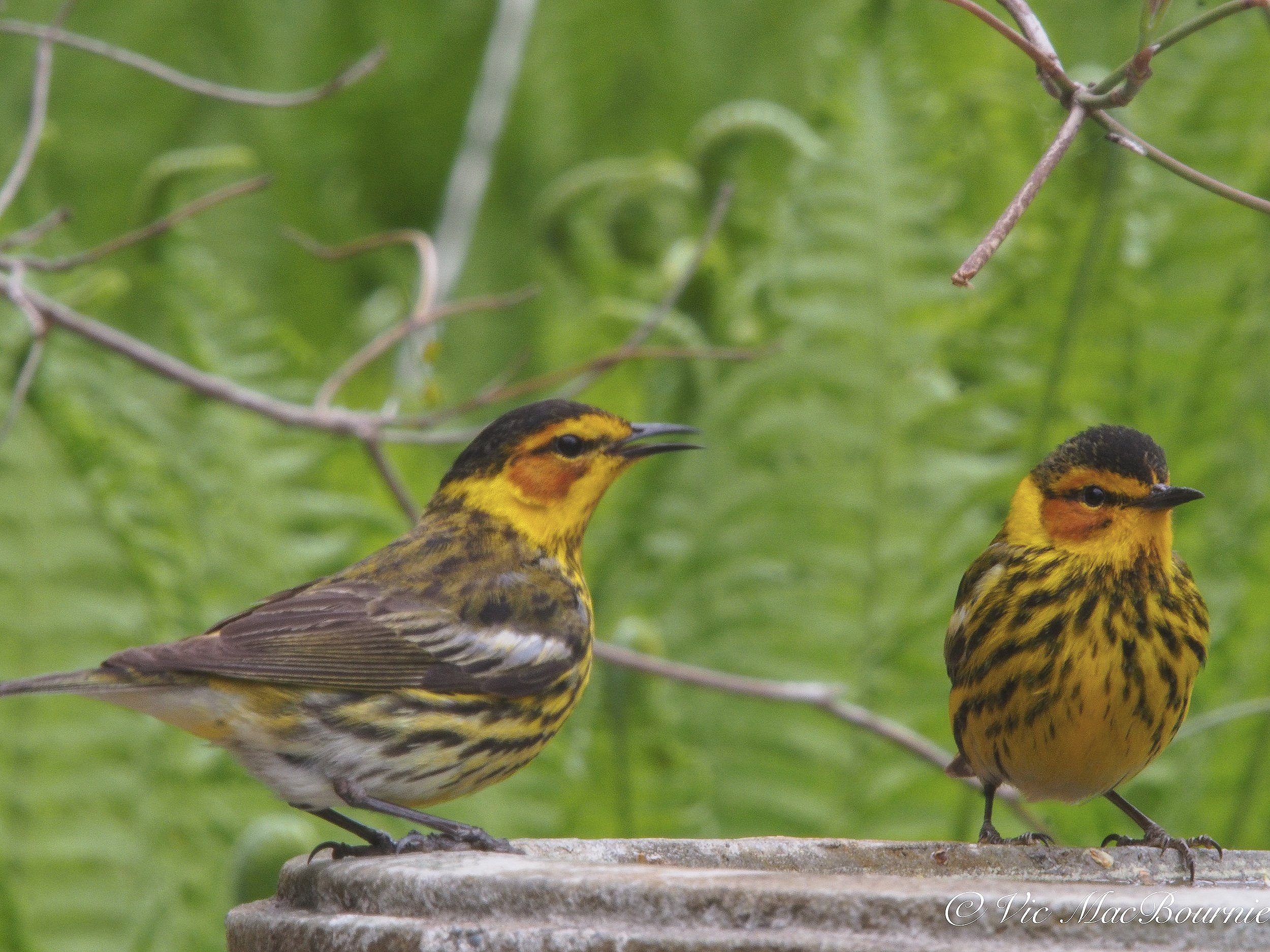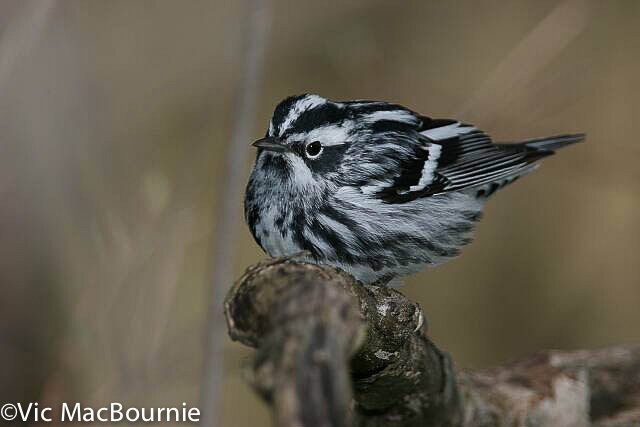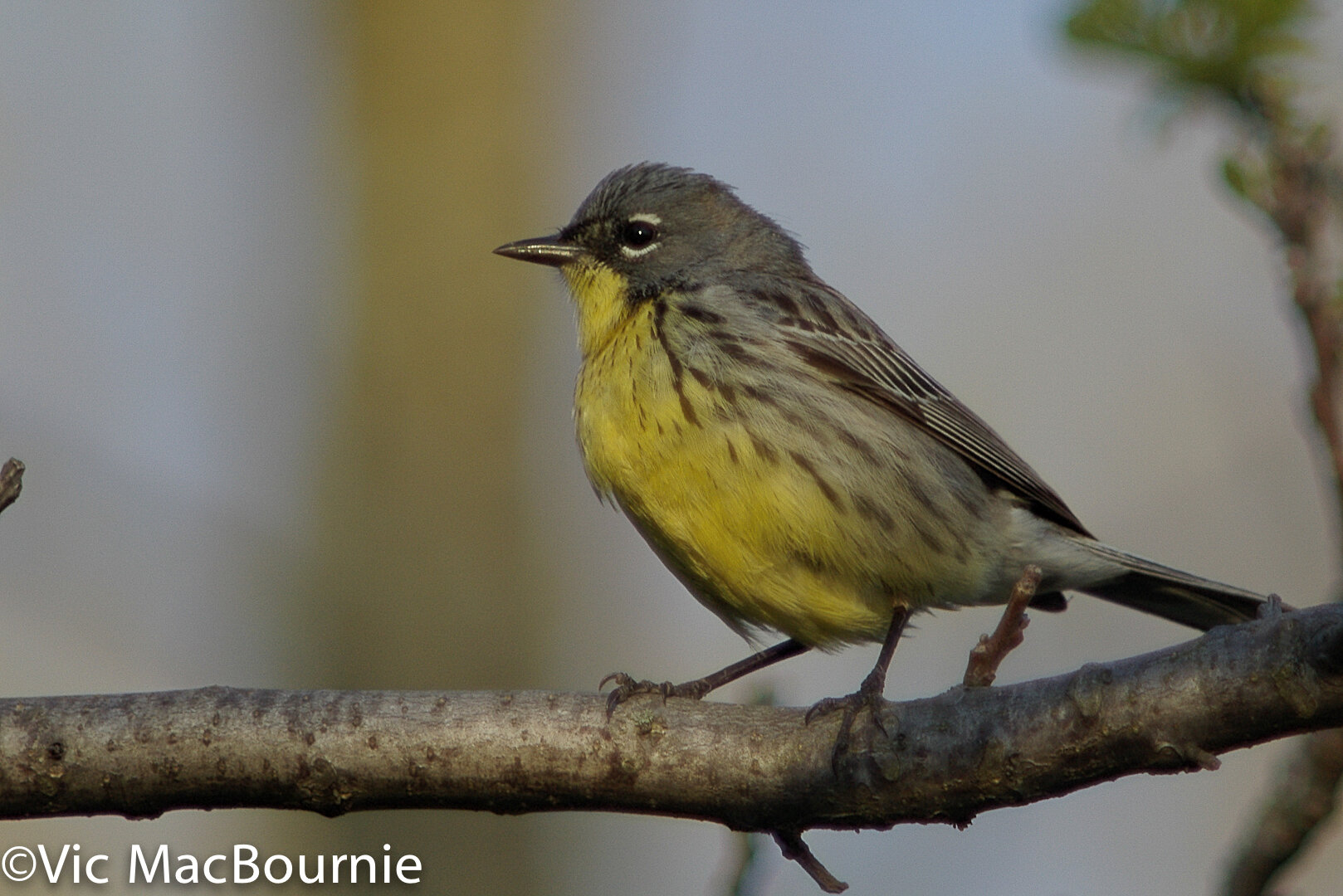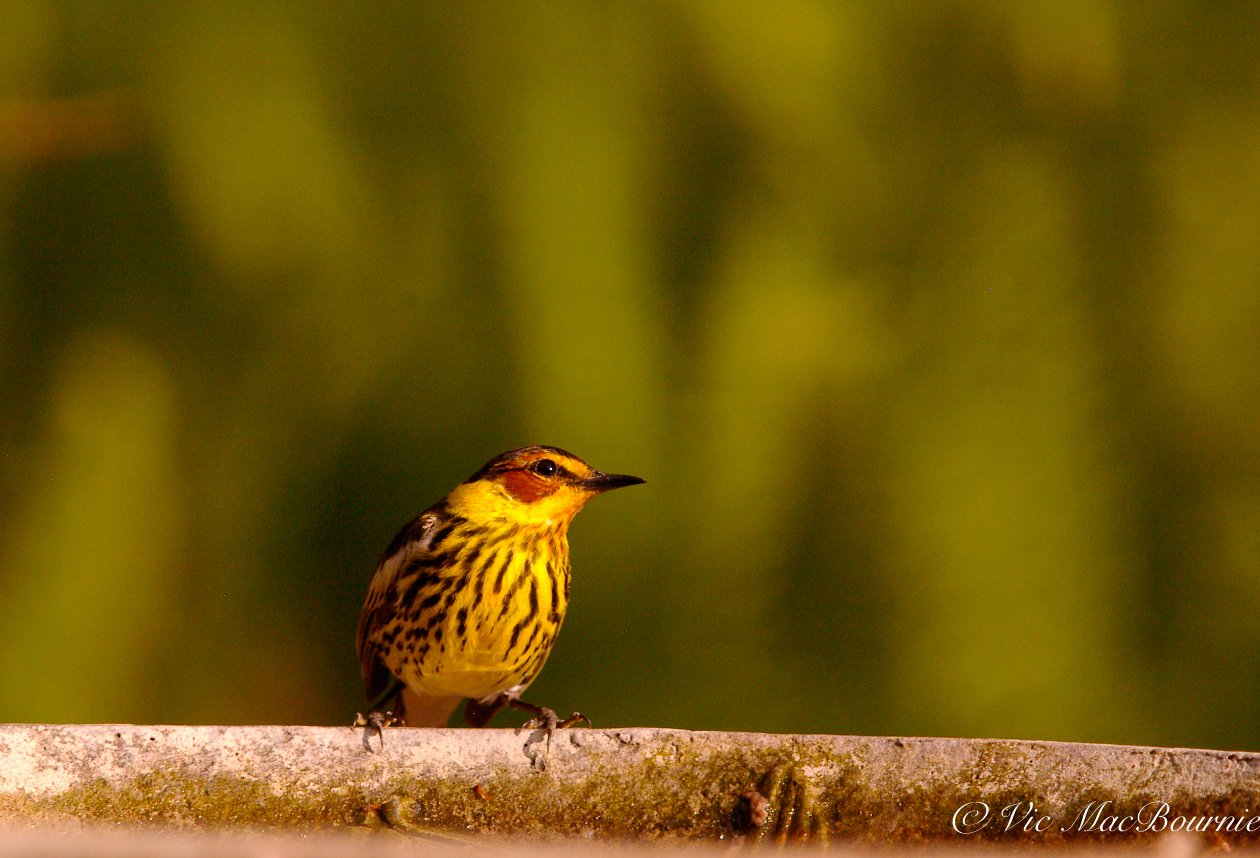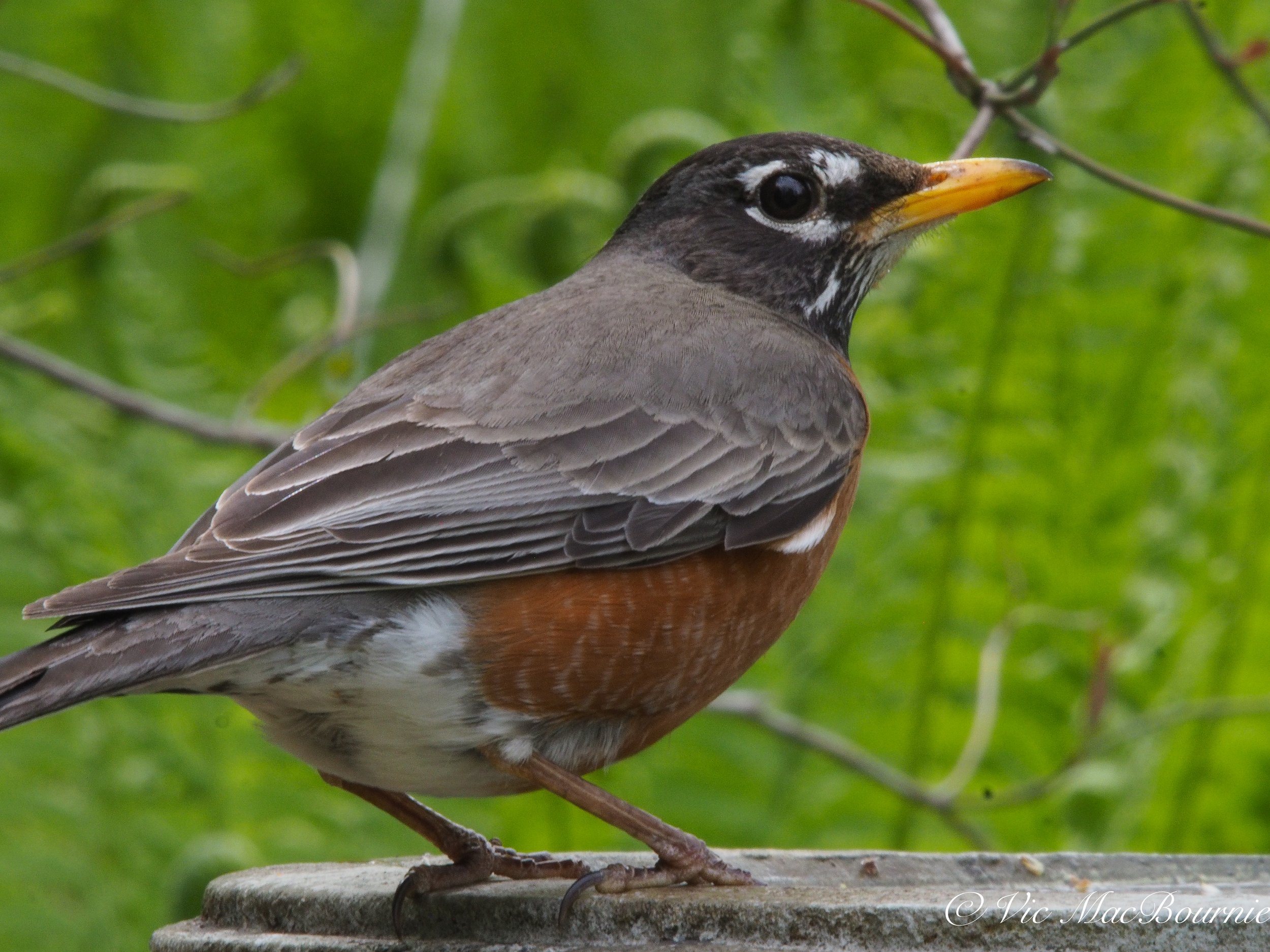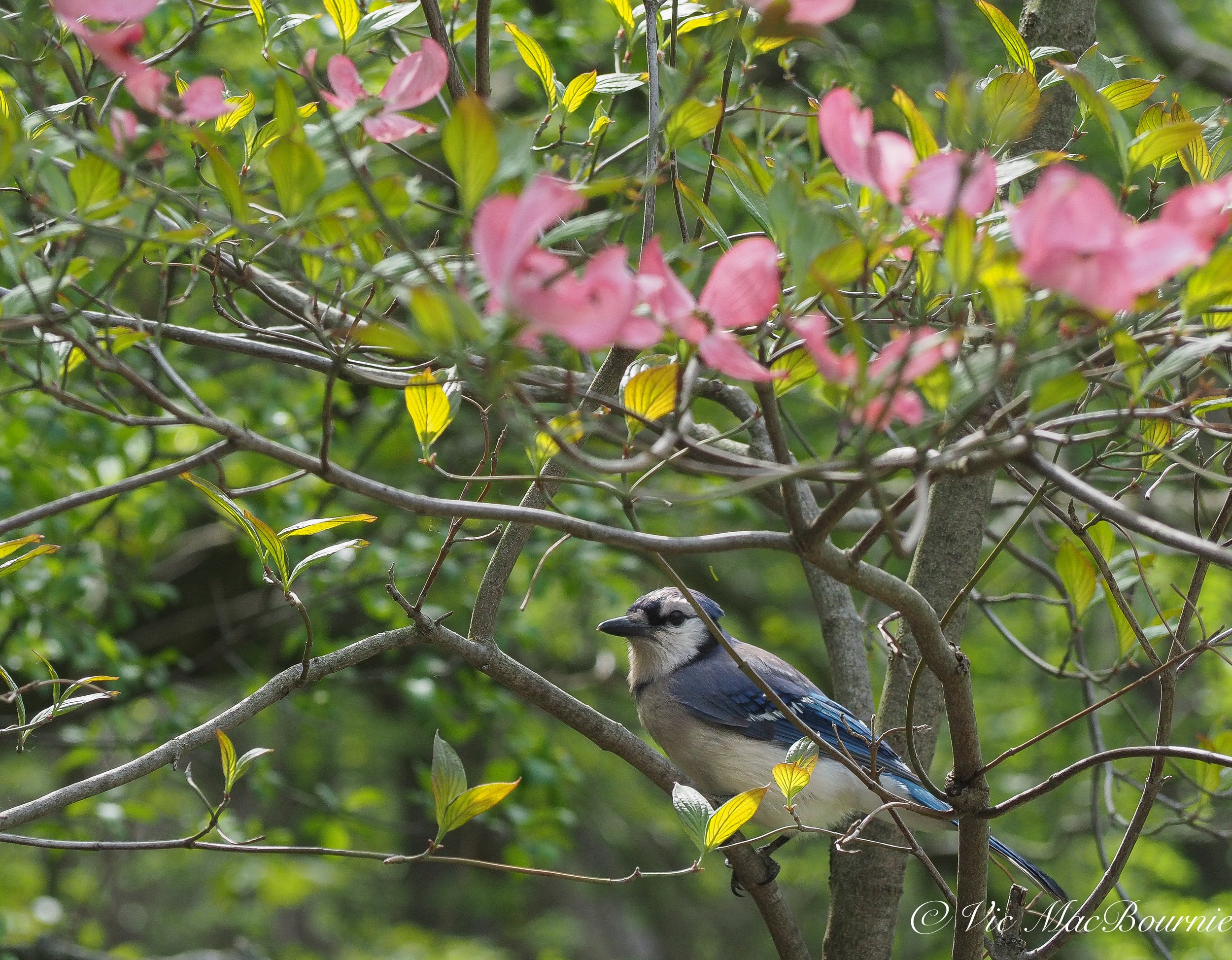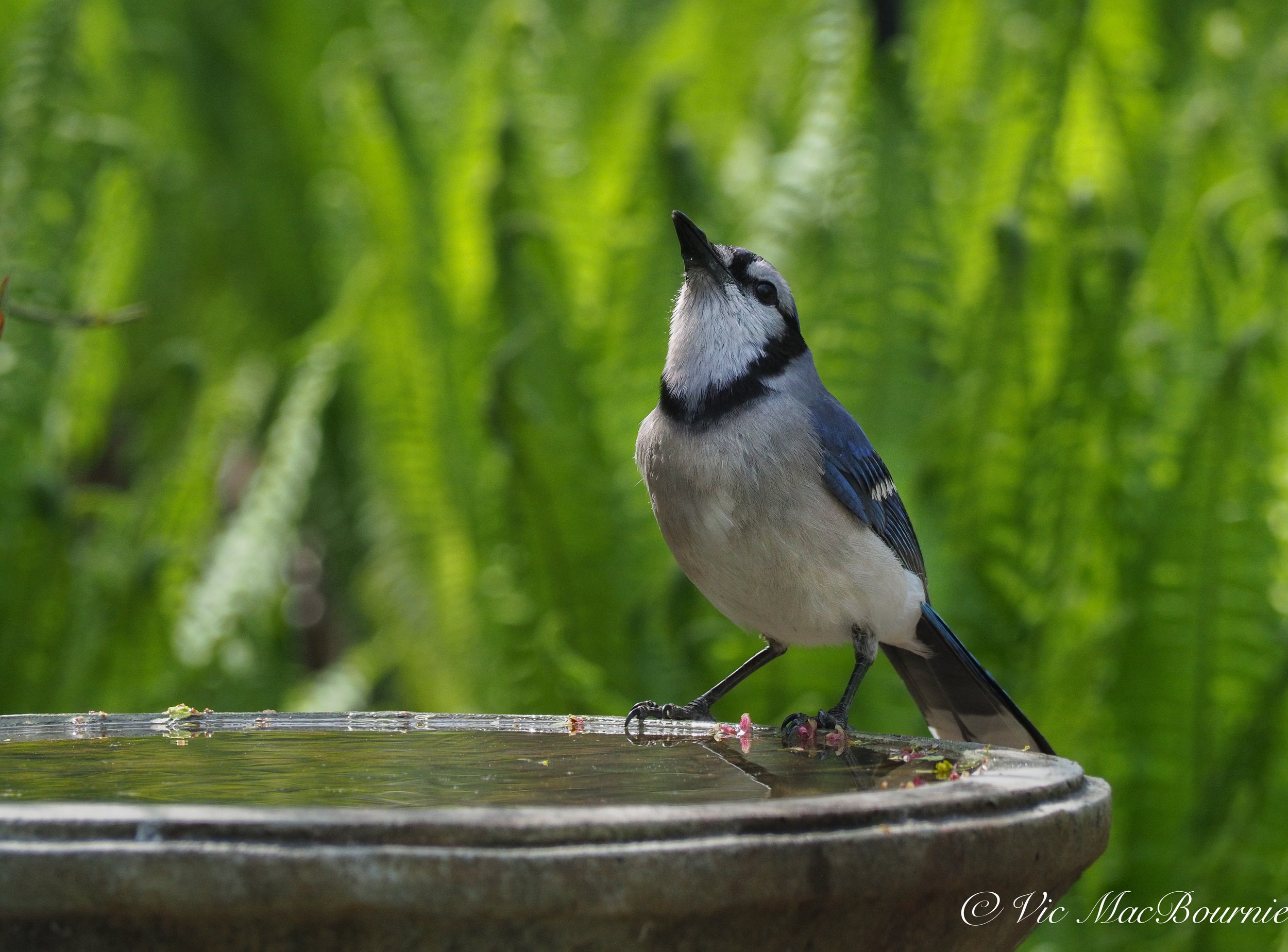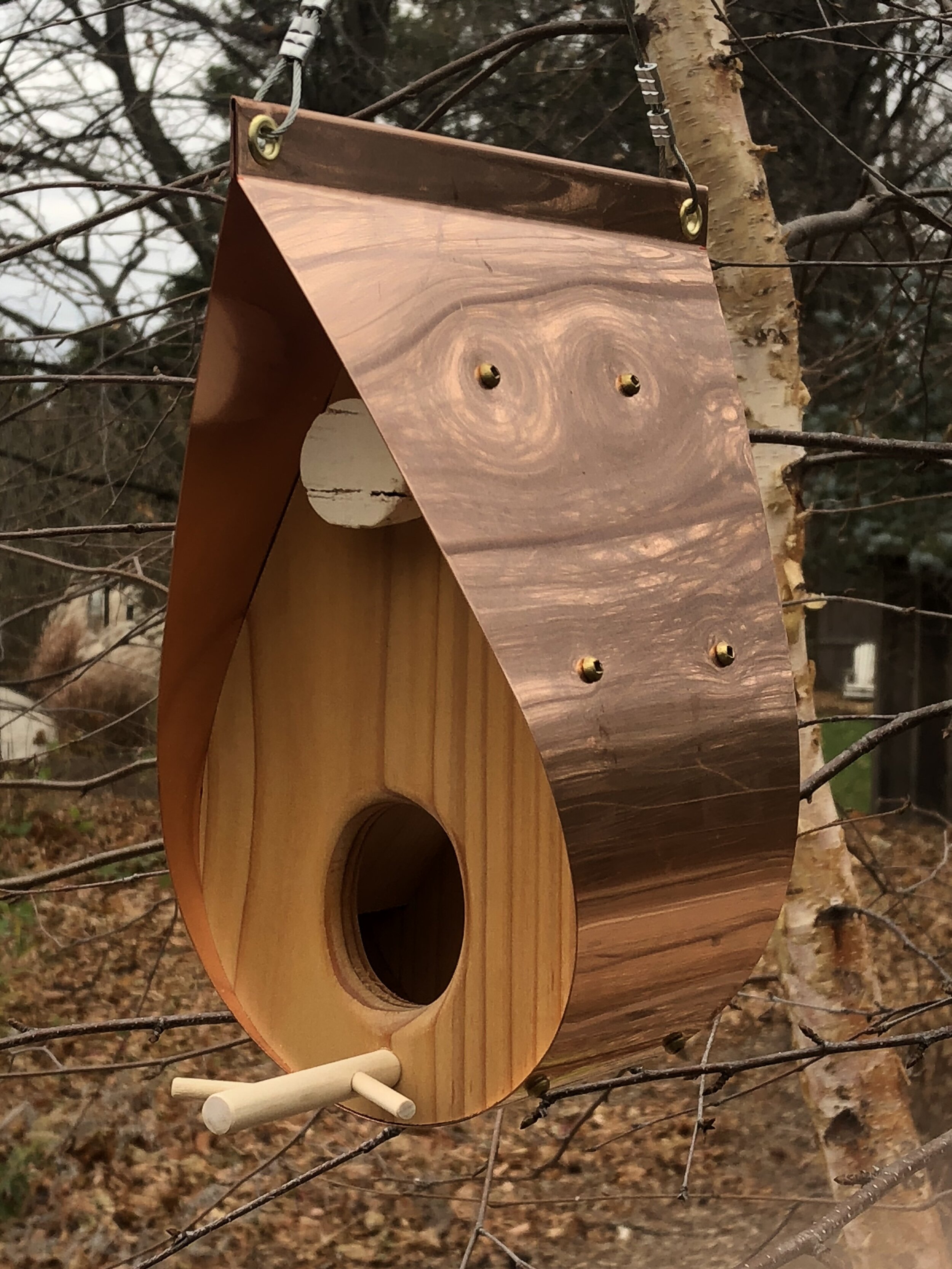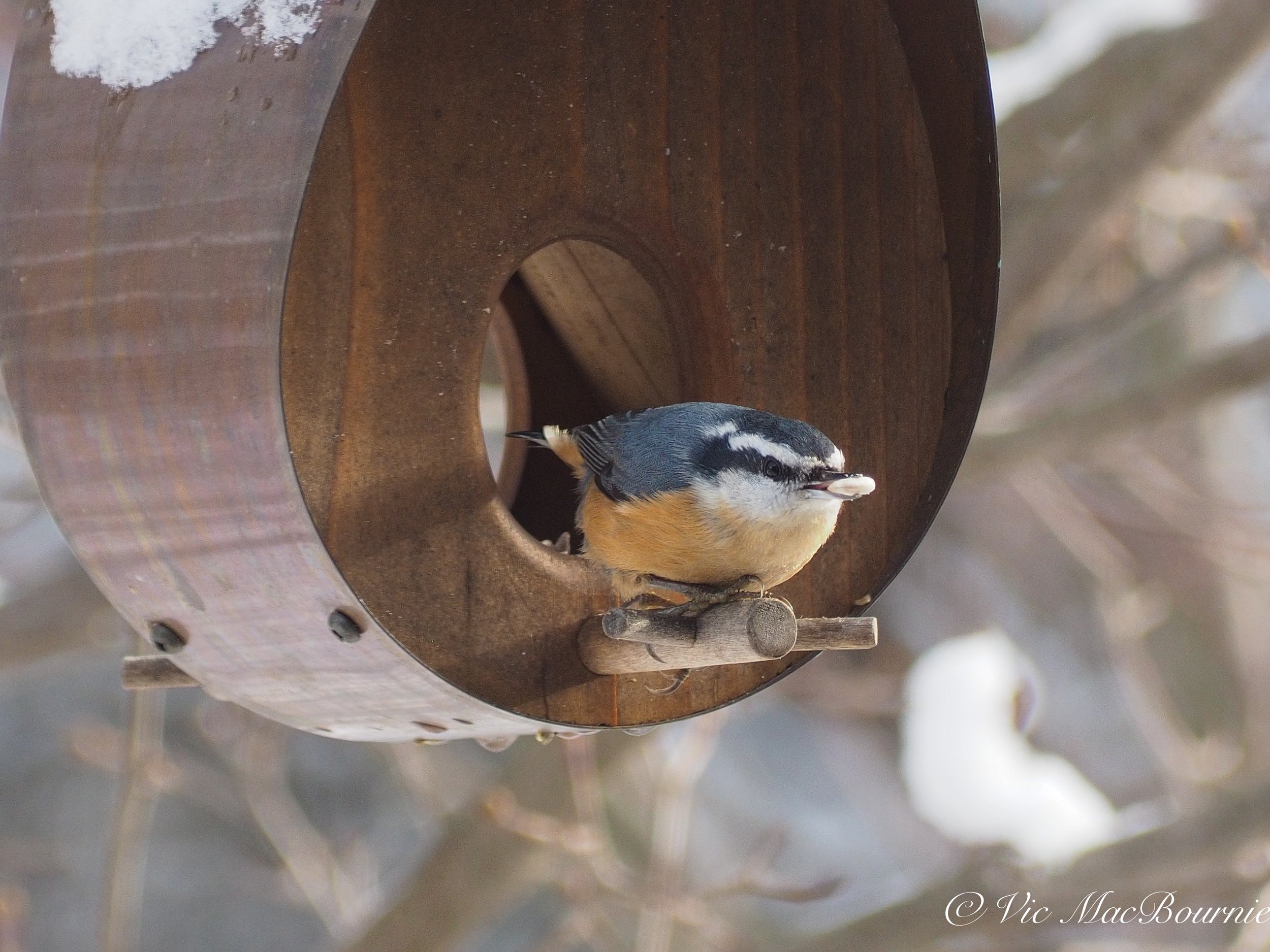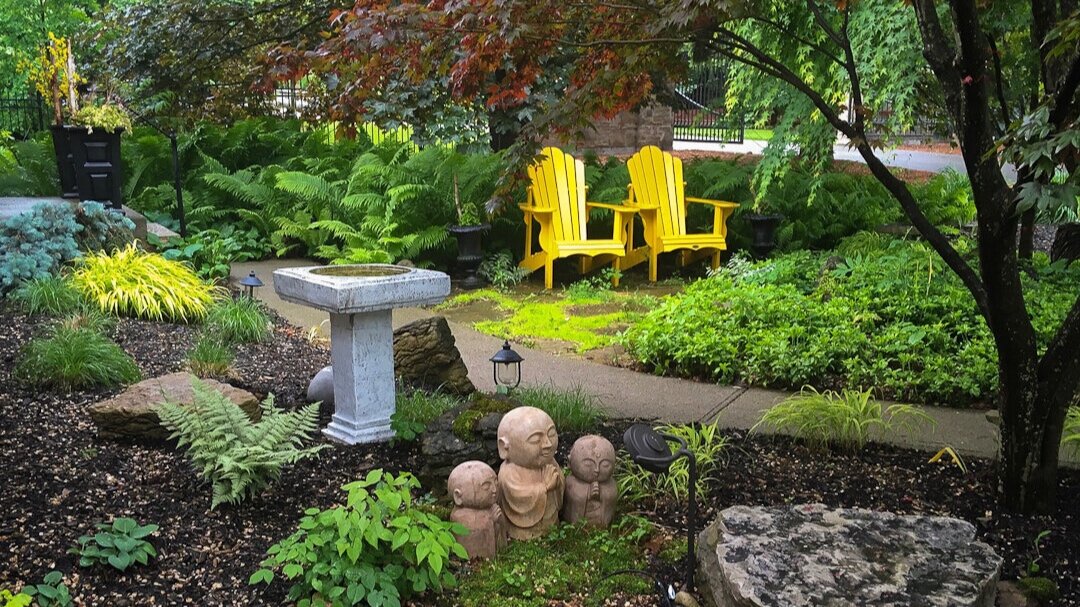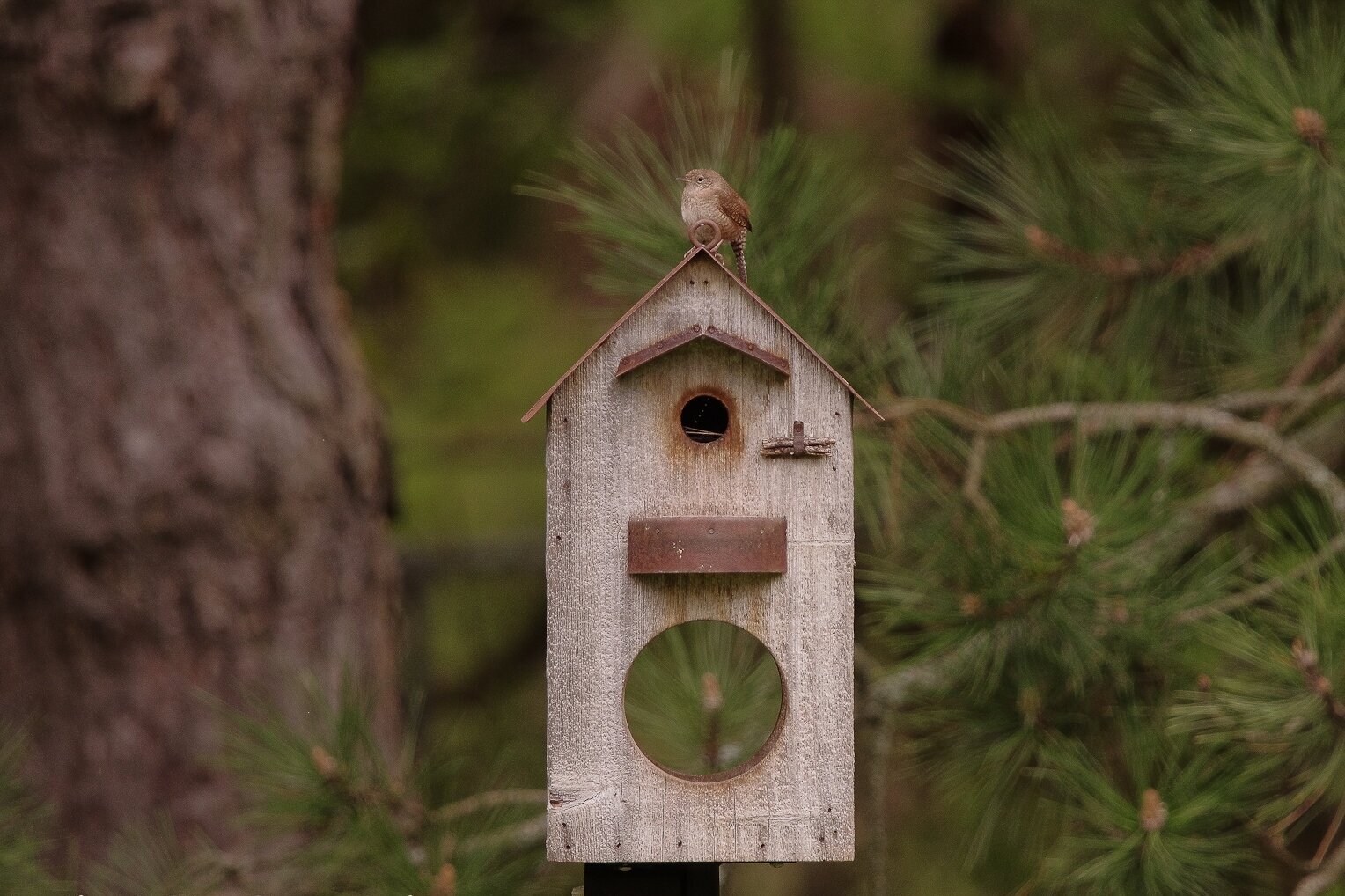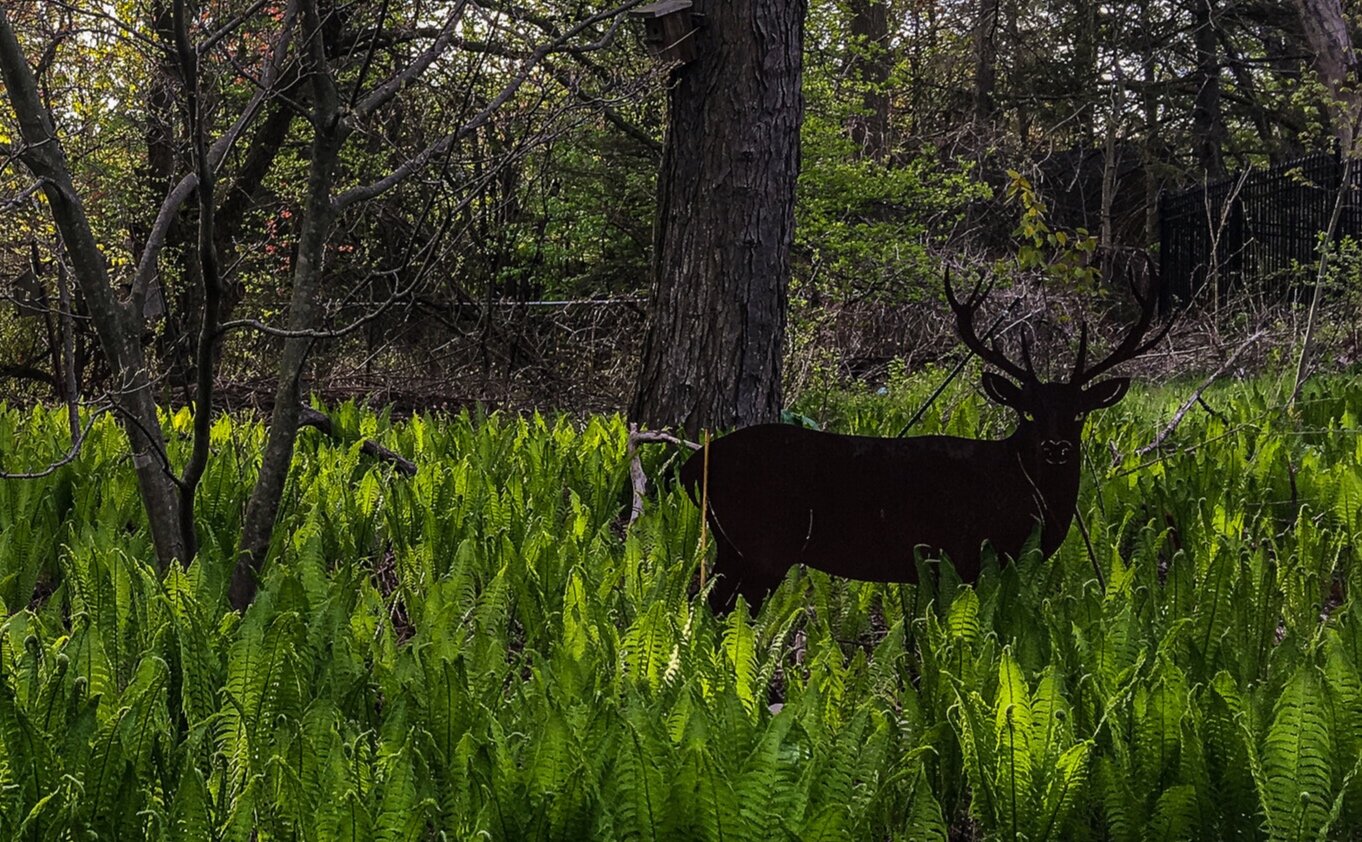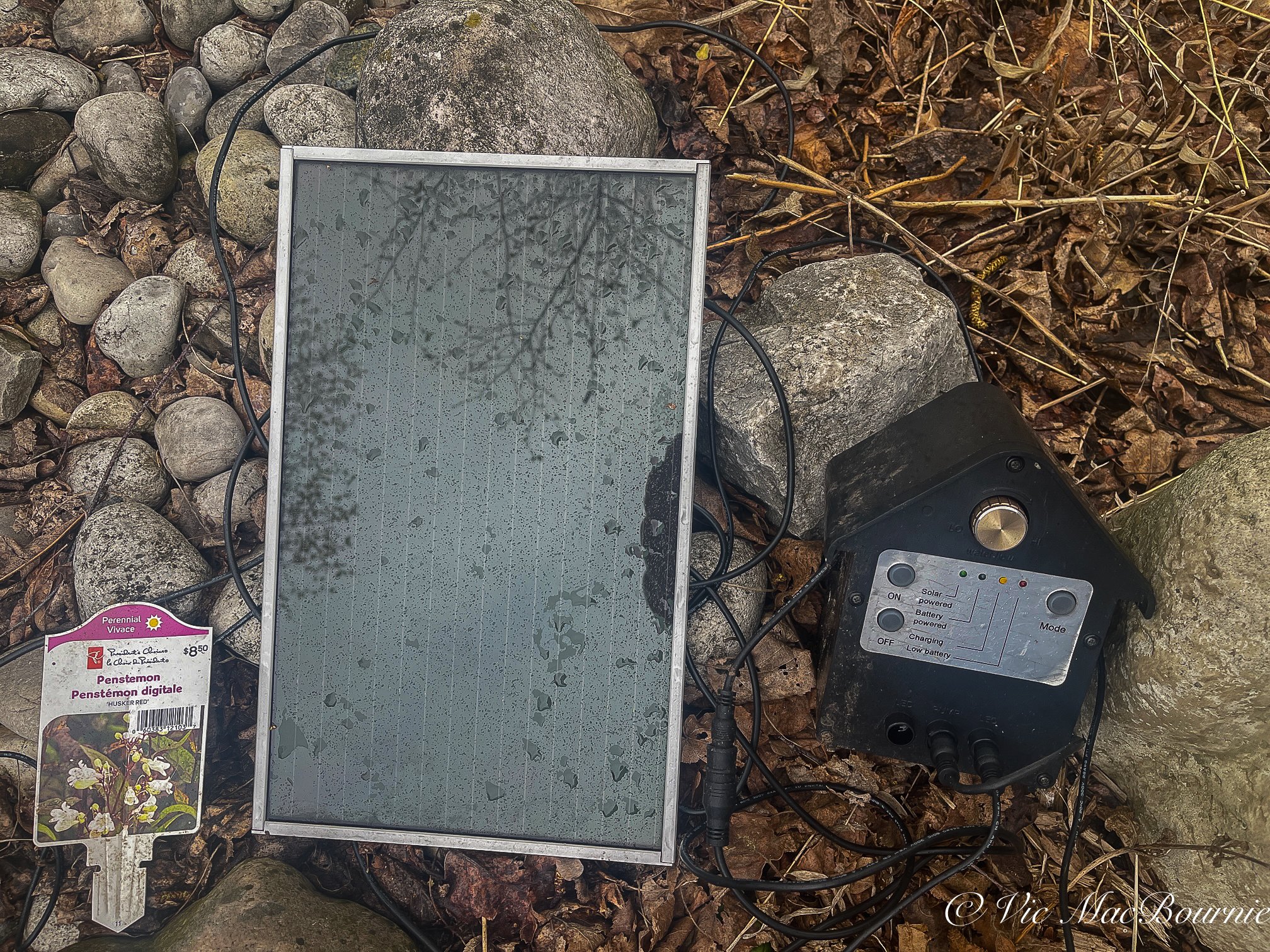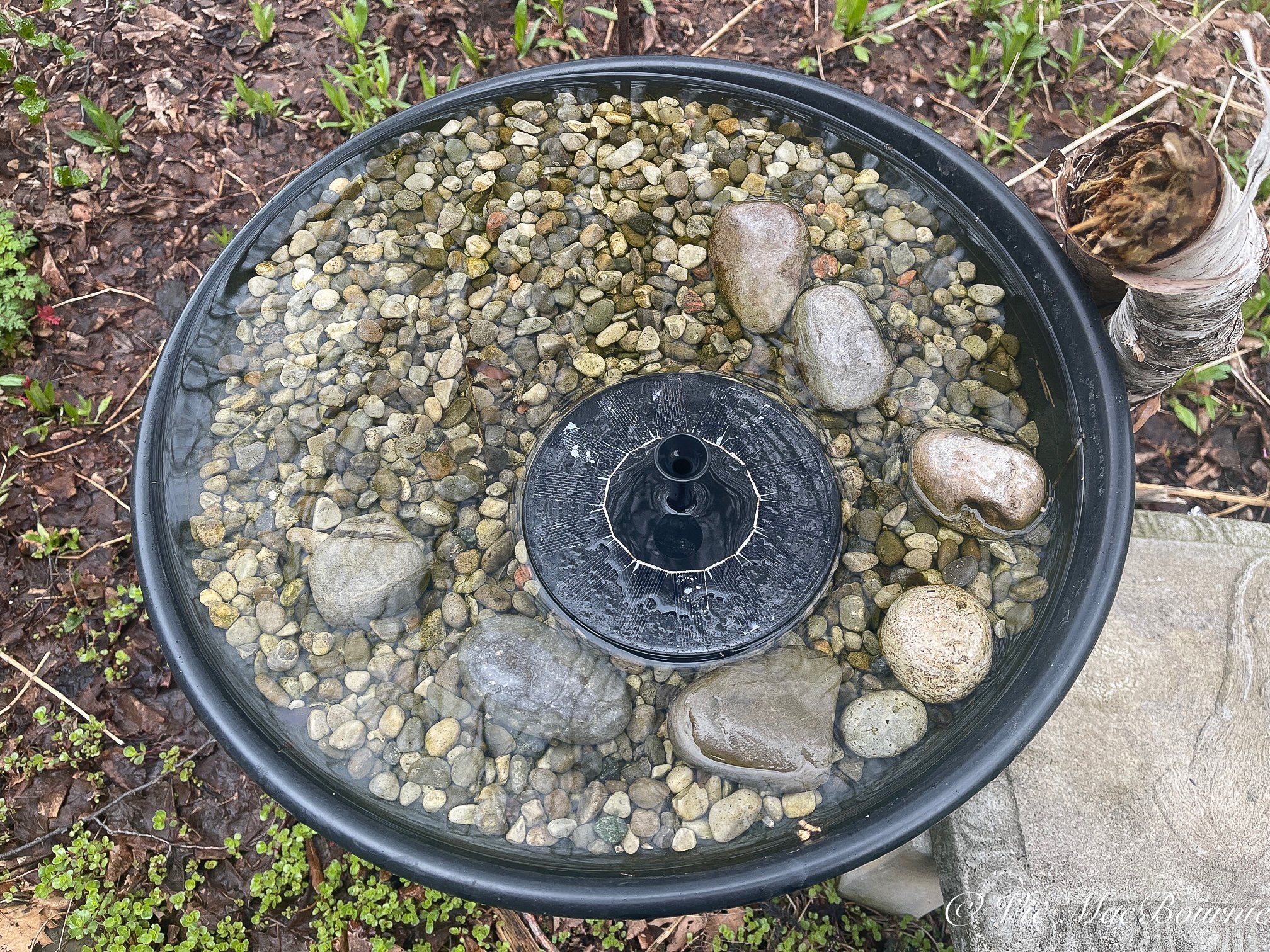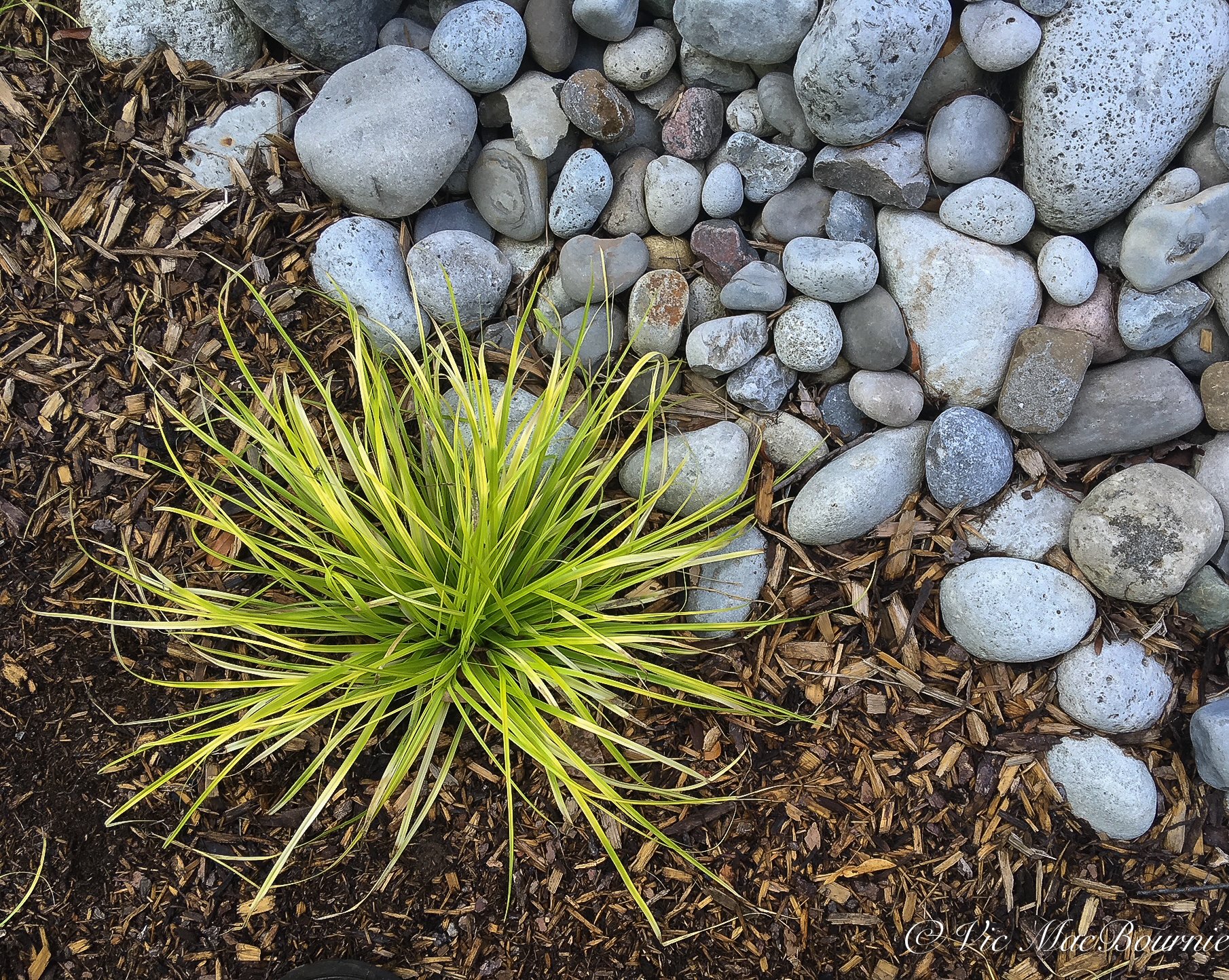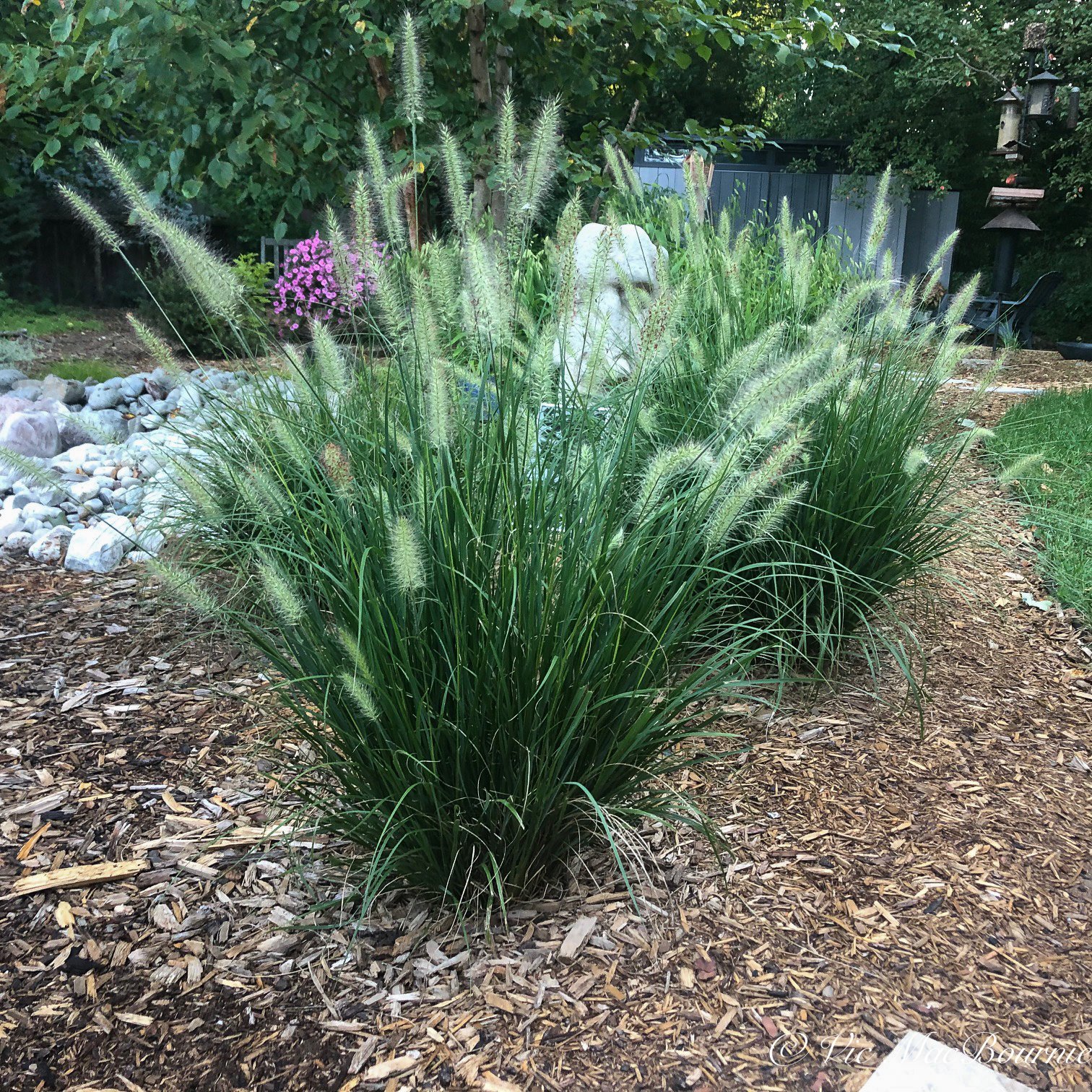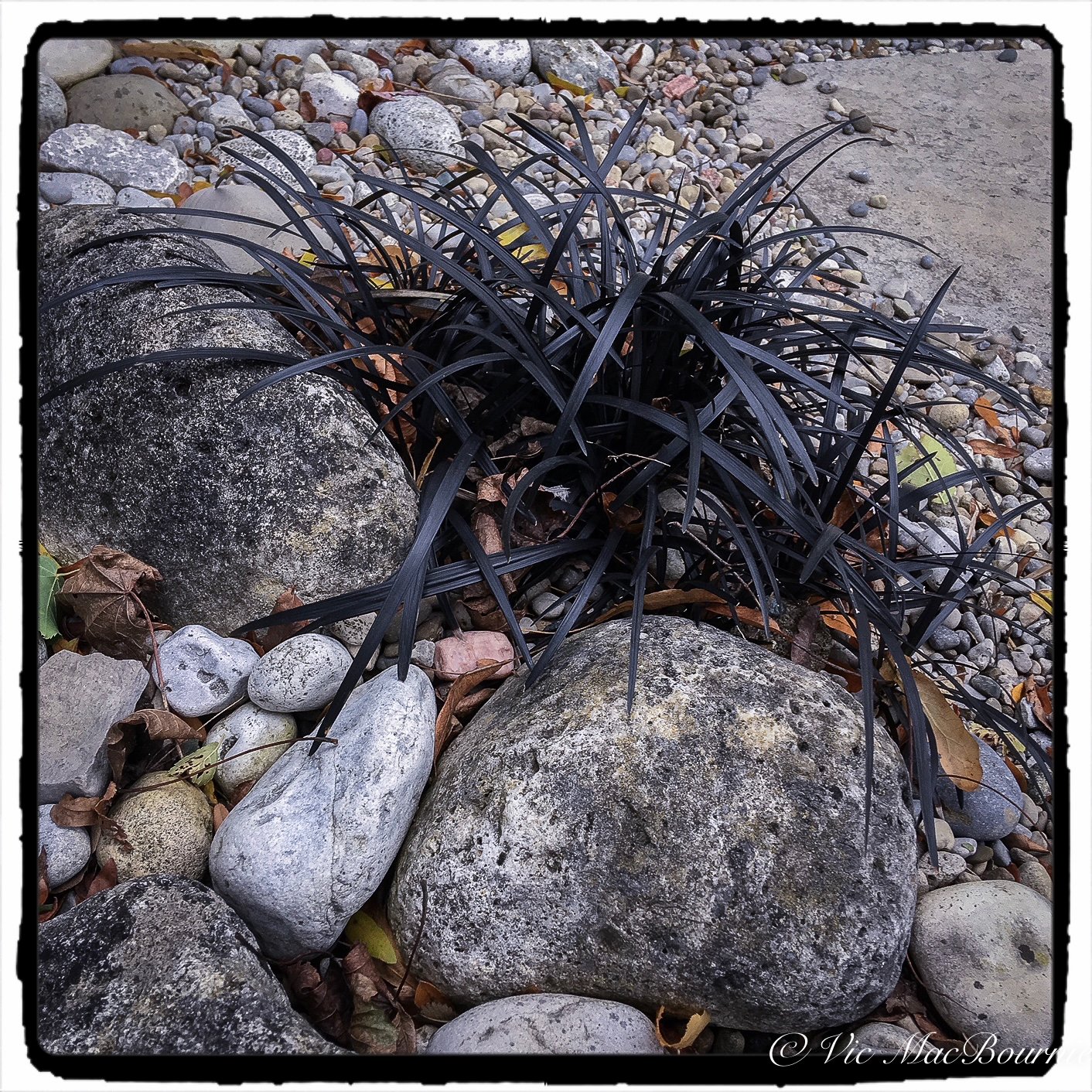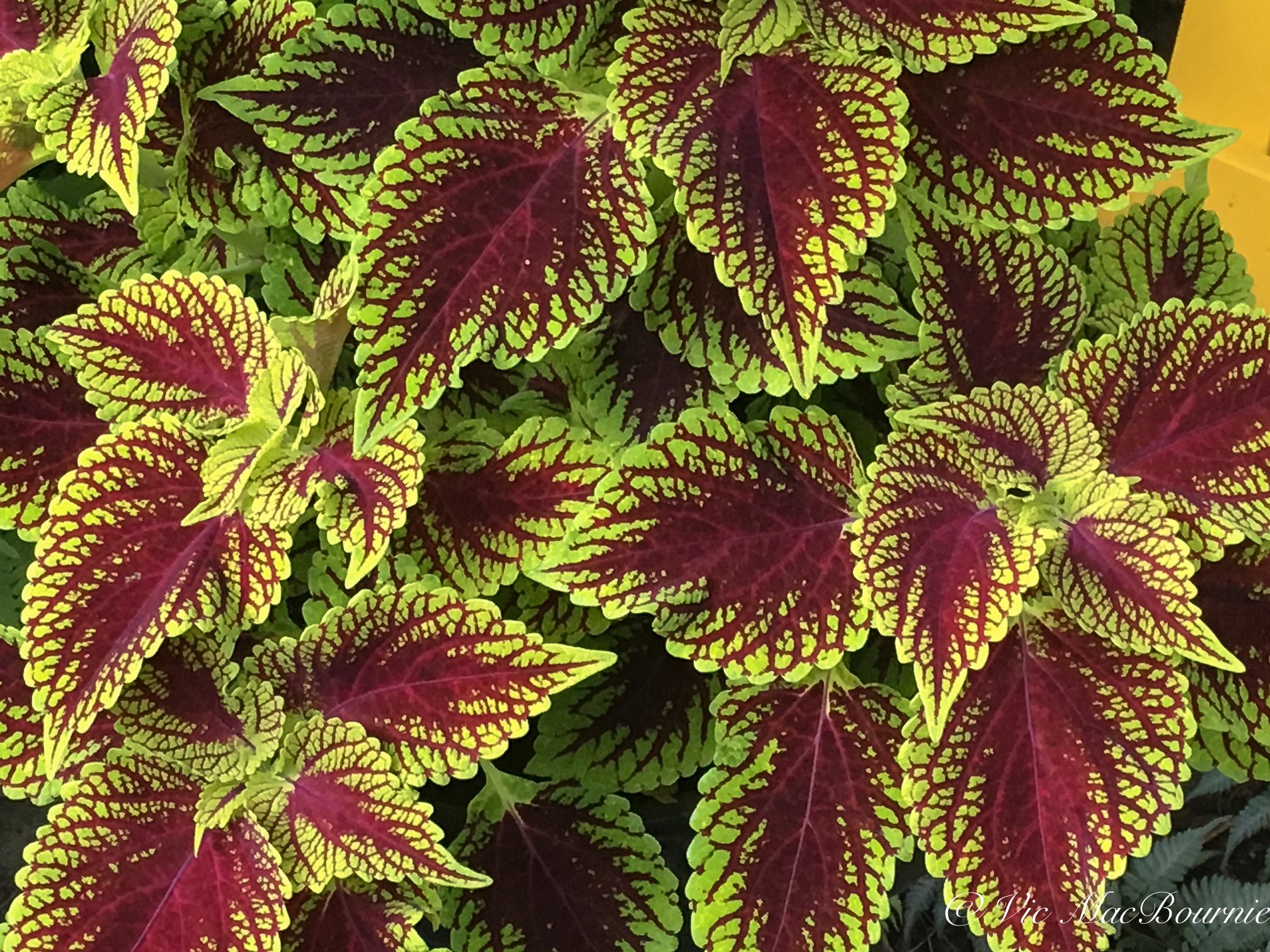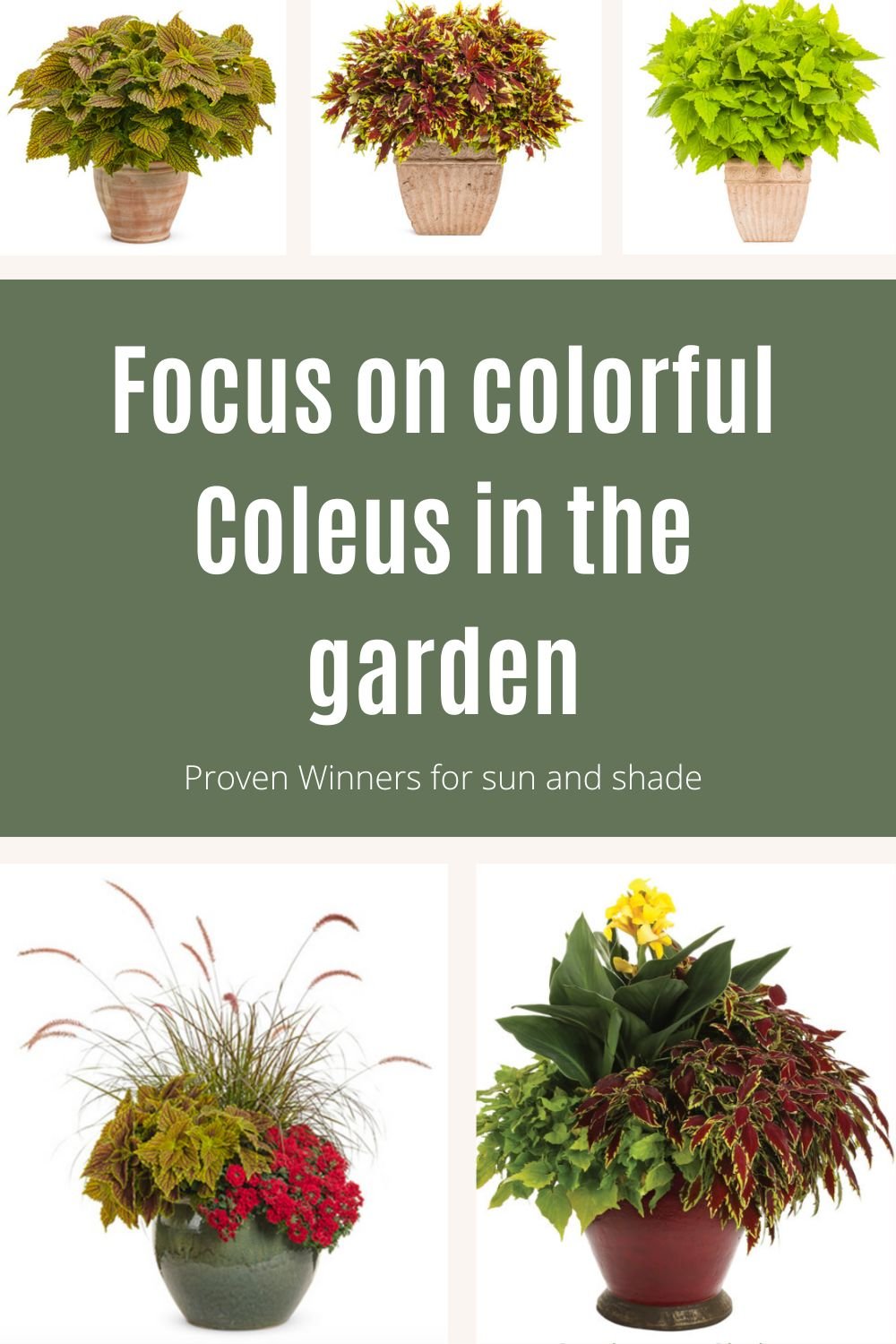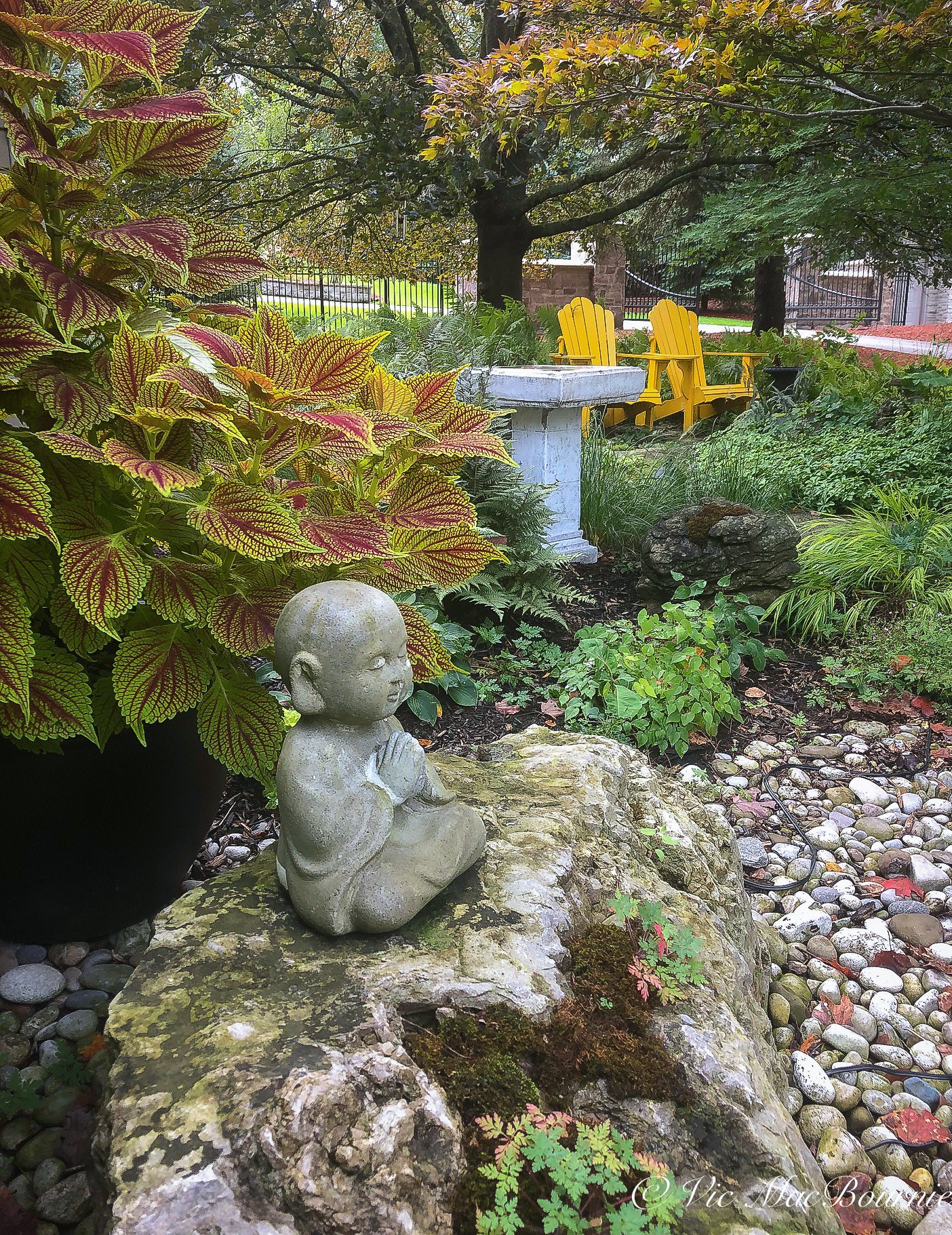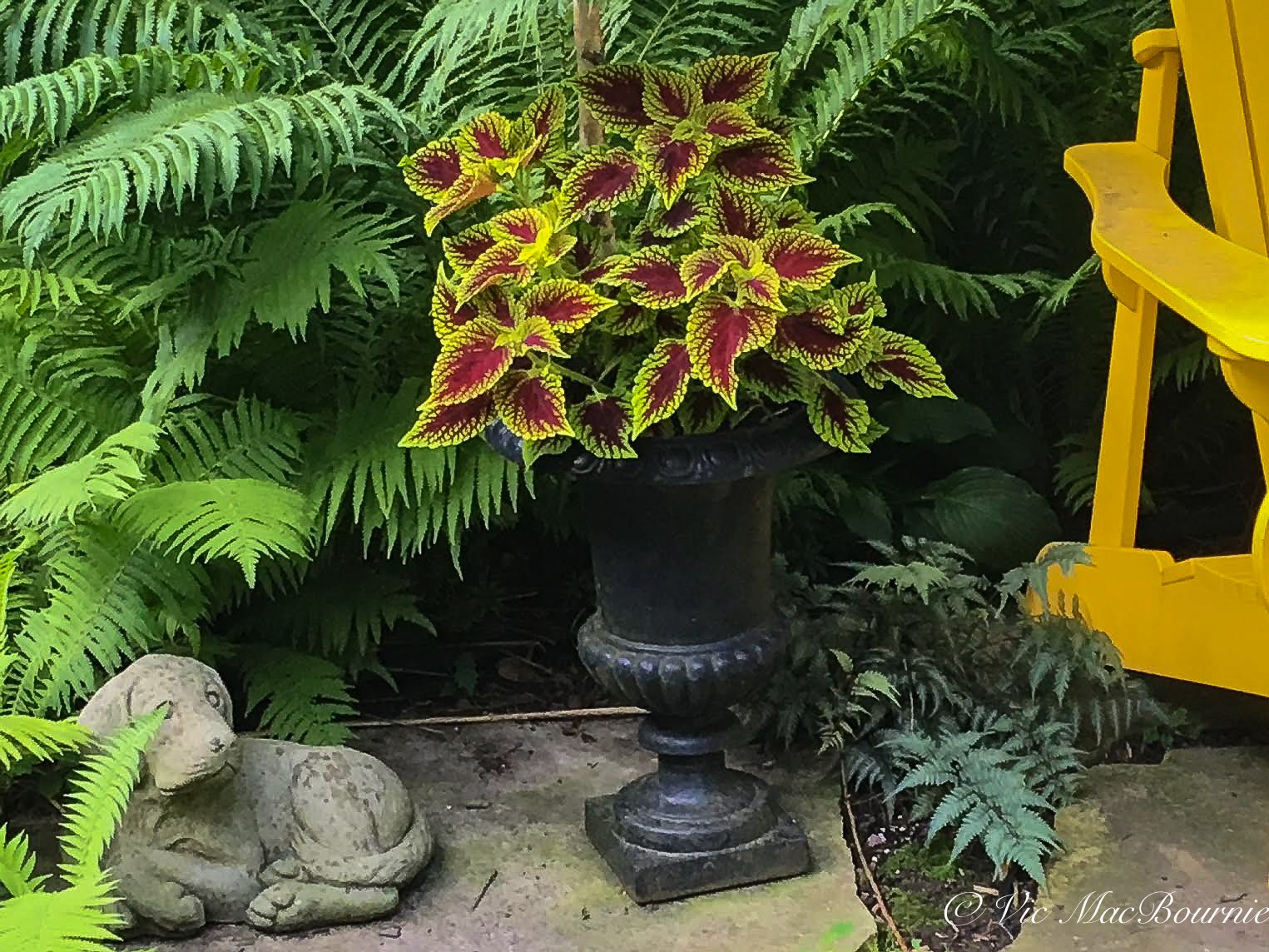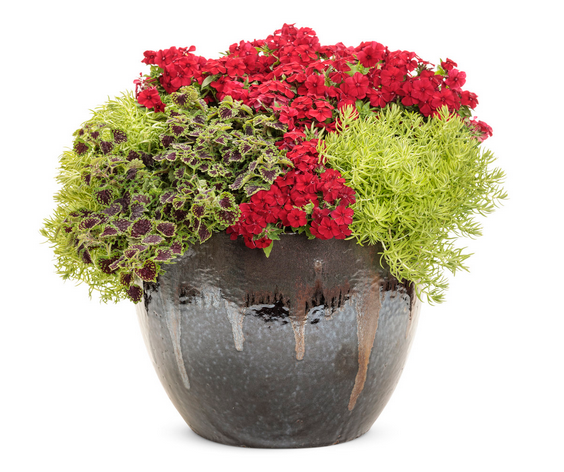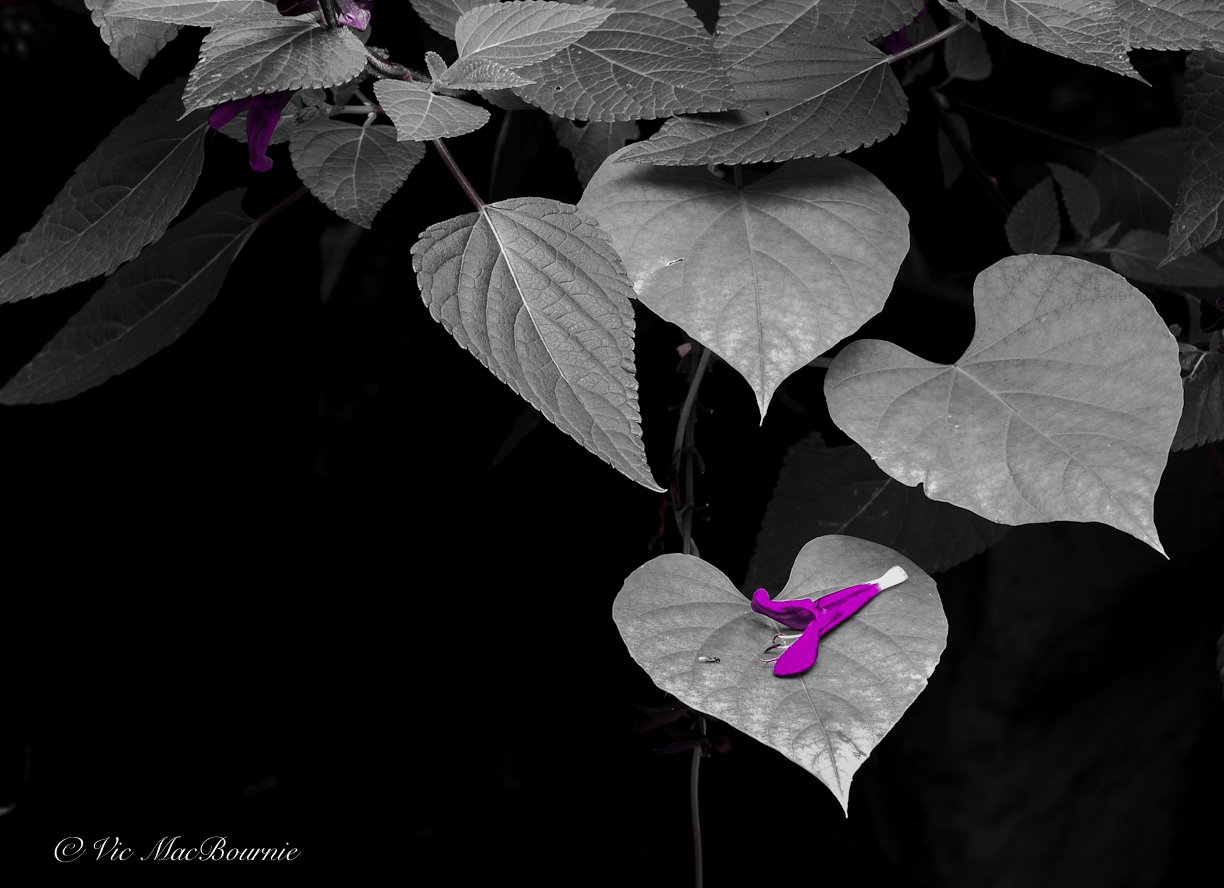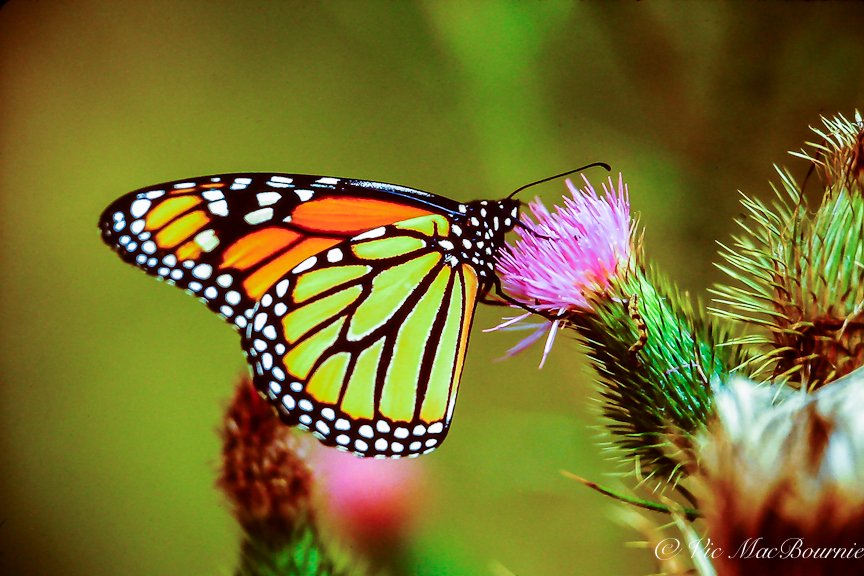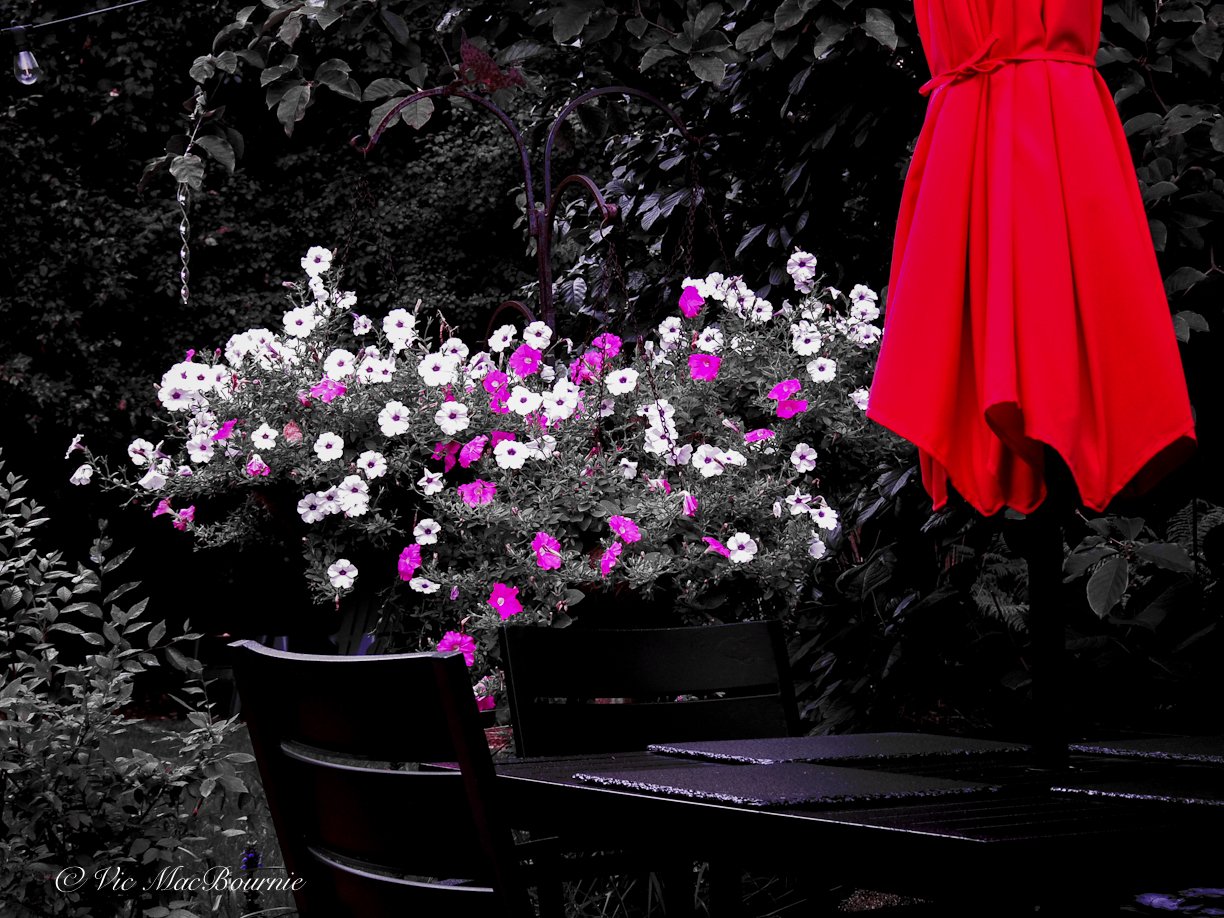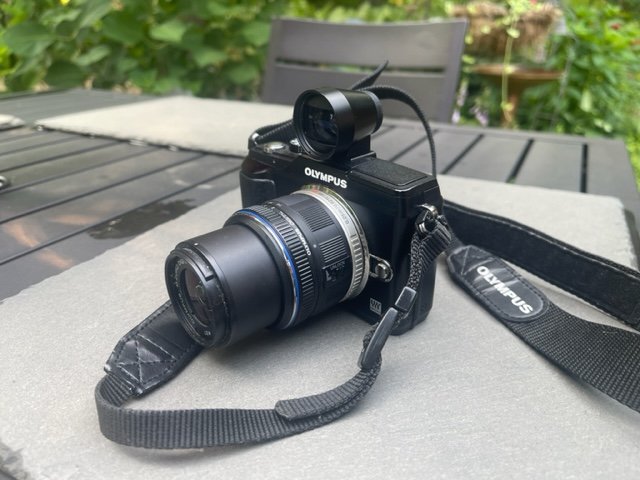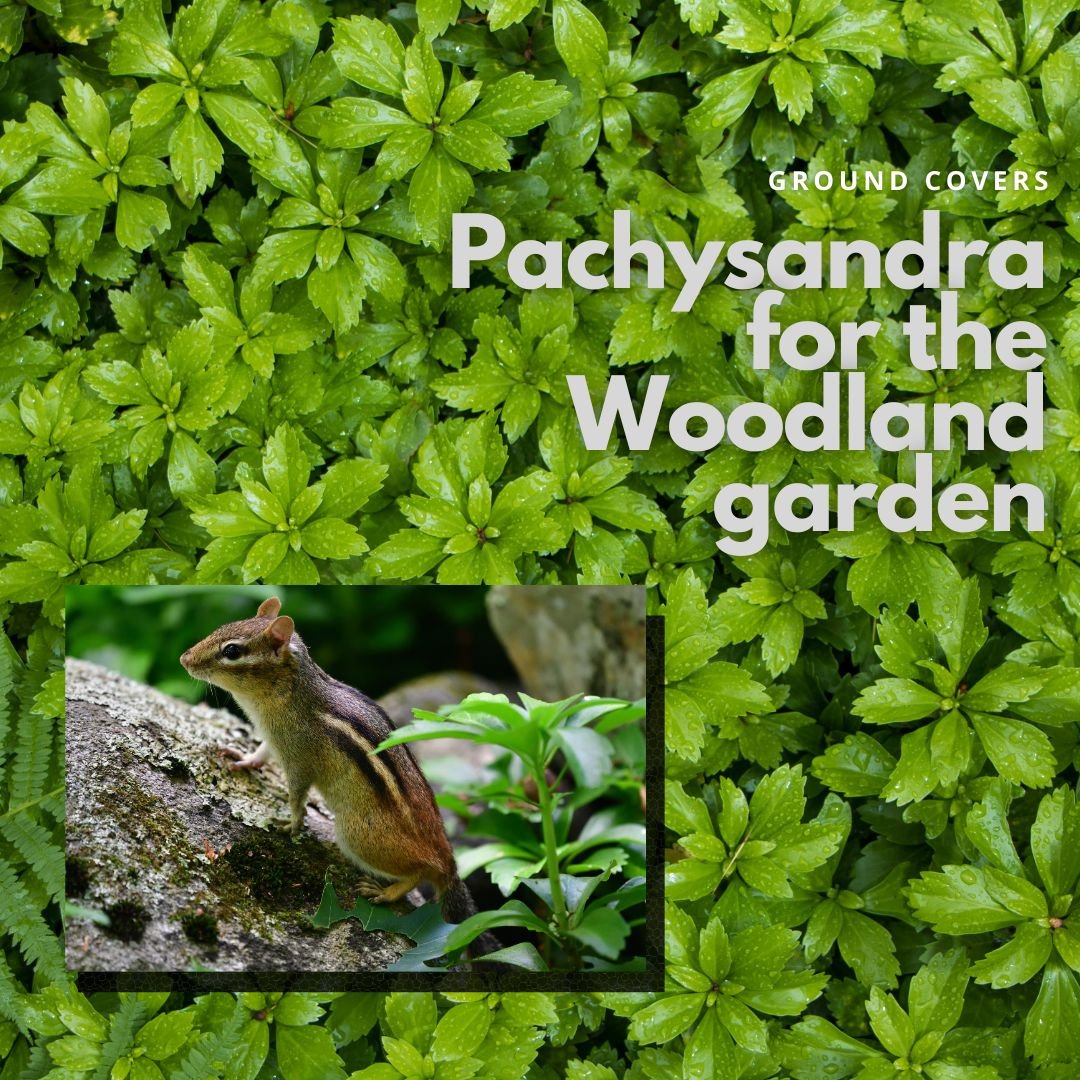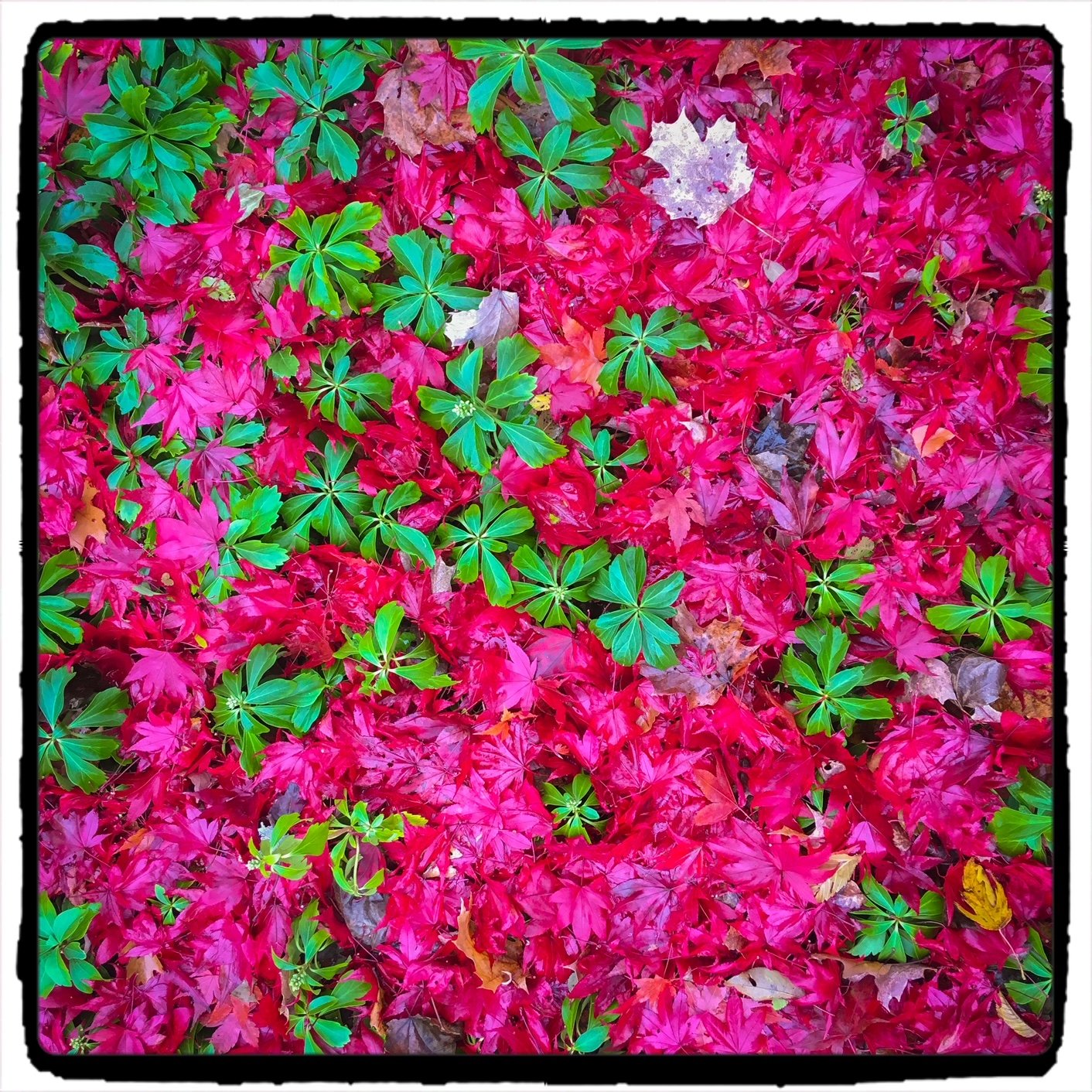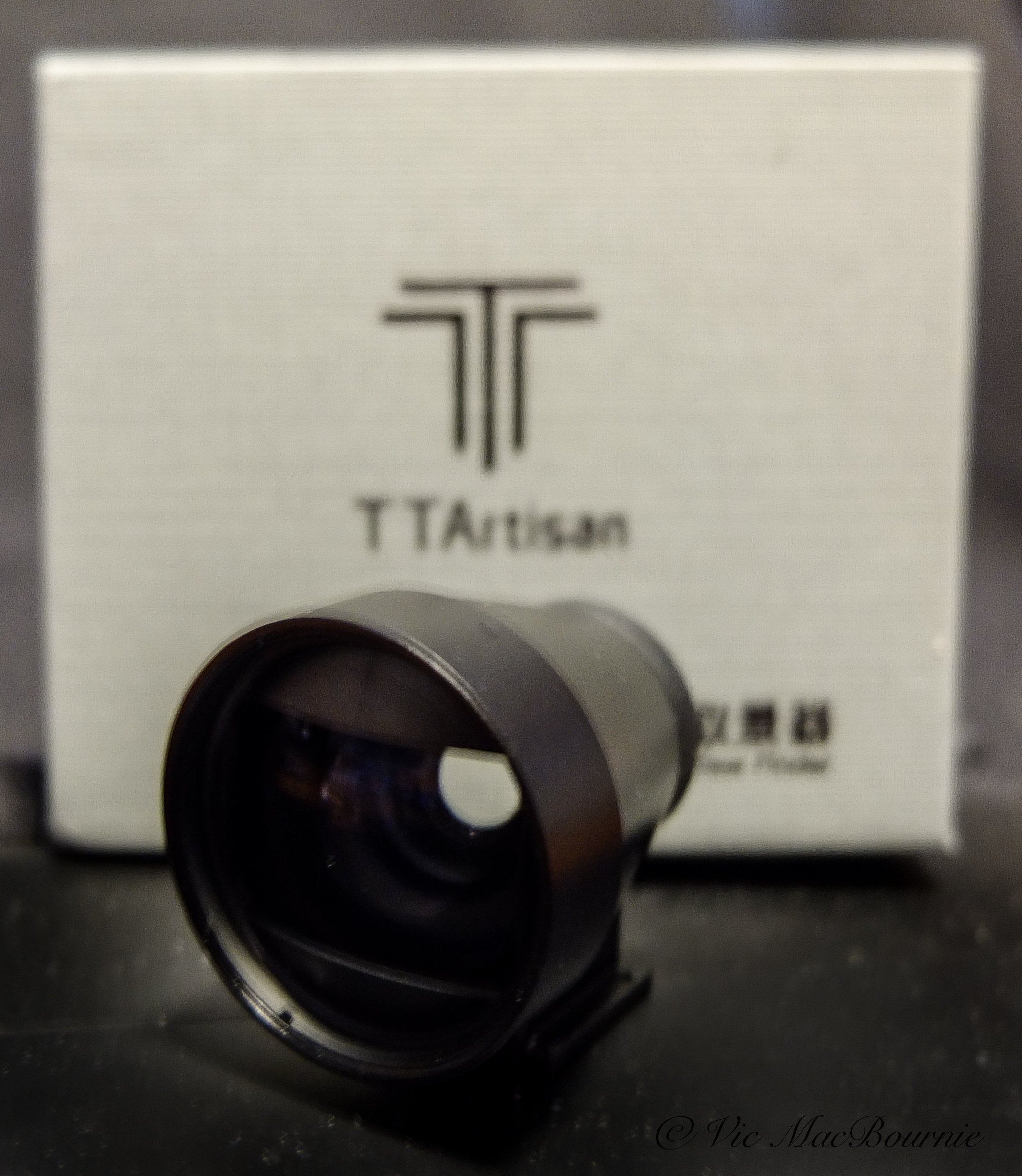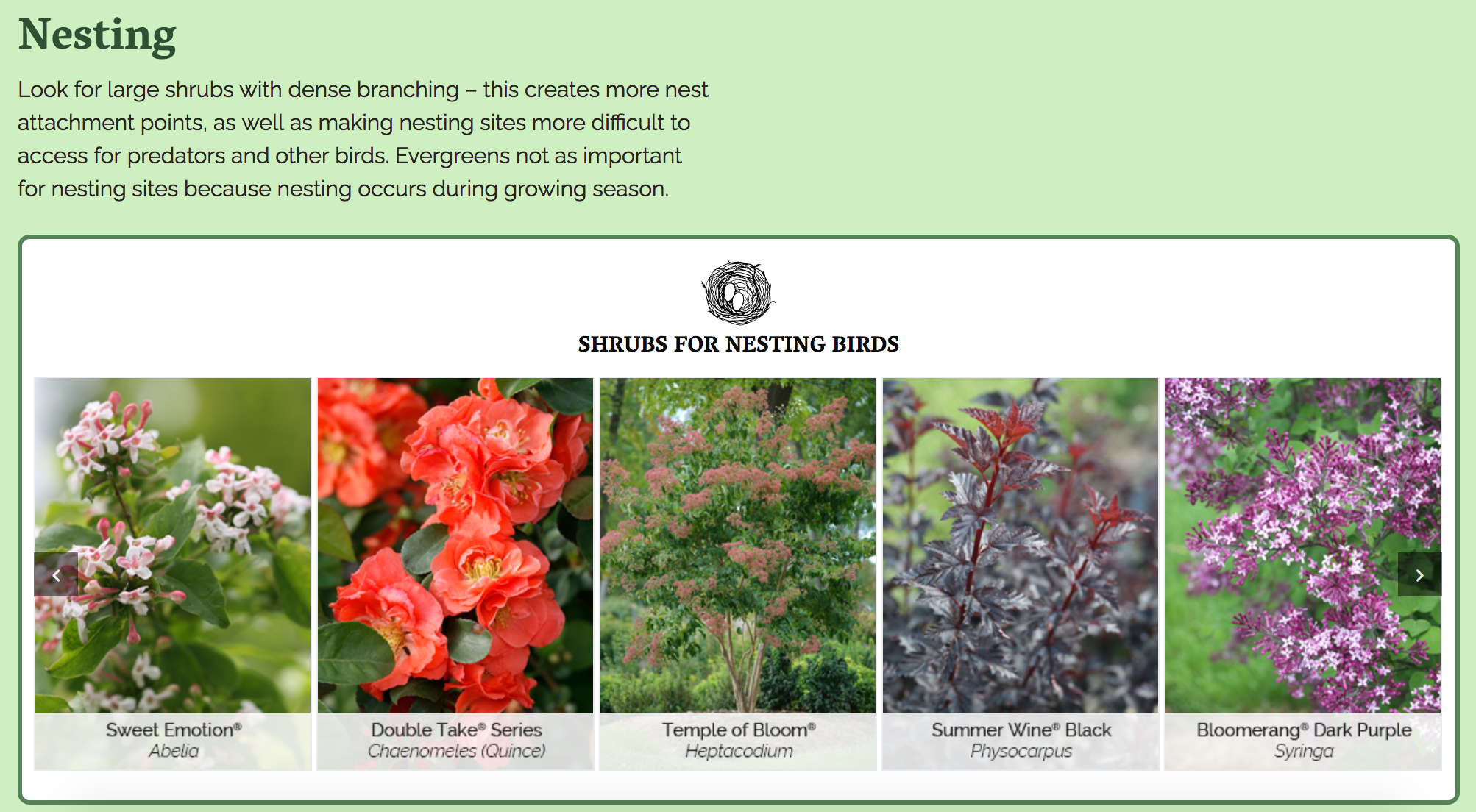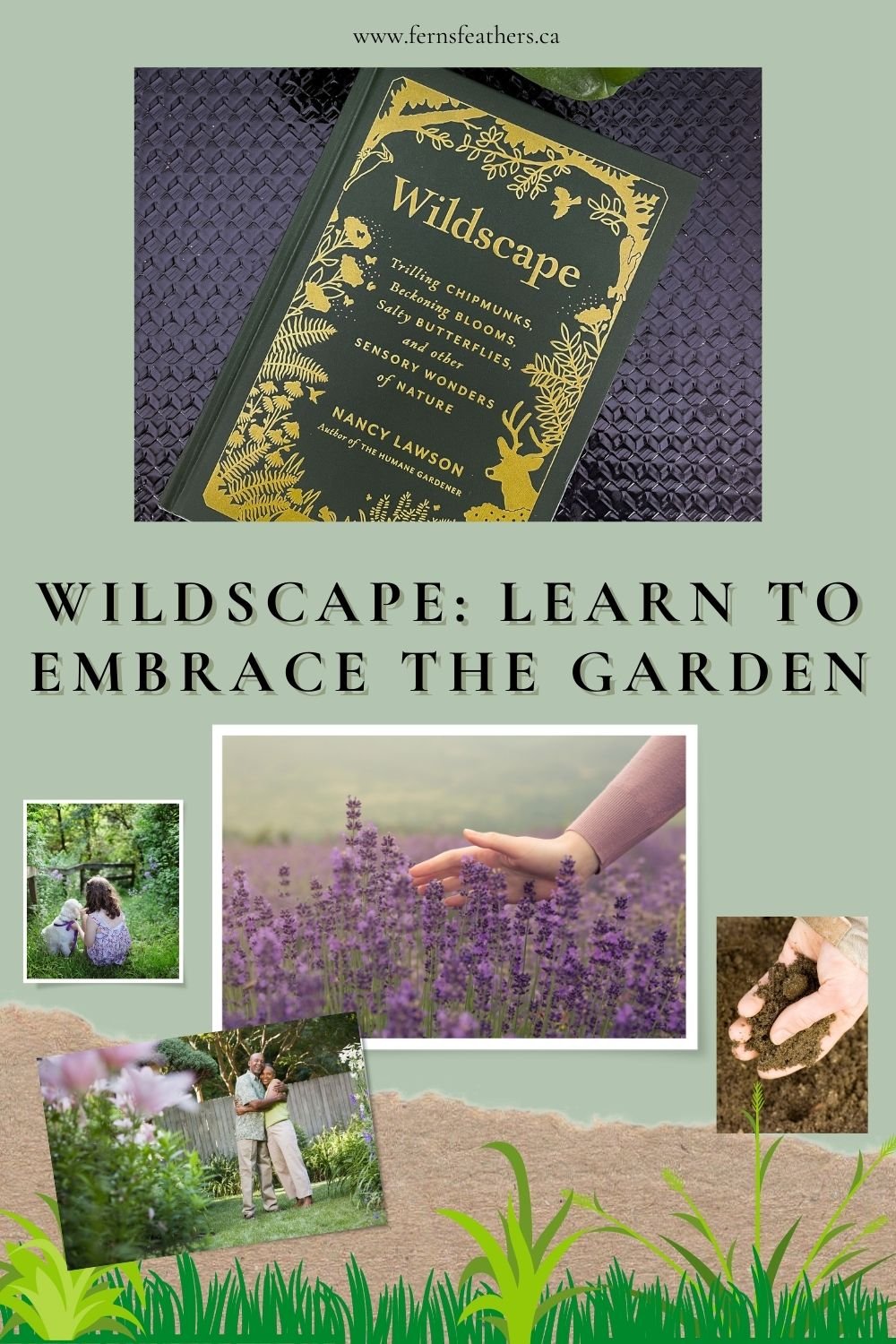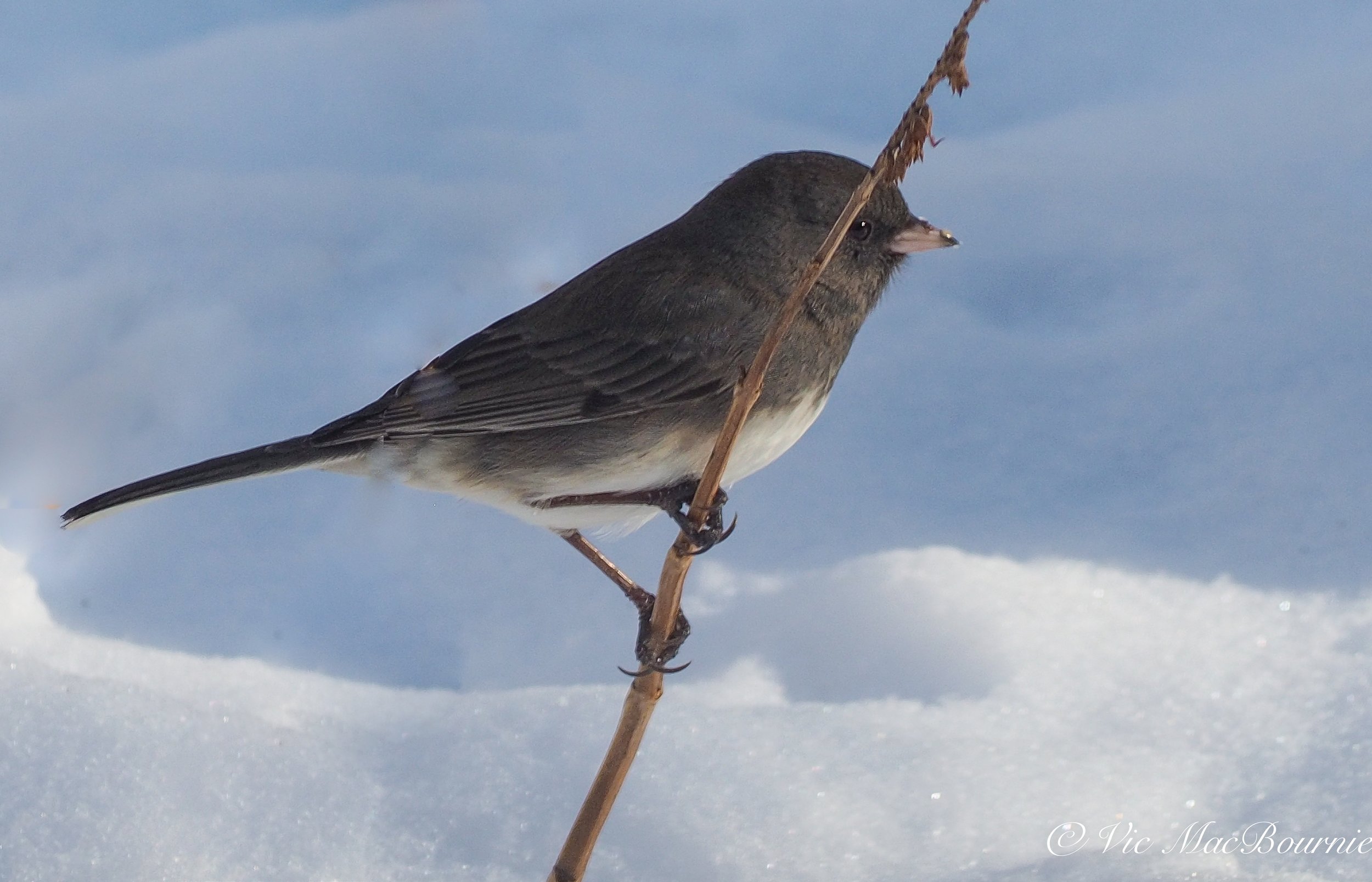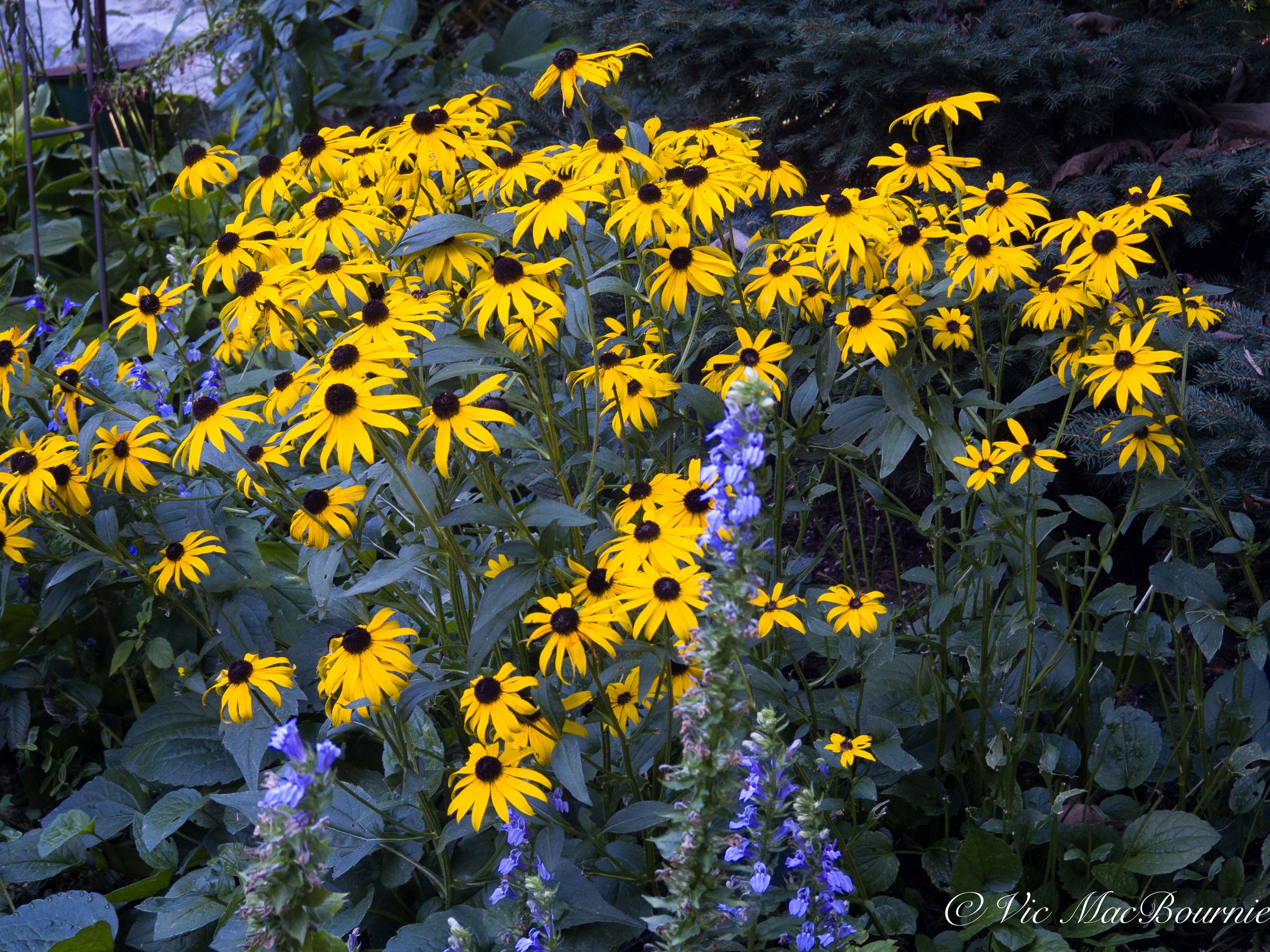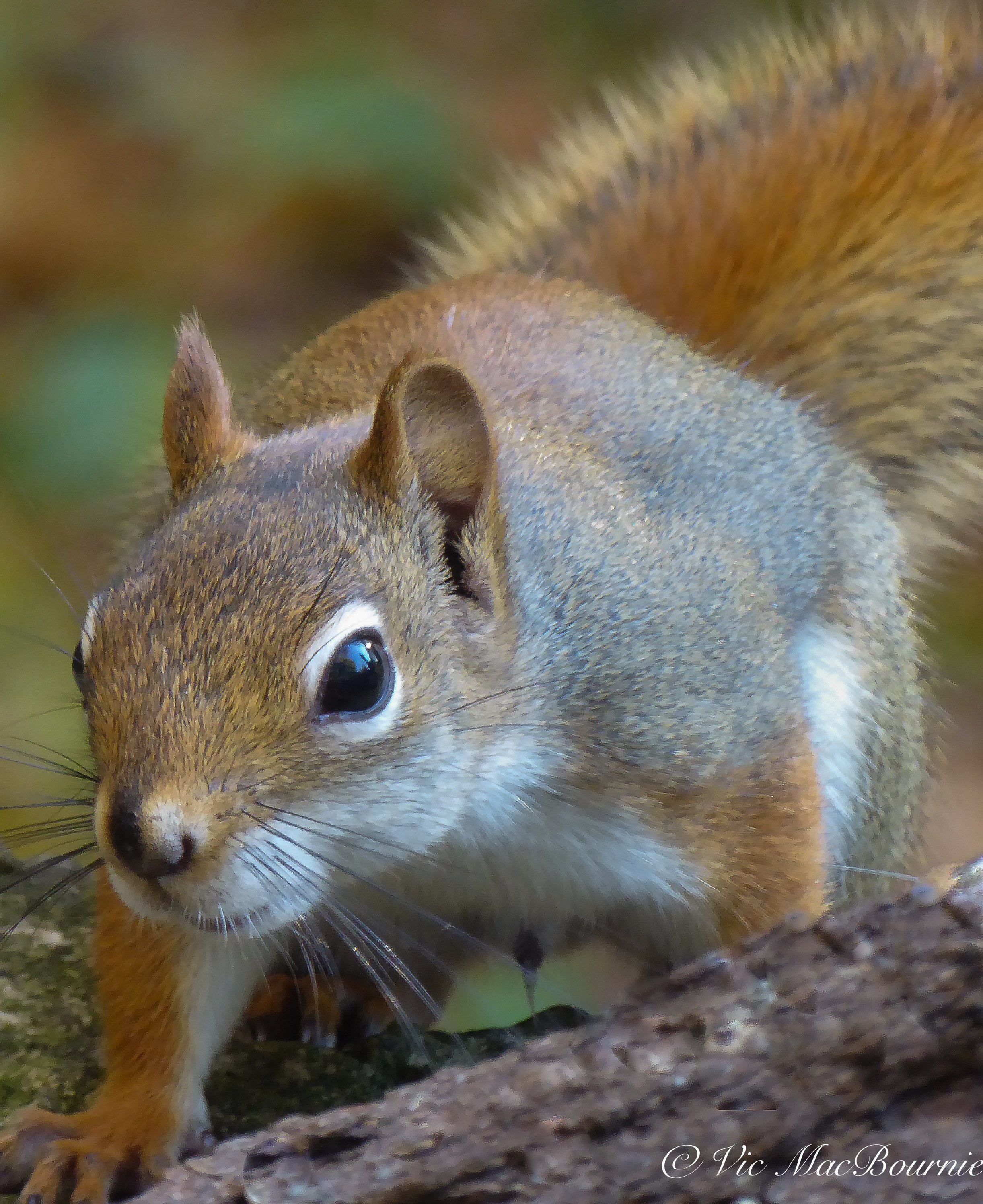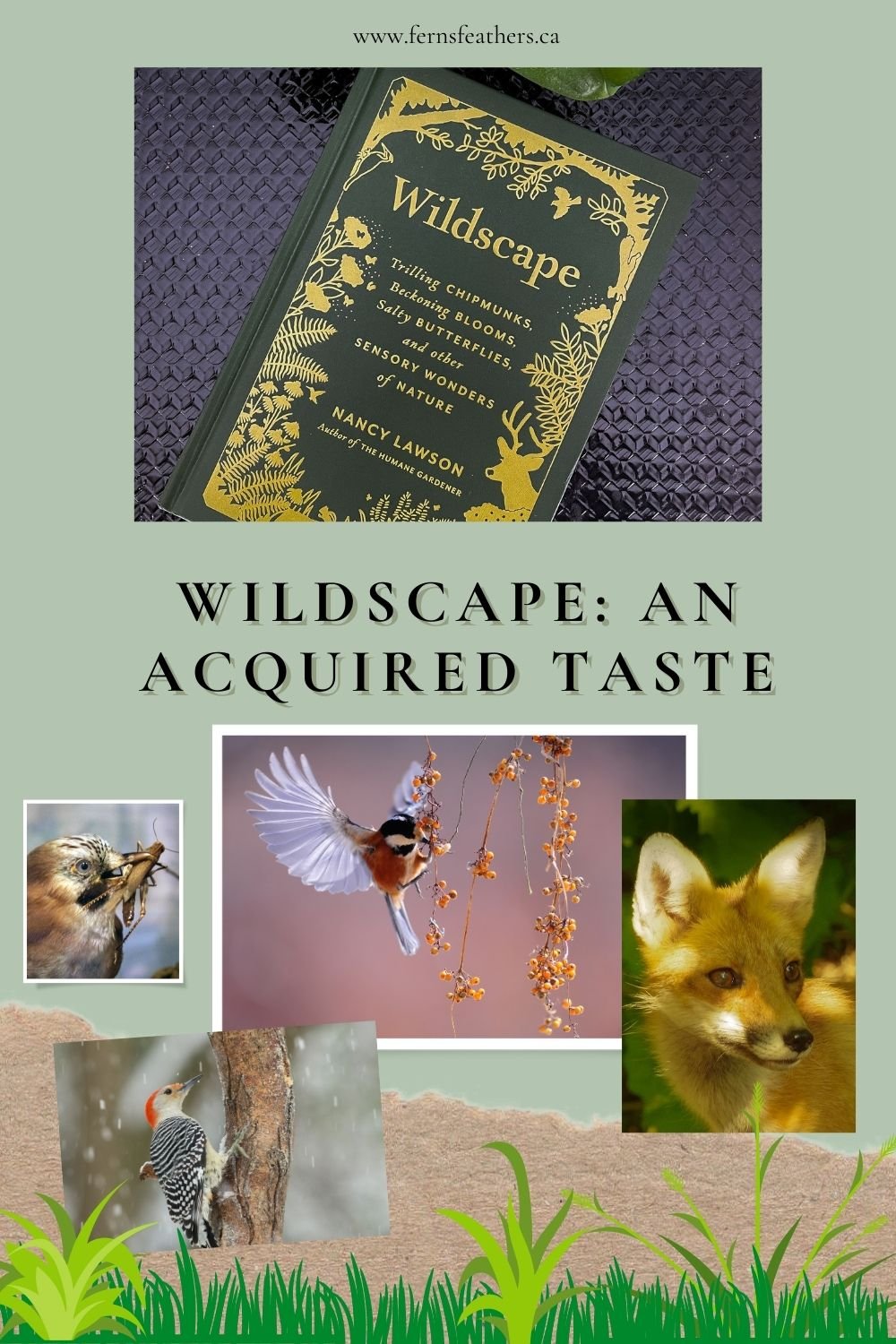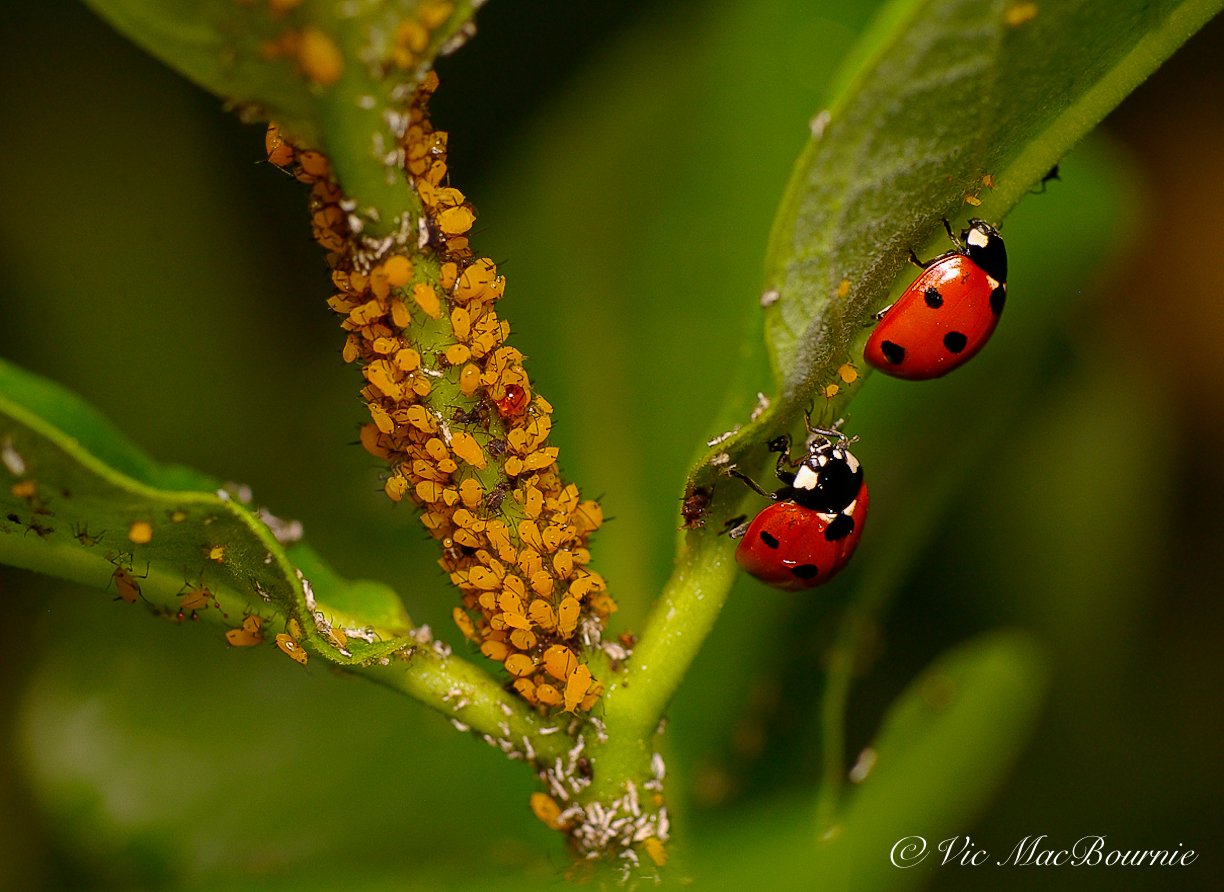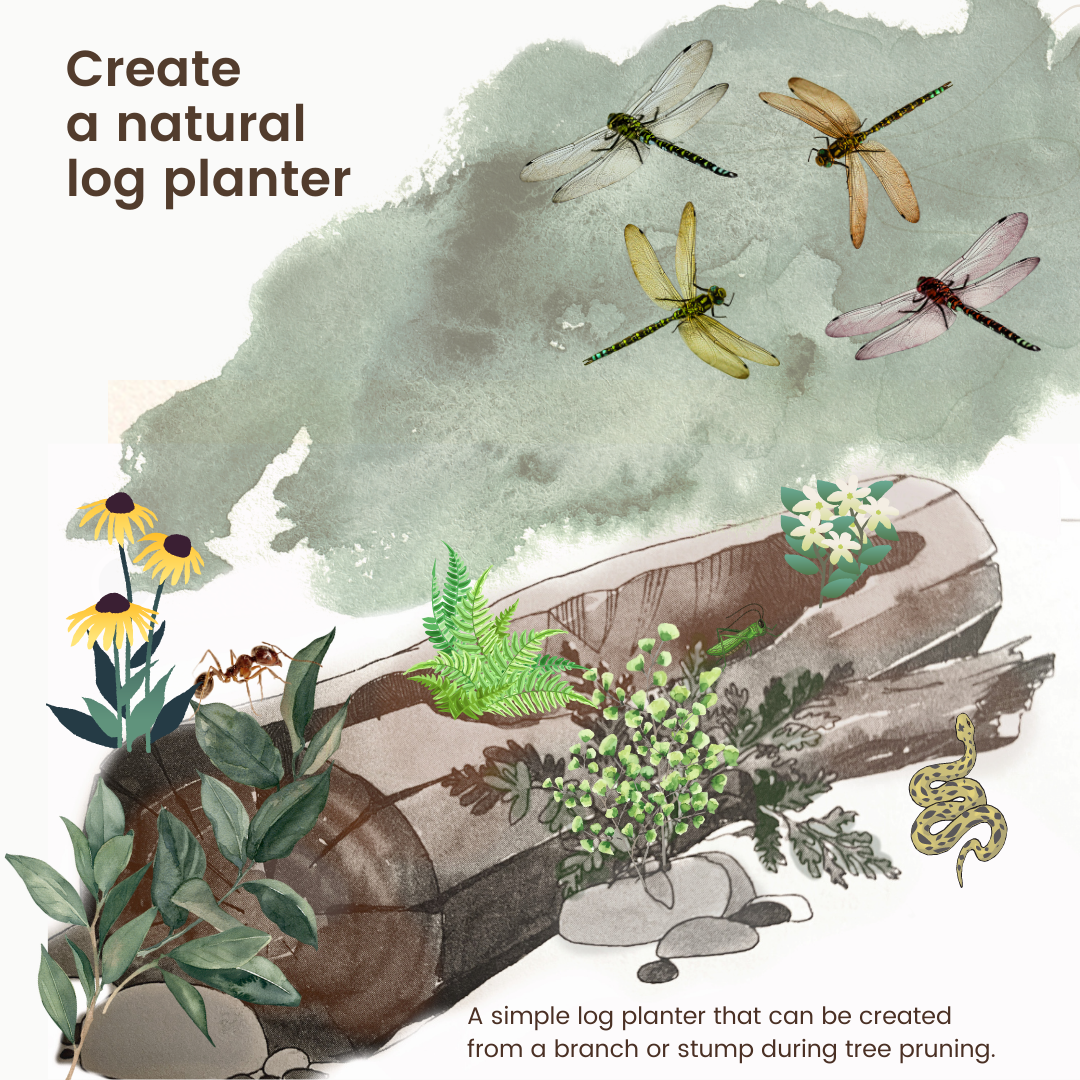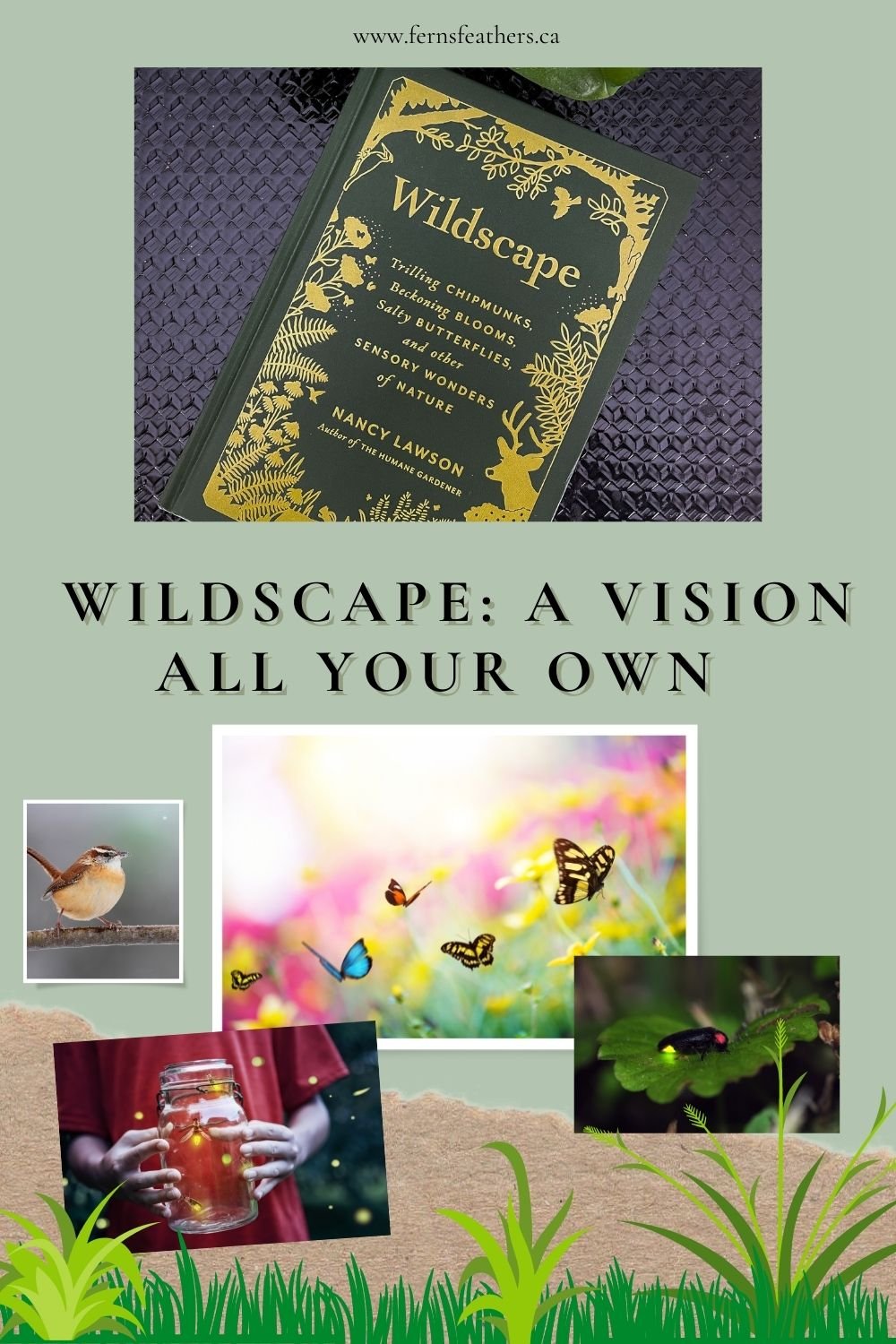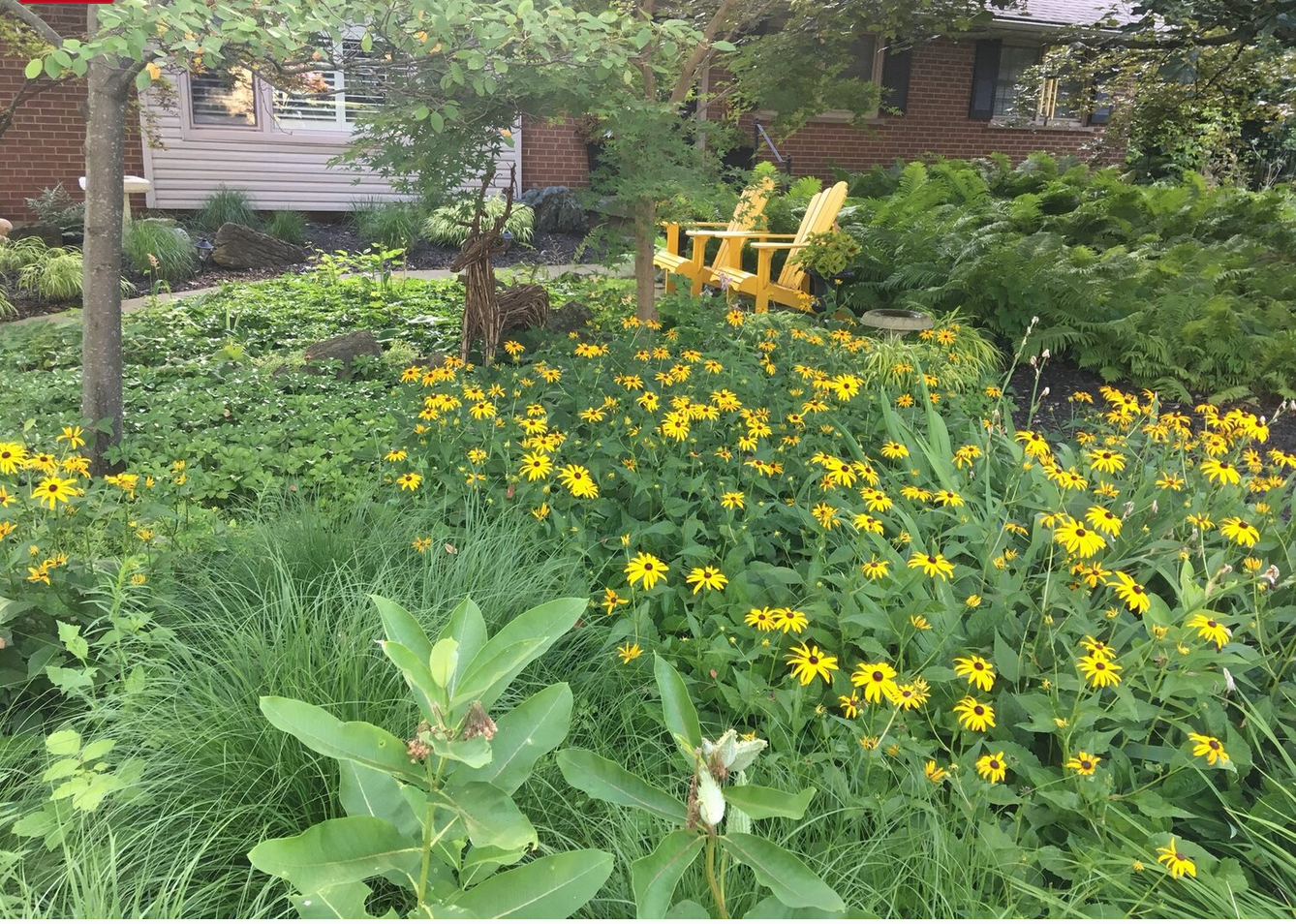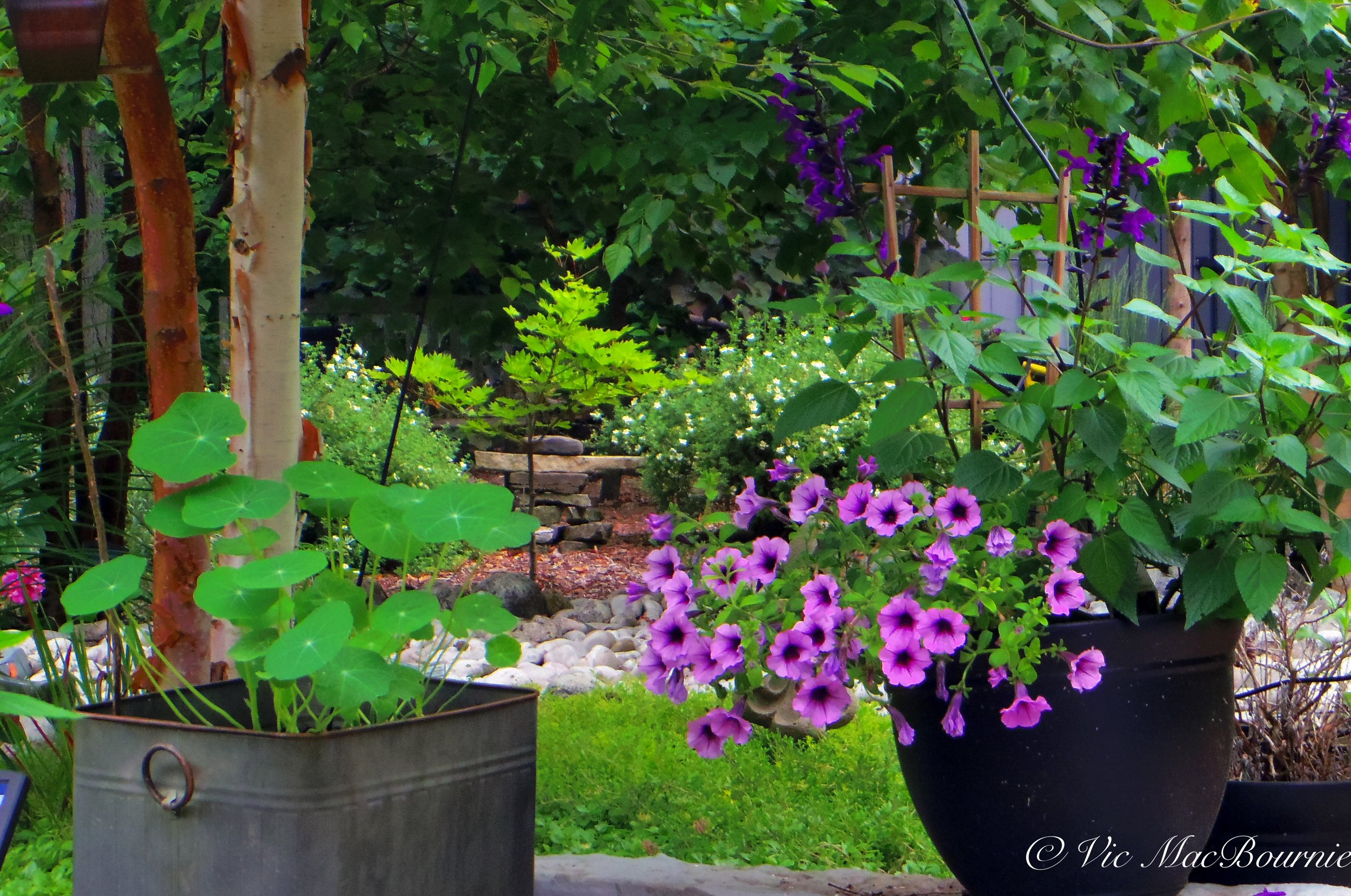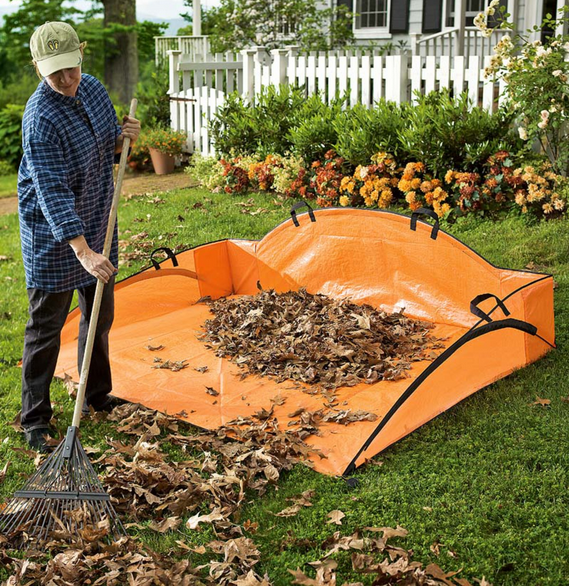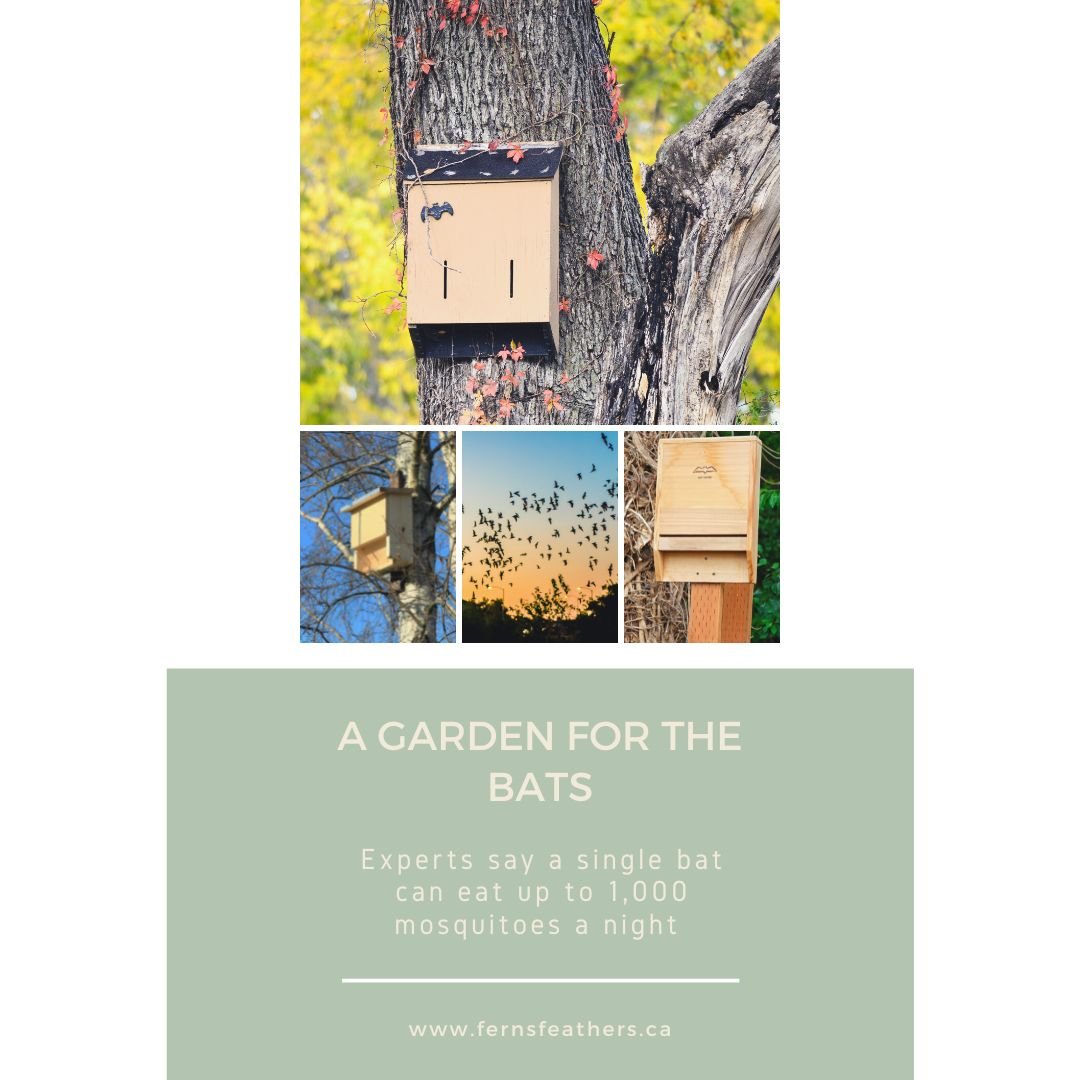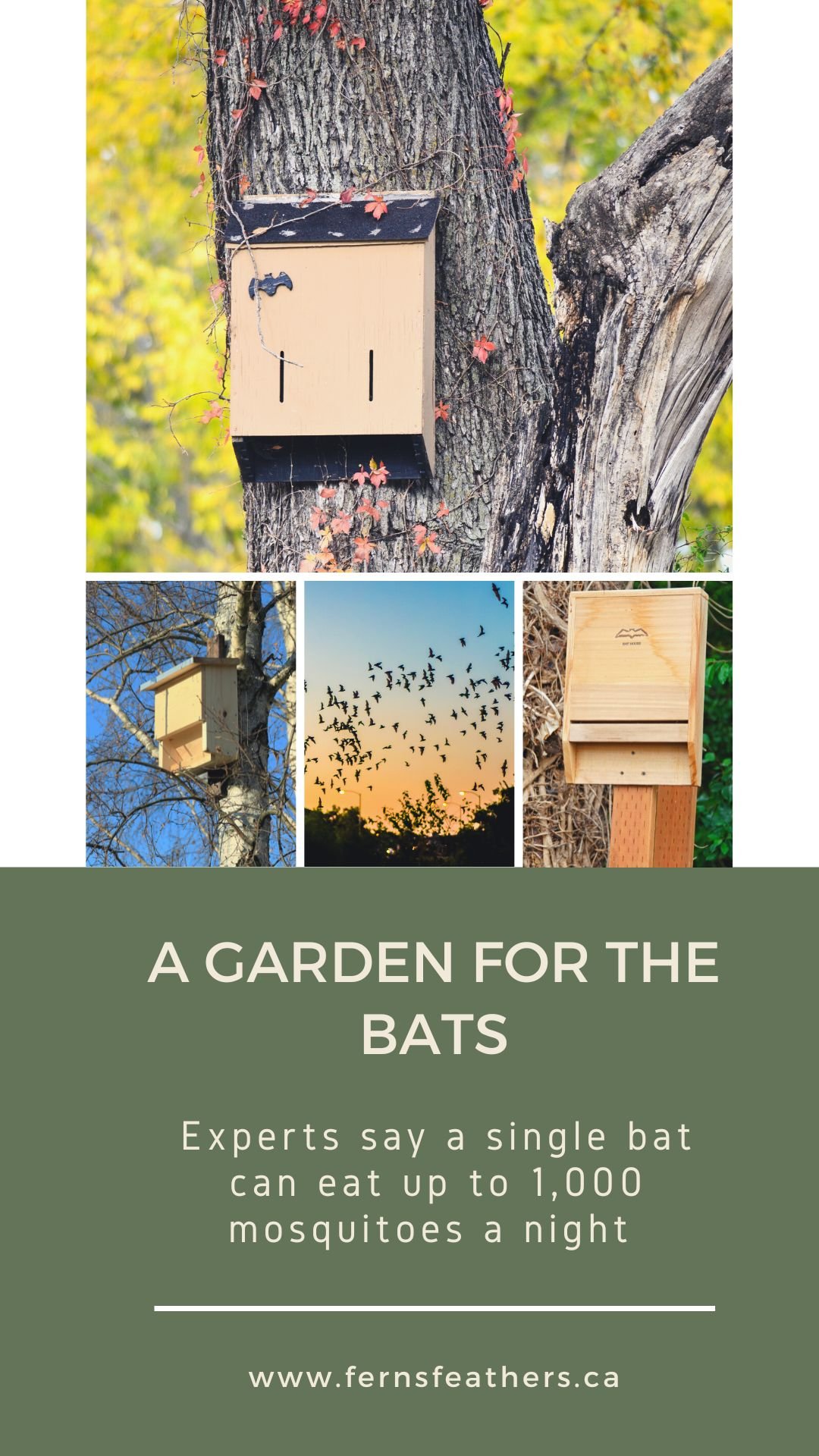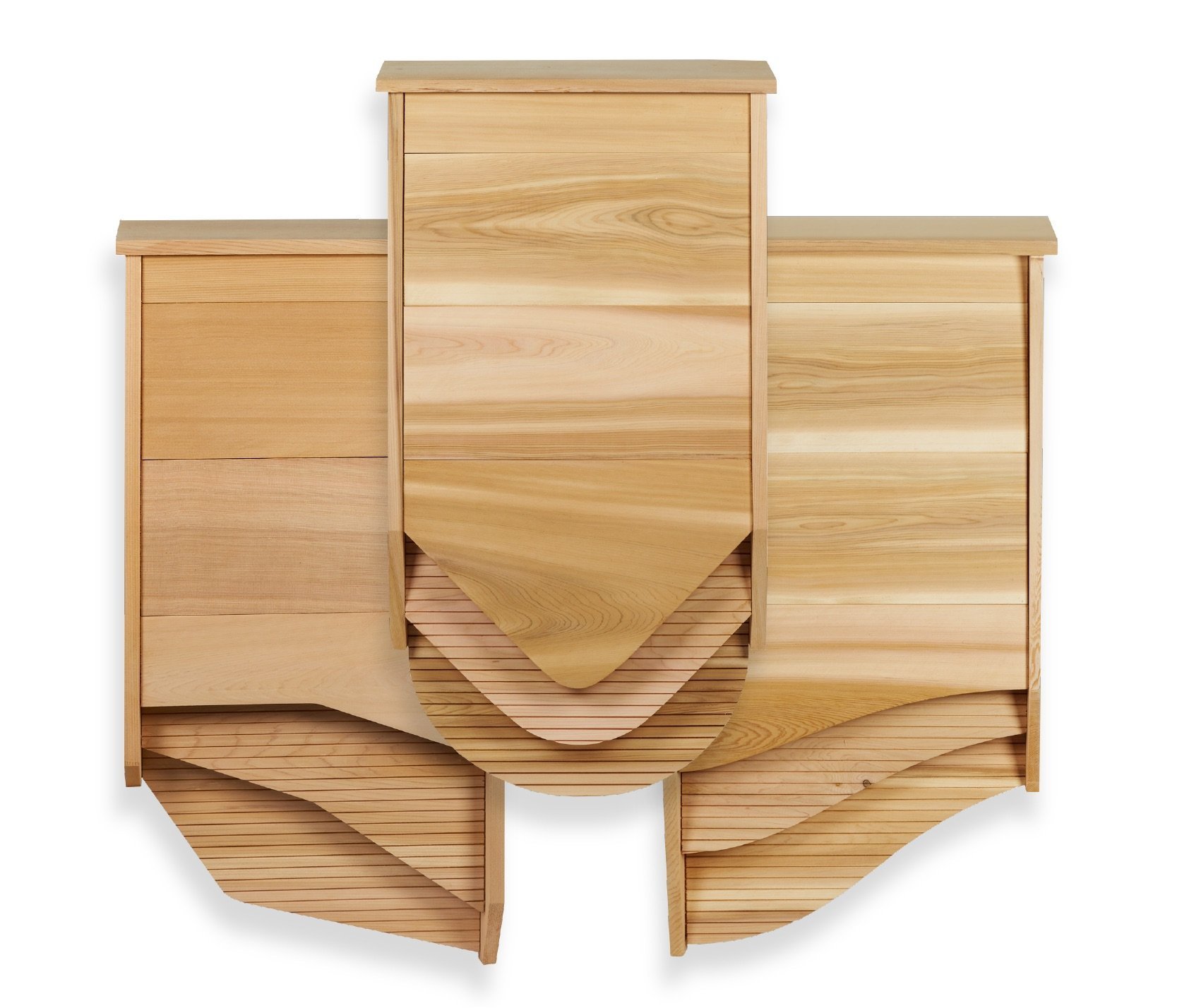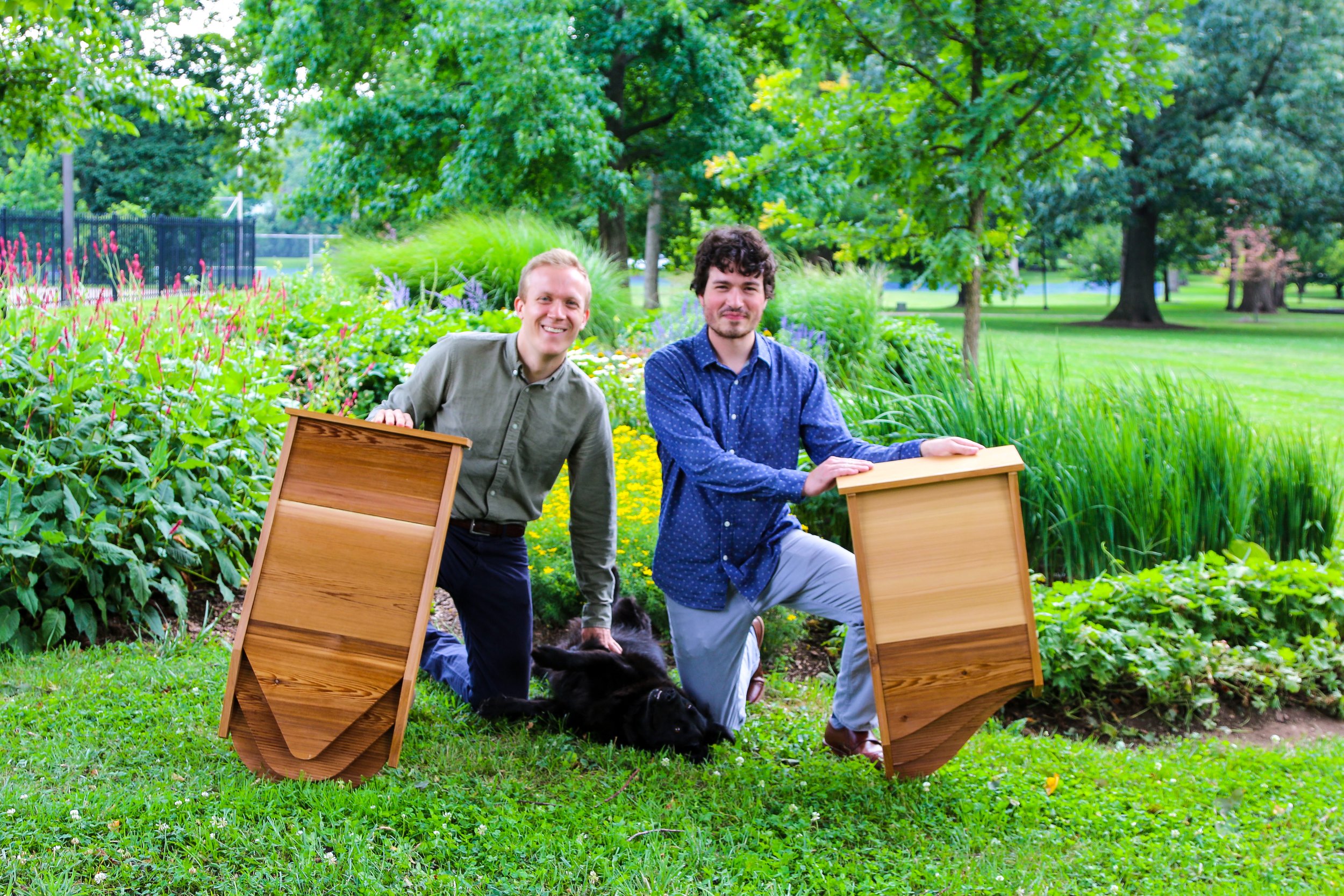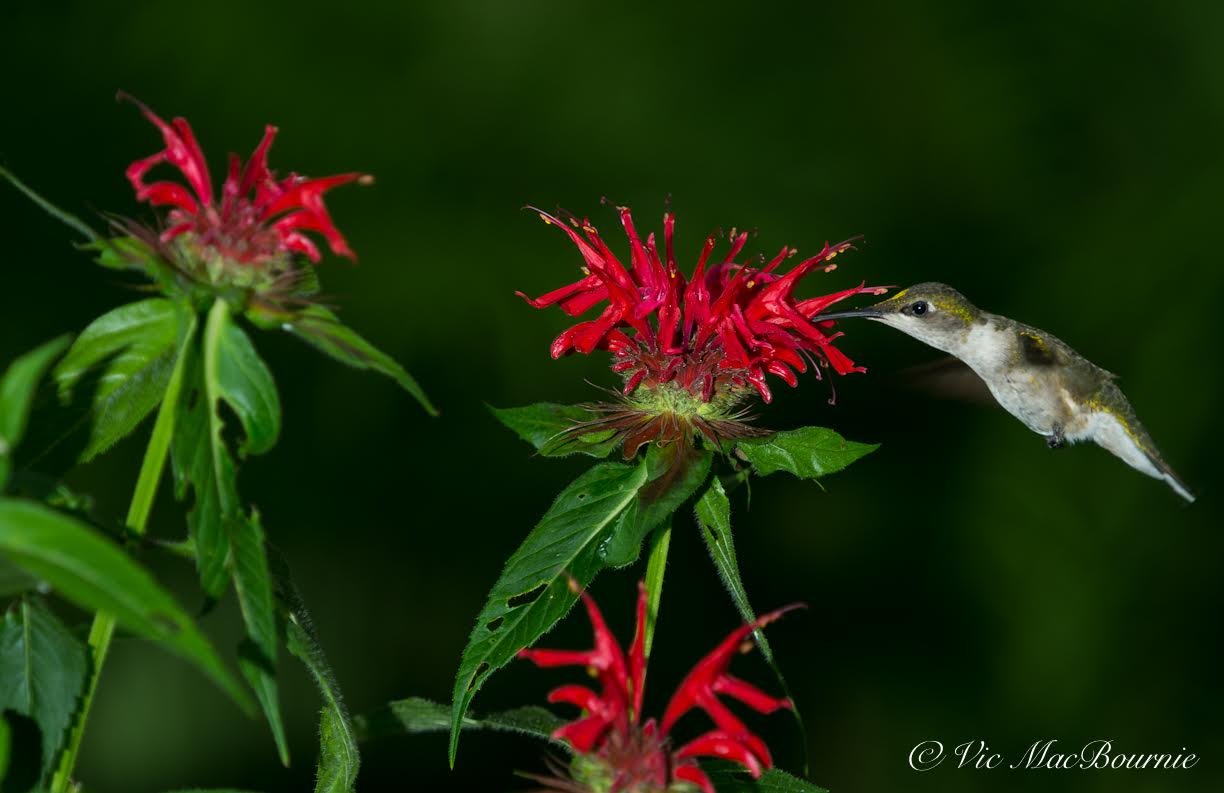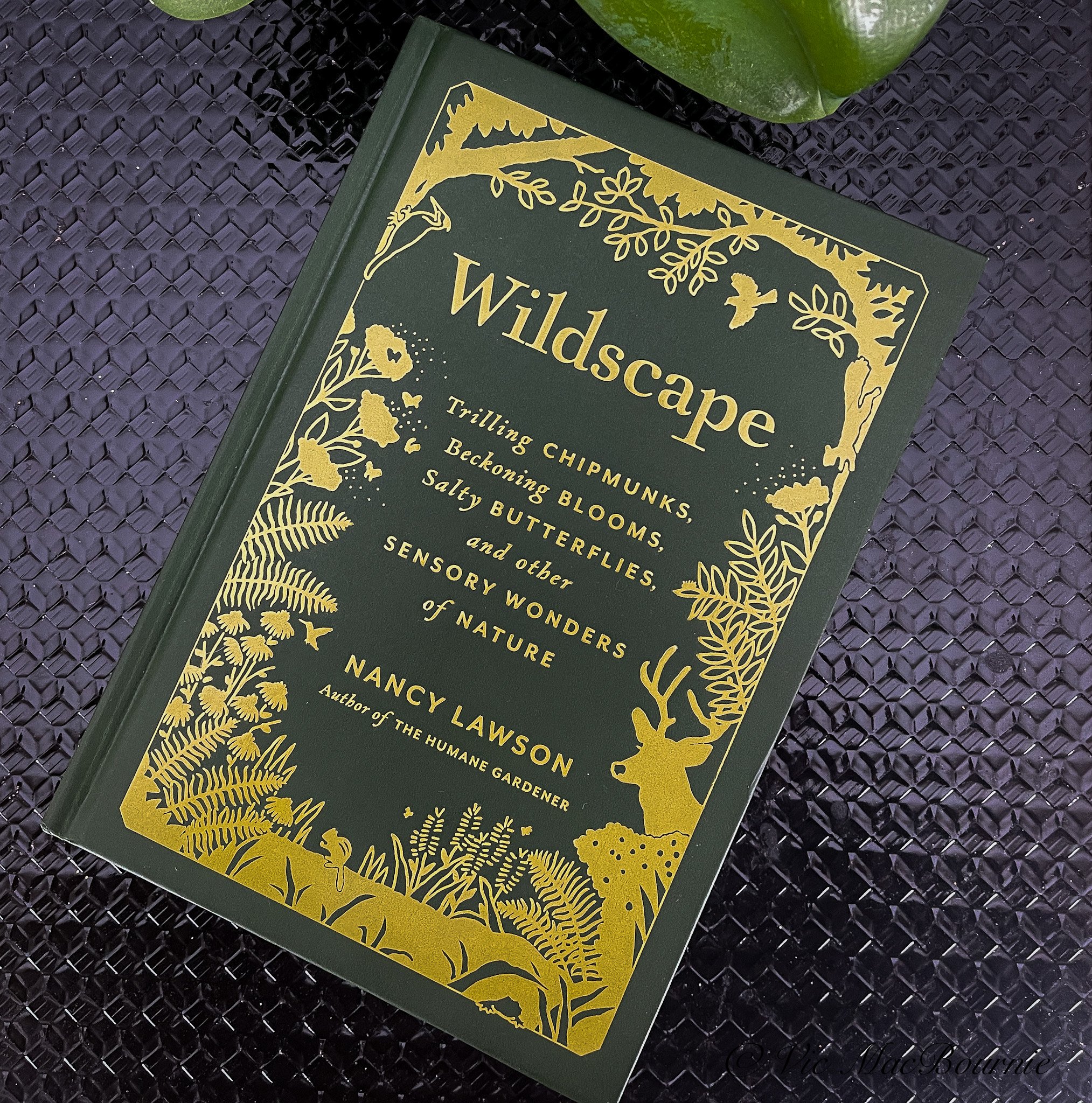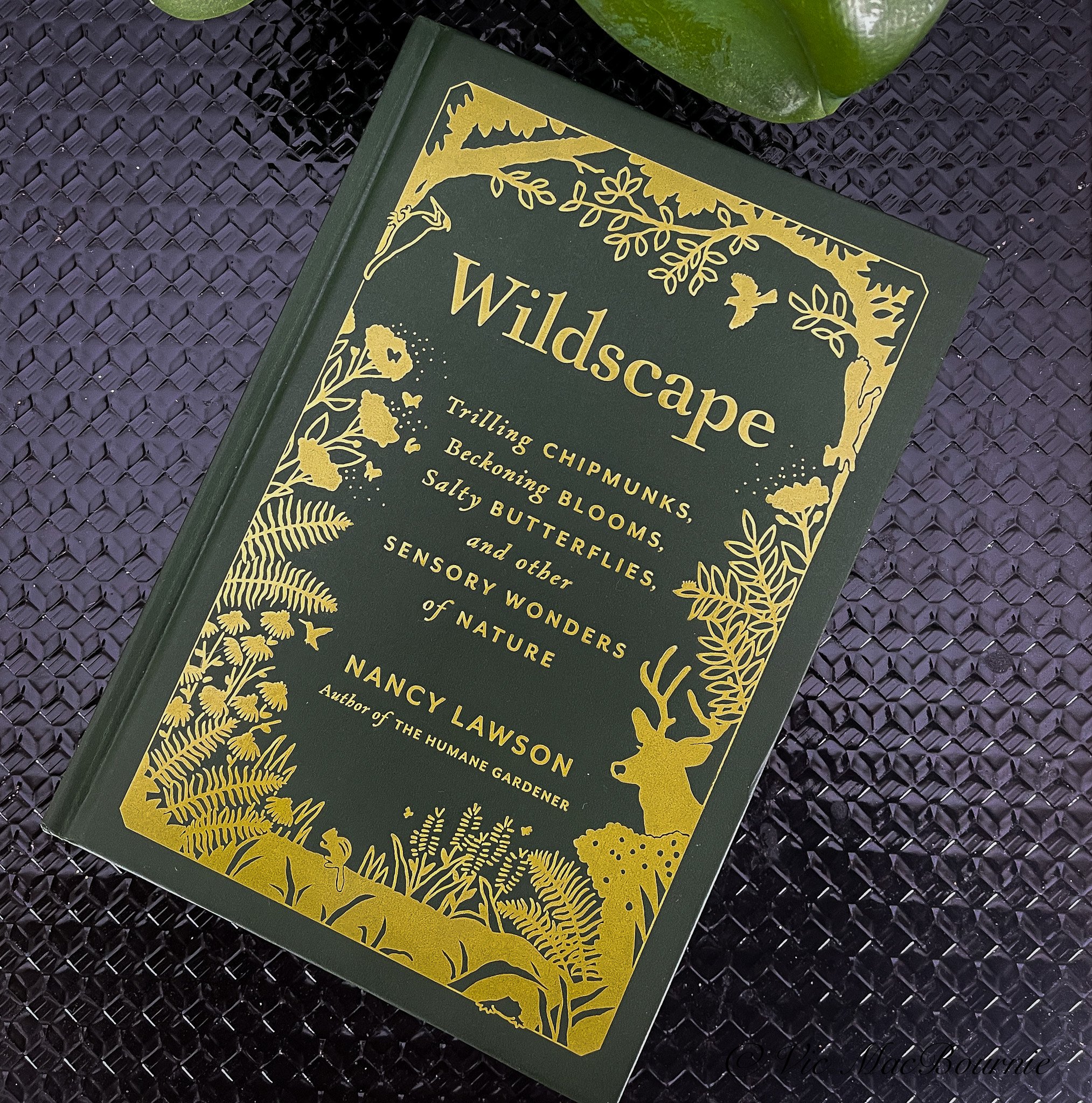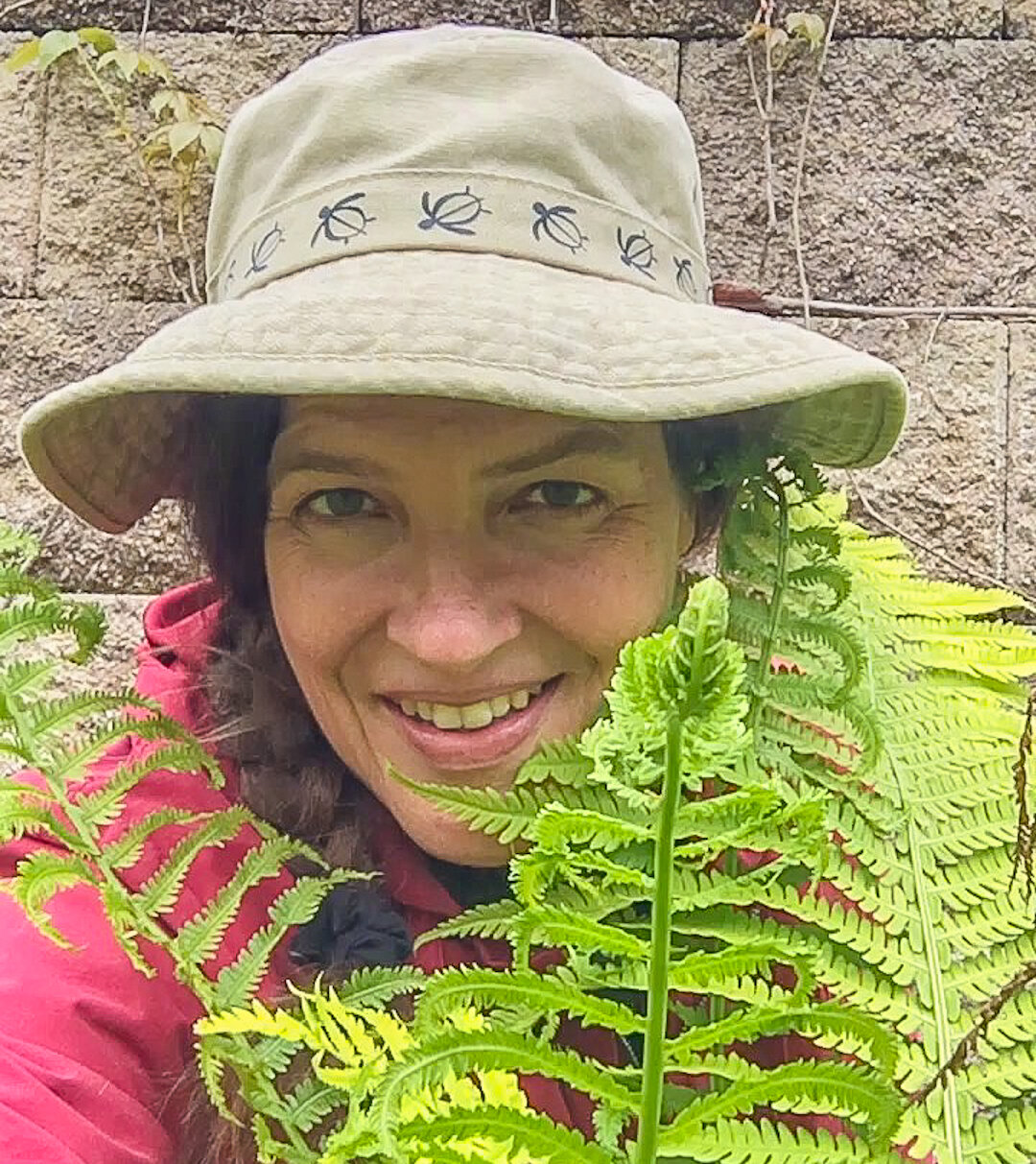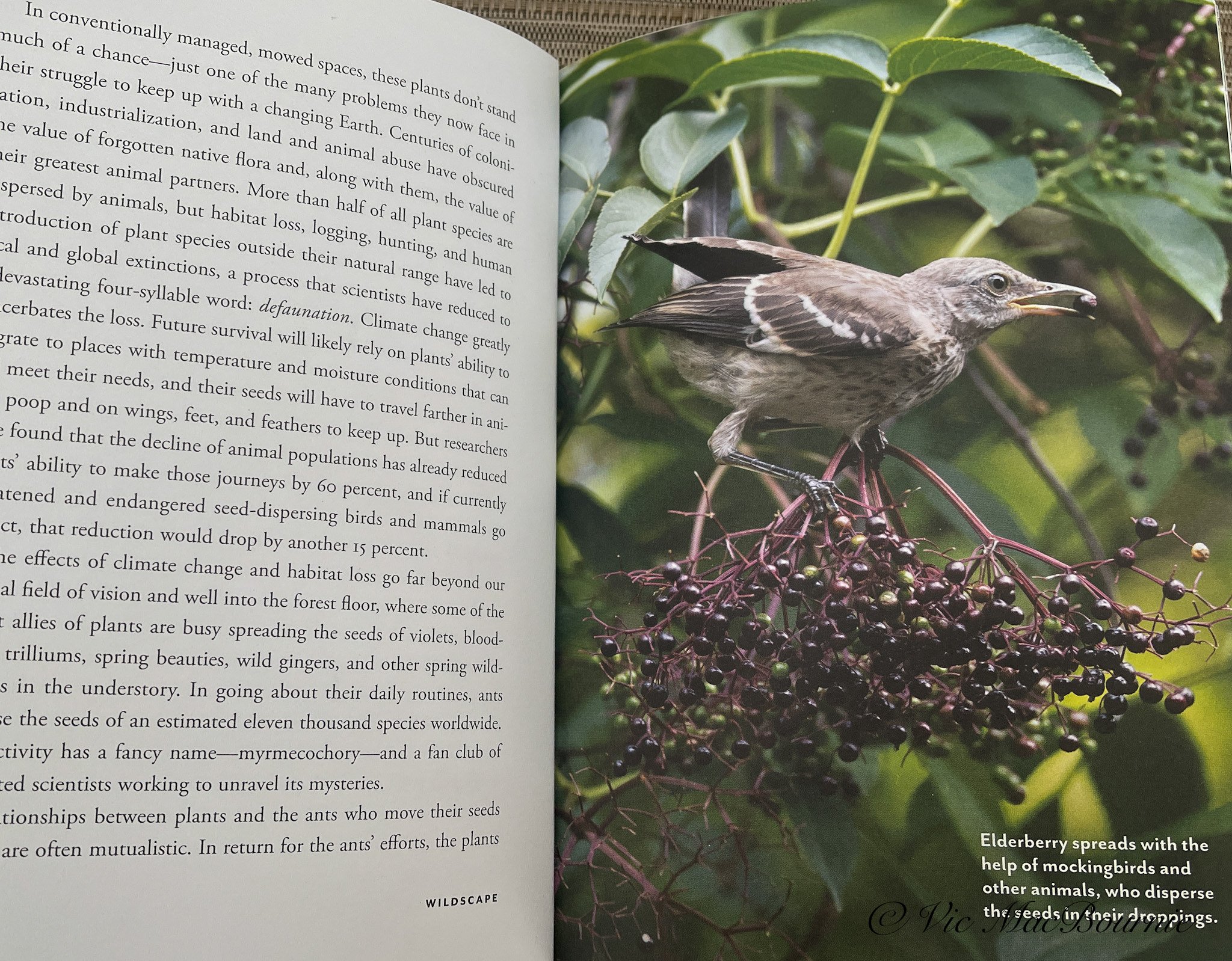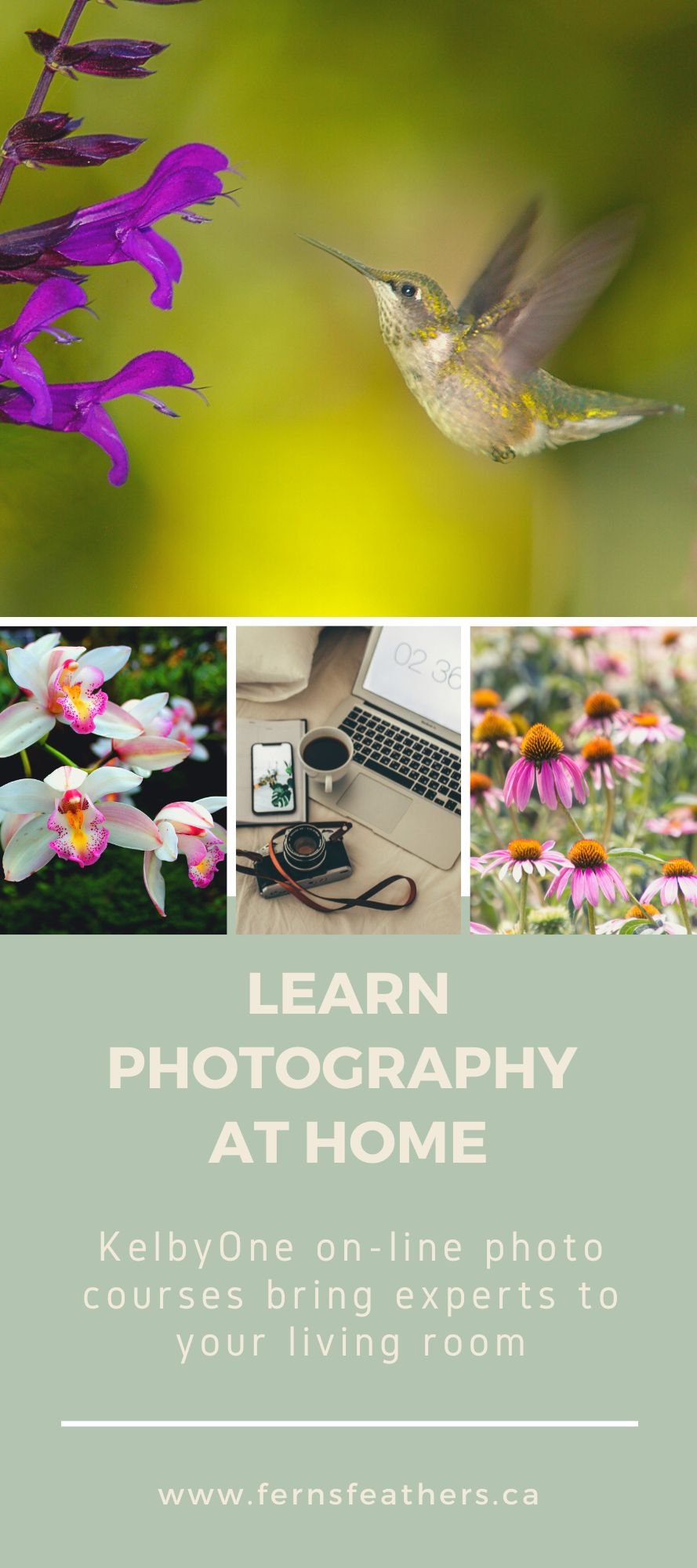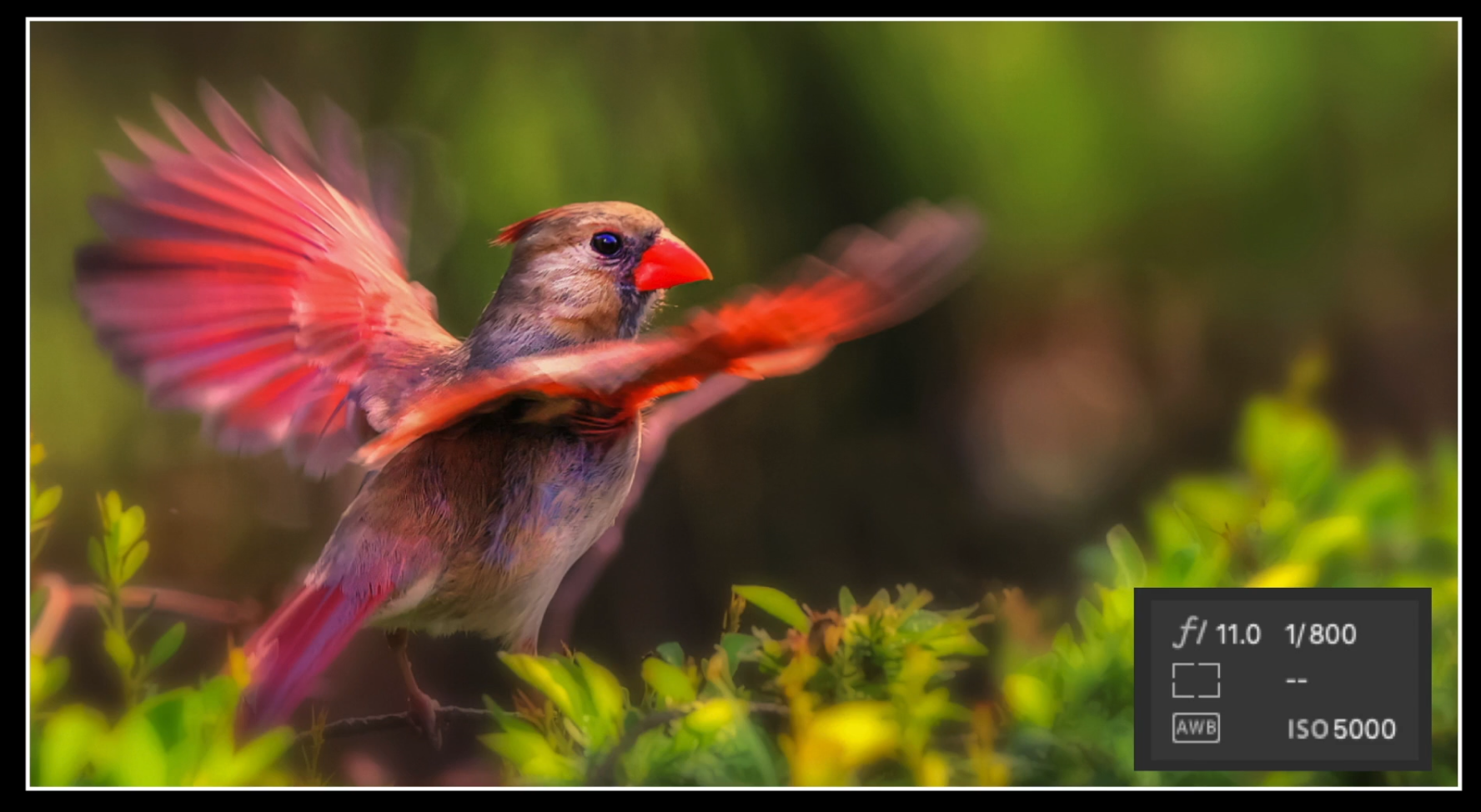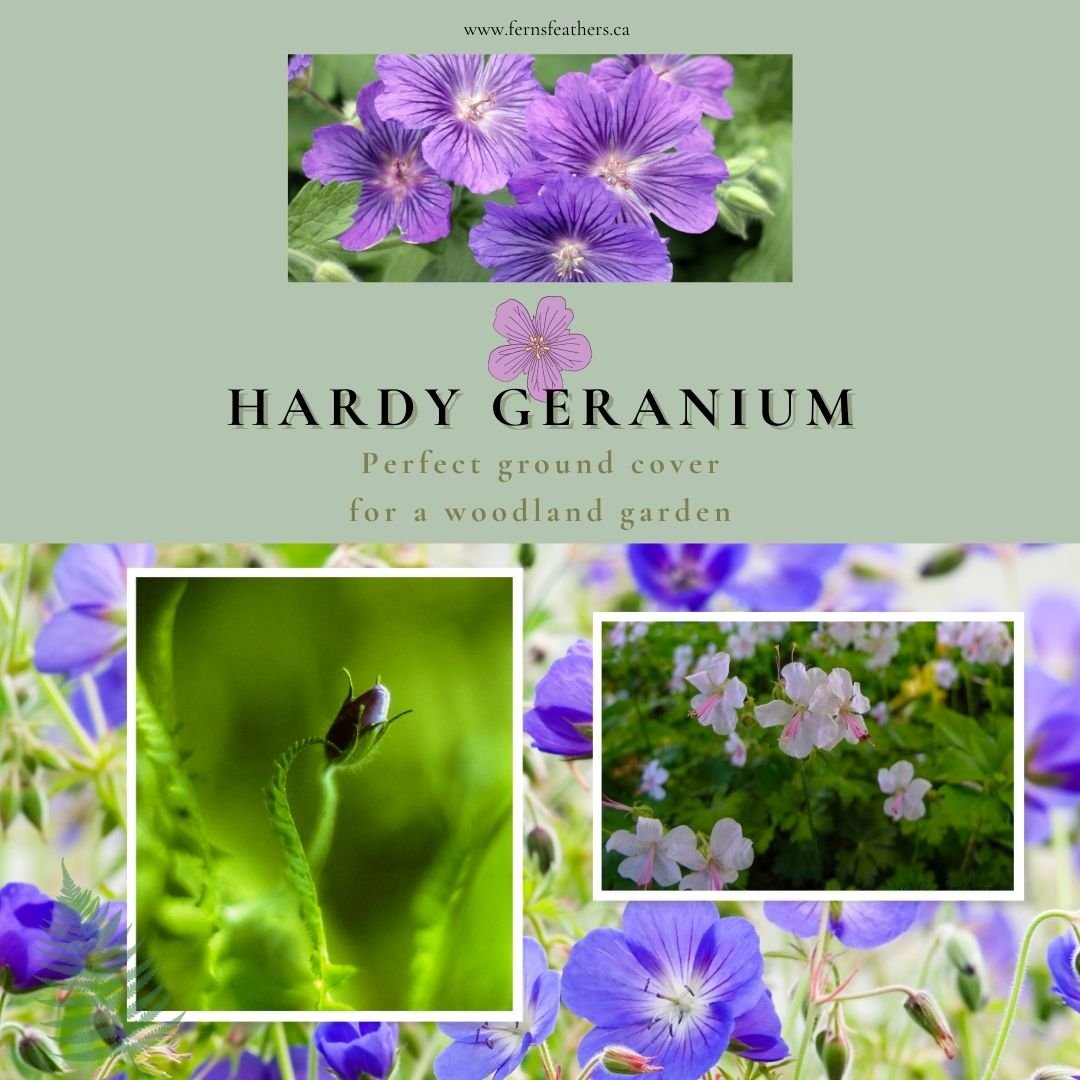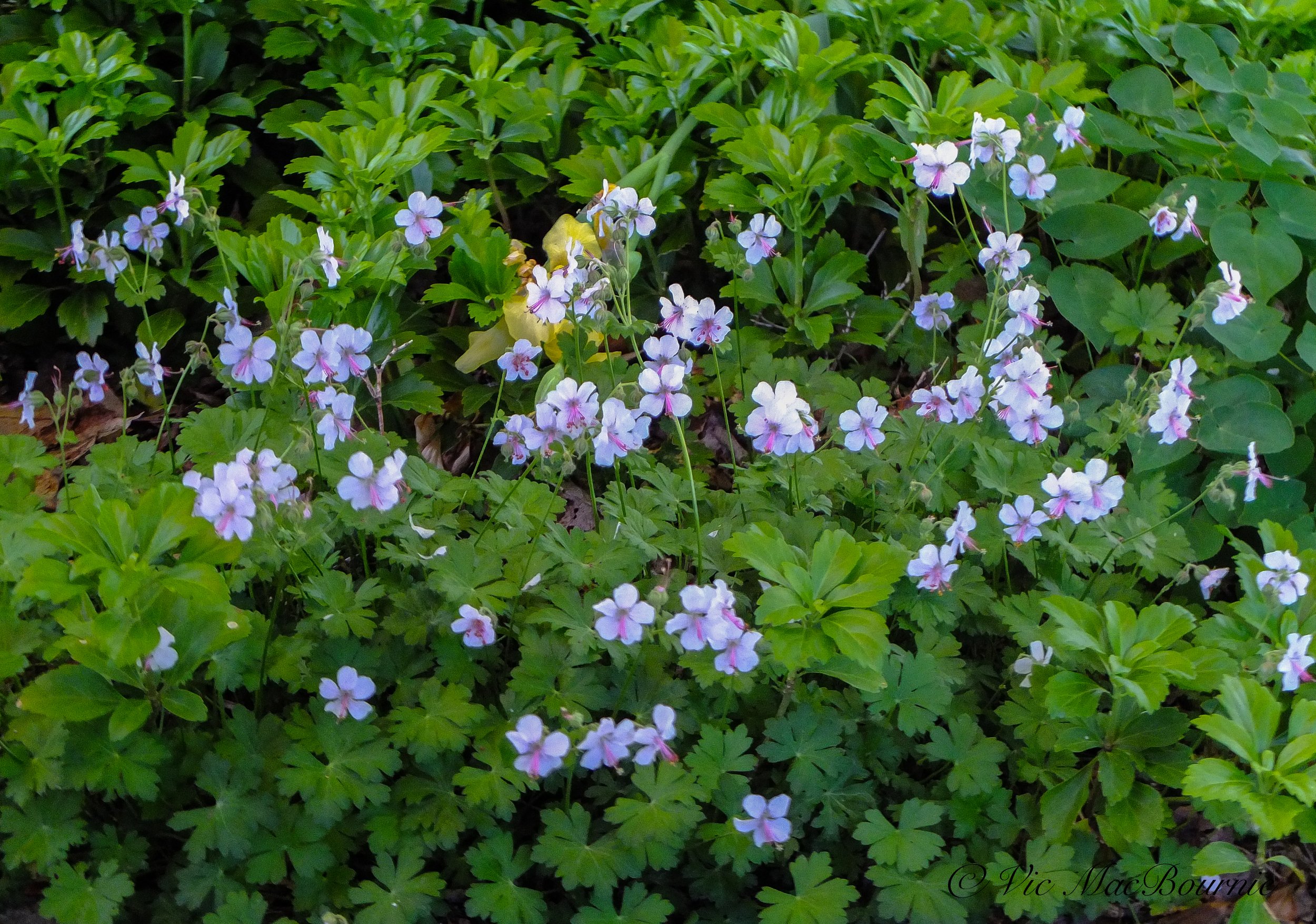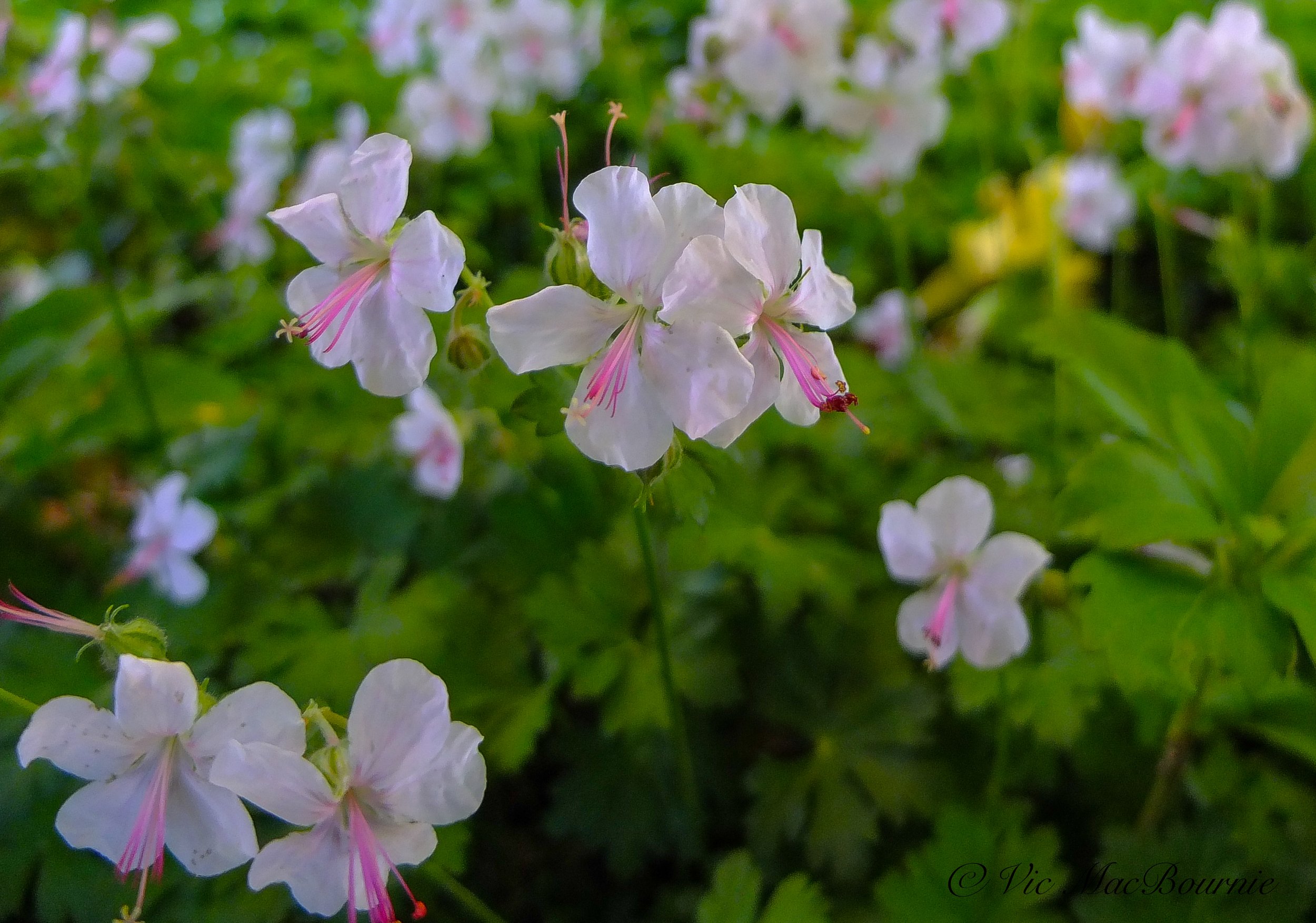A weekend of warblers in the woodland garden
It was an unforgettable weekend of warblers in the woodland garden. Here’s how it happened and how it can happen to you if you create the right habitat.
How to attract warblers, even for a weekend
It was an unforgettable Mother’s Day weekend of warblers in our woodland garden.
It started with a quick glimpse of what appeared to be a Blackburnian warbler flitting about in the blooms of our yellow magnolia tree capturing insects, and ended with me sitting in my Tragopan photo blind photographing warblers from a few feet away as they came down for a drink in one of our many bird baths. The bird bath that seemed to attract them most happened to be directly under a flowering dogwood in full bloom.
Some non-birders (my wife included) might say “so what, they’re just birds.”
To that I say: “No, warblers aren’t just any birds. They’re special, and these species don’t normally hang out in gardens. At least not where I live in Southern Ontario.”
We had Blackburnians, Cape May and Yellow-Rumped warblers… and that’s just the ones I saw.
In fact, most birders know full well that the annual pilgrimage to Pt. Pelee’s Festival of Birds, on Canada’s southern most tip, is really one of the only ways to catch a glimpse and hopefully a photograph one or two of some of these more rare warblers that are all filtered to the tiny spit of sandy forest on Lake Erie. Most of the birds are so exhausted from flying over the lake that they take refuge at the Point of land and, in many situations, allow a close approach.
Birders come from around the world just to catch a glimpse of some of these rare warblers and other migratory birds.
So, to have a few drop down into our little woodland during their migration to more northern locations, is an honour I don’t take lightly.
In fact, for a brief second or two, I had two Cape May warblers (see image below) drinking from the bird bath at one time.
How many warbler species worldwide, in North America?
Warblers are one of the most common types of birds, and, hence, they have a wide distribution, covering Africa, Europe, North and South America, Australia, Asia, the Pacific islands, and the subarctic region.
I read recently that Old World (Europe) warblers are in the family called Sylviidae and comprise close to 350 species. In Europe they are related to the thrushes and the flycatchers.
Although warblers look similar and are often mistaken for finches, wrens, or sparrows, they are not related songbirds.
Here, in what is considered the New World (North America), there are 52 species of warbler. In North America, Warblers are members of the wood-warbler family (Parulidae). Worldwide, there are 13 families called warblers.
That’s a lot of warblers worldwide.
But, I would bet that most people (outside of birders) have either never seen a warbler, or would not be able to identify one even if they did.
Warblers are a group of small birds that are also known as perching birds. Their plumage can range from drab colours like gray and brown to bright colours like vibrant red, blue, and yellow.
They might be best know for their trilling and quavering songs, which is actually how they earned their name. Their songs range from rather dull to loud and piercing mating calls in spring.
The name warbler actually comes from an Old French word “werbler,” which means to sing in trills.
How far do warblers migrate?
Identifying their calls might be the easiest way to know they are in the garden.
Their beautiful, almost tropical-sounding songs, are a reminder of how far they’ve migrated to get to our gardens. Many are travelling from Central and south America to far reaches of northern Canada to breed.
Are warblers common in the garden?
One of the reasons more gardeners are not familiar with these birds is because they are not common backyard birds.
The warblers that do visit backyards are elusive and most often spend their time higher up in the tree canopy where they have access to more insects, caterpillars etc.
So, even the more common warblers like the Yellow warbler, often go unnoticed by most casual gardeners who may mistake the flash of yellow for a Goldfinch or even a female oriole.
The Cornell lab or Ornithology is an excellent place to go for help identifying these birds or to get more information.
Can you attract warblers with typical birdfeeders?
Your typical birdfeeder full of sunflower, millet and other goodies is not going to bring warblers into the yard.
You need insects, caterpillars and other creepy crawlies to attract these primarily insect-eating little beauties.
And, for so many gardeners, that’s the problem.
Two Cape May warblers enjoying one of our bird baths. To capture a single Cape May warbler is thrilling enough, but to get two in one frame was a real thrill.
One only needs to go on any of the garden forums on Facebook to read about the insect carnage.
In fact, I am finding it extremely difficult these days to follow garden groups on Facebook when every second question is about how to kill insects and caterpillars in the garden.
Let me scream it from the tree tops: “It’s natural to have insects, caterpillars and other creepy crawlies in your garden. Let Mother Nature take care of them the way she has for thousands of years. This IS birdfood.”
Okay, sorry for the rant.
And, I’m not saying there are not situations where action needs to be taken to deal with a major infestation, but it should be rare rather than a daily occurrence in the garden.
How can we attract warblers?
But, back to weekend warblers in the woodland garden.
I am convinced – or at least I’m going to try to convince myself – that one of the reasons the warblers chose our garden to spend a few days is the availability of insect life, and reliable sources of water in several areas of the garden.
Without these, the warblers would have had no reason to drop down preferring to continue on their way to better locations.
Black and White warblers are less colourful than most but are beautiful in their own simplicity.
To make the weekend of warblers even more special for me, is the fact that we are surrounded by acres of wild forest that I’m sure would have been an excellent source of food for these warblers.
But, by intensifying the availability of insects through a variety of native plants, shrubs and trees, our gardens can become magnets for migrating birds in need of quick hits of energy via insects and caterpillars. Also, I witnessed a number of the warblers rooting around in the fallen leaves for insects.
Some, like Indigo Buntings and Orioles, (links to my posts) might stick around and call our garden home for the summer. If so, they, along with more common backyard birds who depend on an abundance of insects and caterpillars in spring to feed their offspring, will help to keep any outbreak in check while they bring life, colour and their sweet songs to our gardens.
So, if you hope to attract warblers to your garden, even for just a short period during migration, you need to ensure the following:
Reliable sources of fresh water preferably in a variety of birdbaths and natural looking ponds including patio container ponds and on-ground baths. A natural pond with easy access to shallow areas is excellent for all wildlife.
Native plants, shrubs and trees that in turn attract plenty of insects, spiders, caterpillars and other creepy crawlies. Oaks, willows and birch trees are good starters but our warblers seemed to be drawn to our flowering yellow magnolia and dogwoods, which no doubt were attracting insects to the garden.
Leave your fallen leaves. I noticed that the warblers were often on the ground rooting through the fallen leaves from the previous fall, which never really get “cleaned up” in our gardens. Most of the leaves stay where they fall and are just moved off walkways onto the gardens where the spring flowers force their way up through them.
Do not use any insecticides in the garden. Learn to live with the odd outbreak and let Mother Nature do her job to keep the garden in a natural, balanced state.
Interesting facts about warblers
• Warbler migration begins in April from South and Central America making their way down to Canada and the United States. Some, such as the Tennessee warbler and Magnolia warbler, fly farther north to breed in Canada’s boreal forest as well as a few small areas in the United States.
• The more common yellow warbler and yellow throat are seen throughout parts of Canada and the United States.
A beautiful but more common Yellow warbler searches the grasses for insects. Yellow warblers are more common in woodland gardens, especially those that have extensive forests or woodlots nearby and are hosts to native plants, shrubs and trees that attract insects and caterpillars.
• Warblers tend to have thin bills, which enable them to pick up and hold on to insects and caterpillars.
• Because of their colour and active lifestyle, they are often referred to as the butterflies of the bird world.
• Warblers are fast-flyers and can reach impressive speeds of up to 25 mph or (more than 40 kilometers per hour.)
• They can fly long distances: For example the Canada warbler travels more than 3,000 miles during migration
• Warblers songs: Warbler songs are used not only to attract mates, they’re also used to communicate with one another. Warbler mates have even been known to sing duets together.
A more rare Northern Parula warbler photographed at Pt. Pelee National Park. These birds breed in eastern North America from southern Canada to Florida.
• Suet feeders likely play a role in helping these birds survive the worst winters. So, it is a good idea to keep suet out all winter for the birds and to keep an eye out for special visitors. Who knows, you might be lucky enough to be one of the few who can say they saw a warbler in the cold of winter.
• Warblers depend on the boreal forest. In fact, more than half of the warblers breed in the boreal forest which stretches from Alaska into Newfoundland.
• What do warblers eat most? Warblers mainly eat insects, spiders, caterpillars and mosquito larvae.
• Although most warblers are solitary birds, they can be seen at different times of the year in solitary pairs, small groups and in small families.
• Why are they called warblers? Warblers picked up their names from the trills of their songs.
• What is the biggest threat to warblers: Warblers obviously face many threats during migration from hitting high-rise buildings to being caught up in dangerous storms and not being able to find enough food to survive migration. Other threats include parasitism and, of course, the actions of humans through the use of herbicides and pesticides. Climate change also poses risks to these small birds either from sudden extreme weather conditions to changes that affect the availability of sufficient insects at crucial times of the year.
• Warblers build a variety of nests mostly in trees, but also can be found in tall grasses. These nests can range from typical small cup-like structures typical of most nests, to domes in grasses, in bushes, or even hidden inside the ground. Typical construction material ranges from whatever might be available to them including hair (human or animal), long grasses, spider webs, and soft mosses and lichens.
• Warblers generally have an incubation time of about 12 days. The females have an average clutch of 2. The baby birds fledge after about ten days and are independent of their parents after as little as 2-3 weeks.
In conclusion
Normally we don’t attract warblers to our gardens. Instead, they decide to grace us with their presence in our gardens. We can, however, create habitat that is inviting to warblers and hope that they recognize our efforts, even if it’s just for a weekend.
That same habitat will be an invitation, not only to warblers, but to a host of birds, butterflies, mammals and reptiles.
A healthy garden will be attractive to a greater variety of wildlife than we can even imagine. The results are dependent so much on the location and the environment where the garden exists. All we can do is our best to create a welcoming habitat and hope for the best.
Photographing backyard Warblers, Robins and Blue Jays
For those interested in garden and wildlife photography, I thought I would give you a little background. While photographing warblers, I was also able to capture a robin and blue jay so I have included some of those images as well to illustrate the lens and camera capabilities.
My intro to bird photography
I’ll never forget my first introduction to serious bird photography.
It was at Pt. Pelee National Park during the Migratory Bird Festival when birders and bird photographers from around the world gather in great numbers to see and capture images of these tiny birds.
Let’s just say there were days when the photographers and birders outnumbered the birds 20:1. But it was certainly an eye-opening experience.
The bird photographers gear made the photojournalists at sporting events look like they were carrying point-and-shoot cameras and lenses compared to the monster lenses at the national park.
I can safely conclude that, judging from the size and quality of the lenses, many of the beautiful images you see of warblers come at a very hefty price tag.
Serious bird photography can be extremely expensive. Big, fast lenses can cost as much as a small used car. Not to mention the latest cameras, tripods and tripod heads. Add in the cost of overnight stays and travel to birding hot spots and you can imagine how the costs add up.
So, that makes stepping out into your backyard and catching a few shots of warblers almost priceless.
I was lucky enough to capture our weekend warblers with two very old cameras and a couple of vintage lenses: including a 20-year-old, 6 megapixel, Pentax istD and an 8-year-old Olympus OM-D E-M10 (link to my post) together with my favourite wildlife lens the 36-year-old Pentax 300mm F* f4.5 (link to my post) and the kit Olympus 40-150mm zoom lens.
Blue jay photographed with the Olympus EM10 and 40-150mm lens.
The crop factor on the 300mm with the Pentax istD gives me the approximate equivalent of a 420mm lens. I also used a converter on the Olympus that allowed me to attach the 300mm lens to the Olympus with a crop factor of two creating the equivalent of a 600mm lens.
The converter does not transmit any information to the camera and turns the lens from autofocus to manual focus. The Olympus, like many micro4/3 cameras have features that make using manual focus lenses much easier to use.
All this being said, capturing images of these tiny birds would not have been easy without my secret weapon.
The secret weapon for me is the Tragopan photographic blind that allowed me to get in very close to the birds. Once I recognized that the birds were regularly frequenting one of our bird baths, it was a simple matter to set up the blind near the birdbath and wait them out.
My goal was to capture an image of a warbler in the flowering dogwood. Unfortunately, I was unable to capture that shot, but I did manage to get them on the bird bath. During the process, I was able to capture a blue jay in the dogwood tree and on the birdbath. (see above).
Nature’s garden art (Five tips and DIY ideas)
Garden art comes in many forms in a Woodland Garden, from nature in the form of a moss-covered boulder or a fallen tree branch to a rusty buck standing watch over the garden. Garden art can be subtle or add a little whimsy to your outdoor space.
Mother nature provides its own artistic touch
If you are looking for garden art to enhance your woodland, look no further than Mother Nature – a mossy boulder, an elegant tree branch rising out from a bed of ferns. This is nature’s art at its finest.
If we take the time to really look carefully, nature often provides her art to us for free.
Fallen pine cones that “litter” the ground are works of art in themselves.
The moss-covered tree trunk works perfectly placed along the woodland pathway.
These are the gifts nature gives us if we look for them.
Look for natural materials that get better with age
But relying entirely on natural elements as art may not be enough to satisfy every gardener’s desire to inject a little sophistication and a touch of elegance into their woodland.
If you are looking to purchase artistic elements for your garden, consider investing in natural materials that age gracefully. Almost anything made with copper will improve with age.
That patina copper takes on with age is just too beautiful not to invest in if given the chance.
I think garden art works best when it is not only elegant and sophisticated, but serves a useful purpose.
An elegant birdbath is itself a piece of garden art. But, when a cardinal is added to the scene, nature’s art truly shines.
Copper birdhouses and birdbaths ideal for the woodland
Birdhouses and birdbaths are perfect examples of garden objects that, if chosen well, can not only add sophistication to a corner of the garden, but attract our feathered friends – one of nature’s finest work. How can we resist a cardinal on a birdbath or a goldfinch at a beautiful feeder?
Many of the finest bird feeders are being made by artisans and can be found on places like Etsy. The copper-enhanced Baltimore Oriole and hummingbird feeders found on Etsy are just two examples of how artisans are recognizing the value of garden art and meeting our needs for a more sophisticated approach to garden art.
The ultimate bird feeder made with copper and cedar.
There was a time not too long ago when the only garden art available amounted to plywood cutouts of an elderly husband and wife from ‘behind’ out weeding in the garden. You remember them. Everyone had a good laugh at the couple’s expense.
But those times have changed.
I wrote a post about an architect couple from France who moved to Toronto and started a business combining their architectural skills and love of natural materials to create an exquisite bird feeder made from copper and cedar. (see picture) This feeder, although expensive, will provide a lifetime of joy and can be passed on to your children. It is available in new copper (as illustrated) or copper that has already been chemically aged with a lovely verdigras patina.
There are, of course, other bird feeders that are works of art, but don’t expect to find them at your discount store.
The copper and cedar bird feeder has aged nicely and taken on a lovely patina in only a few short years. And the birds love it too.
Although a finely aged concrete bird bath has been a staple in so many gardens, copper birdbaths not only look beautiful, they have natural microbial benefits that can make them a better choice.
I wrote about an elegant copper bird bath available at a fine garden and home boutique, but similar ones are available at many bird and home stores.
For more on growing your garden on a budget, check out my in-depth article here.
Use the iconic garden bench as art
The garden bench – especially an older, moss and lichen covered bench – can be a beautiful, yet useful addition to the garden.
Many years ago – certainly more than 20 years – I was desperate to get a garden bench. We lived in a typical subdivision and I was working diligently to create a mini woodland garden in the yard. The bench represented a destination along a simple path in this tiny garden. I wrote an earlier post on designing a woodland garden in a small yard and focused on the importance of a pathway in a small garden to help the viewer experience the garden as they walked through it.
Not only did our traditional garden bench provide a destination for the visitor, it offered the gardener a place to rest and enjoy the garden from a different perspective.
It’s another excellent example of how we can turn a utilitarian garden object into a wonderful piece of garden art.
Creating your own garden art is always the best approach.
Five tips and DIY ideas to add art to your backyard landscape
Look for naturally-aged garden objects such as birdbaths, birdhouses and garden benches that people are selling either at garage sales or at on-line sites such as Kijiji. I have picked up some of my favourite “art” pieces this way.
Use techniques (like the one described below) to age newer items rapidly so they better fit into your woodland setting
Most “artistic” elements are best discovered rather than presented for everyone to see. Consider using vegetation to hide your art, especially more whimsical pieces that, when unexpectedly discovered, will bring a smile to your visitor.
Purchase lasting pieces that incorporate natural materials like copper, cedar and even rusty steel that will add a rustic element to your garden.
Whenever possible, look to nature for its existing art forms. The beautifully coloured rock, an old cedar tree root, an elegant piece of driftwood. These are often found objects that add a natural element to the garden and be combined with bought items to create a lovely juxtaposition of old and new.
In those days garden art, even a nice garden bench was not easy to find. I did, however, find an inexpensive wooden bench at a discount department store and bought two. More than 20 years later they still form a focal point in our woodland garden. Never, however, do I actually sit on them. These inexpensive garden benches have taken on an incredible aged look, covered in lichen and mosses. After a spring rain, they more or less turn a soft green as the thick moss bursts to life from its more dormant state.
Our two benches now hold large black containers that are planted with colourful, hard-working annuals that create a hit of colour in the garden and draw attention to the beautiful wooden benches.
In another part of the garden, we have a small cement garden bench that is beginning its aging process. Letting it age naturally is a slow process. It might be time to help it along a little using the following method. It’s perfect for quickly aging cement containers, benches and garden statuary.
How to give concrete a mossy, aged patina
A quick search on the internet provides several alternatives to creating an aged look for new concrete. It works on statuary as well as concrete containers. Mother nature and time does most of the work naturally, but some simple steps help to hurry the effect along. What might take mother nature years to create, can be done in a few weeks or months by following these steps.
• Start by mixing a weak solution of water and black acrylic or water-based paint and apply it to the cement statuary. Let dry and apply a second or third coat. The effect is simply to give the statuary a ‘dirty’ look rather than the stark white one it often has when it is new.
• Mix yogurt or buttermilk in a bucket with equal amounts of water, compost or soil and even some manure. You can add in some crushed moss at this stage as well. The result should be a thick spreadable paste.
• Paint on the mixture to the cement statuary or container ensuring you cover all areas especially creases where moss would naturally take hold.
• Take a handful of moss and rub the surface of the concrete to spread the moss spores into the concrete.
• Finally, store the concrete statuary or container in a moist and shady spot to encourage the aging process and keep it moist for a number of weeks until you see the moss get established.
Our gardens need to be inspirational places and what better way to achieve that than to add a few pieces of garden art, whether they are nature’s art like the boulder or store-bought statuary.
Statuary is great addition for the woodland garden
Garden statuary has always been a part of the garden and works well as it ages, often taking on a mossy patina.
In my Japanese-inspired woodland garden, we have incorporated traditional Japanese statues praying together surrounded in a patch of moss. With a little encouragement, I am hoping they will take on a mossy appearance for a truly aged look.
In another area of the garden, a statue of Saint Francis, the patron saint of animals, would be a perfect addition.
We have a number of aging cement statues of small animals tucked away throughout the garden. For much of the growing season they are mostly hidden from view, tucked away in the vegetation. It would be easy to miss them on a walk through the garden.
This rustic bird house and feeder fits the woodland theme and provides the ideal home for this Carolina wren.
In most woodland gardens, however, garden art should be more subtle. Consider a trip to your local nursery or rockery in the spring and scour their new moss-covered boulders to find the one that works perfectly in your woodland setting.
In another area, a gnarly branch that fell from a tree can serve as art. Place it somewhere in the garden where it’s natural beauty can age gracefully and work its way back into the soil while it provides homes for insects, small reptiles like red-backed salamanders and toads.
The moss-covered rock or twisted branch may also form the perfect natural landing spot to catch some great photographs of birds in your garden. Encourage moss and lichens to grow in the cracks but leave enough room to tuck in a few sunflower seeds to attract the birds to the exact spot you want to photograph them.
Rusty Buck standing guard in the ferns ties in to the rustic theme of the garden art in this section of the garden.
The rusty buck as garden art
Probably our favourite piece of garden art my wife and I purchased was from a boutique garden store we noticed on a day-outing. The store was tucked away in a small Mennonite community about an hour and a half drive from our home. We both noticed it as we drove by and immediately turned around to check it out. It’s another example of a piece that gets better with age. Now every time we see our rusty buck tucked in the ferns, it brings a smile to our face. Not sure what the native male deer think when they see our rusty buck, but it’s been knocked over on the ground in the morning more than once. Could be the wind, could be a jealous buck. We may never know.
Gardening on a budget links
Ten money-saving tips for the weekend gardener
DIY Bark Butter feeder for Woodpeckers
DIY reflection pond for photography
Click & Grow is ideal for Native Plants from seed
Simple solar fountain adds sparkle to your birdbath
Small solar panels can transform your bird baths and water features into enticing places for backyard birds.
This Robin was attracted to the moving water of the DIY solar fountain that was originally a dripper. (See image below.)
Moving water attracts birds and creates sound in the garden
Solar fountains not only look and sound great, they can become a big factor in attracting a greater variety of birds to our bird baths.
We have several solar fountains in the garden operating in our water features, including one in a new project that incorporates a solar fountain driving a mini waterfalls in our container pond. There is also a larger solar panel powering our on-ground bubbling rock where birds, chipmunks and squirrels regularly visit to either bathe or get a drink from the bubbling rock or the small pond where the water pools.
In another area, a floating fountain bubbles over in our DIY naturalistic bird bath. This is a favourite of chickadees, cardinals, nuthatches and a host of woodpeckers as well as squirrels and chipmunks that can easily access the bird bath from a nearby dogwood or a small concrete bench.
And finally, a lovely copper and slate dripper turned DIY solar fountain, provides a source of moving water in our most prized copper bird bath. (Click on the link, for the full story on converting the dripper to a DIY fountain)
Together, these water features combine to help create a backyard wildlife garden that is attractive to an assortment of wildlife from birds, to mammals, amphibians and reptiles. What many of us probably don’t realize is that a water source is vital to all types of wildlife. In fact, our garden wildlife are more dependent on water than most of us realize.
It’s important also to provide garden wildlife with water they can easily access. A birdbath doesn’t always accomplish that for small animals.
For more on adding water to your garden, check out my earlier posts
What birds art attracted to moving water?
Many birds are particularly attracted to moving water. Visually, the sparkle of moving water catch the attention of birds either flying over the garden or simply moving about. During migration in spring and fall, the moving water might be a factor on bringing unusual birds into your garden for a brief visit.
In addition, the movement of the water is a signal that the water is not stagnant and may send a message that the water is fresh and a more healthy choice.
Hummingbirds, Orioles, Jays, Robins and Goldfinches are just a few of the birds that are attracted to moving water. Add to that list Bluebirds, Chickadees, Nuthatches and even Woodpeckers.
Why use solar rather than regular electrical outlets?
The solar panels I am speaking about are ridiculously inexpensive.
I usually order mine from Amazon, (link to solar fountains) but recently purchased two for a great price from Walmart’s on line outlet. The solar panels and pumps were less than $25 each and arrived to my home in less than two weeks. These pumps are so efficient that they likely pay for themselves in the first year.
But, more importantly, unlike traditional electrical outlets that limit where you can use the power, these small solar panels and pumps can be moved around the yard to your liking.
Want that bird bath in a different corner of the yard? Just move it along with the tiny 4.5-inch X 4.5-inch solar panel and tiny pump.
In addition, the safety aspect of using these small solar panels makes them indispensable in the garden.
With solar, there are no more worries about having children or pets around potentially dangerous electrical outlets combined with water.
Sure, the power output of these little pumps is nowhere near the potential power of traditional electrical outlets, but in most cases that amount of power is not needed unless you need a heavy flow of water over a waterfalls or a bubbling rock. Solar can still deliver that kind of power but it involves purchasing a much larger and more expensive solar-powered system.
Solar falls short in the shade
Of course, these solar pumps are far from perfect.
If you are looking for power to drive a lot of water, you won’t be satisfied with these mini pumps. And, if you set up your fountain in a shady part of the garden, you may not get enough sun to power the pump through the small solar panel.
Even if you do get sun at the location you have set up your fountain, you’ll have to move the solar panel throughout the day to follow the sun. Thankfully, the panel comes with a long chord to help you find a sunny area near the pump.
The solution is to step up to a solar panel that includes batteries that store the power so that it is always available, including in the evening when there is no hope of tapping into the suns energy.
Similar to solar lights that store the sun’s energy during the day and then operate at night, these solar panels include a replaceable battery or batteries that enables the user to flip a switch in the evening to run the water pump.
The solar pump we use to drive our bubbling rock incorporates a solar battery that allows us to drive the water and a small LED light during the evening. The problem is that the solar panel is much larger and harder to hide in the garden. If you are okay with garden visitors being able to see your larger solar panel (8X13 inches) than these higher end solar pumps solve that problem nicely.
Low and lovely: Five great low growing ornamental grasses
There is always room for smaller, low-growing ornamental grasses in your garden. Here are five you will want to consider.
Five ornamental grasses you need to know about
If you’re in love with ornamental grass, but either have a small garden, or are not interested in large clumps of taller grasses, you need to look into the smaller, low-growing ornamental grasses available.
We have a number of them growing in our front and back gardens, some that appreciate full sun and others that prefer a location with more shade.
Defining a low-growing grass is not always easy. Little Bluestem, for example, grows to about 18 inches and may not be considered by some to be “low growing” but it’s certainly a terrific native plant that actually was awarded perennial of the year in 2022. For more on Little Bluestem be sure to check out my full story here.
Japanese Forest Grass, especially the all-gold variety, is another outstanding performer that you may want to consider in your garden. I would not consider it a tall-growing ornamental grass, but neither is it a low-growing grass. Check out my earlier post on ornamental grasses, for more on the Japanese Forest Grass (Hakonechloa aurelia).
New varieties of grasses are introduced every year, so it’s a good idea to either go online to check out the latest varieties or visit your local nurseries to get a good idea of what grows best in your growing zone.
The grasses mentioned below are all deer resistant.
Fountain grasses add a touch of elegance to the garden
Fountain grass: (Pennisetum Alopecuroides) Without a doubt the Pennisetums are a beautiful variety of grasses that really make a statement in late summer into fall when their (flowers also called inflorescences) begin to bloom. But, even before they start to bloom, the grasses add an elegant look in the garden helping to create movement when the breezes pick up.
There are many perennial fountain grasses – including the large and very popular annual purple fountain grass often used in containers as the thriller. Karley Rose, for example, is a larger perennial fountain grass that makes an excellent addition to any garden with its pinkish inflorescences. I have Karley Rose growing in both our front and back gardens, but it might be considered too large to be considered a low-growing grass.
If you are looking for low-growing varieties, consider Hamlen Dwarf Fountain Grass that grows to about 35 inches (90cm) or the miniscule Little Bunny Fountain Grass with a height of only about 12 inches (30cm.) Both are hardy to zone 5, like to be grown in full sun and prefer a dry to moist soil.
These dwarf fountain grass are just beginning to flower in our back garden. The inflouresences (flowers) turn a wheat colour and usually bloom well into fall.
Ideas on using fountain grass in the garden
Use these small fountain grasses in the front of a border or as small specimen plantings on their own. We use them in our front garden as accent plants in a sunny area along a dry river bed as well as in the area of our Japanese-inspired garden.
Japanese Blood Grass adds colour to the garden
Japanese blood grass (Imperata Cylindrica) another perennial garden winner for those who want to add a little pop of colour to their garden beds. (See photo in graphic above) Growing to a height of about 17 inches (45 cm) with a spread of 11-12 inches (30 cm), Blood grass is best grown for its blood-red tips that appear in mid- to late-summer and add a touch of bold colour to the garden.
Blood grass grows well in average to moist soil, in full to partial sun and is hardy to zone 5.
Ideas on using blood grass in the garden
I use Blood grass as a natural ground cover growing among the low-growing sedum (stonecrop) under our clump birch trees. The grass not only adds a little colour, but it seems to be at home in the dappled shade under the birch trees where it stays completely under control.
I also use it as a background for a “school” of ceramic fish (see post on Fish in the Garden) that swim through the grasses and around our birch clumps.
Sedges are perfect for wet areas of the garden
Bowles Golden Sedge (Carex) There are a variety of sedges available that look and act much like ornamental grasses. The biggest difference between sedges and grasses, however, is that the sedges perform best in moist soils. They are the perfect plants for wet or very moist areas in the garden.
Take it from me, if you are planting them in a sandy soil in a sunny spot, you will need to water them almost daily to get them looking and performing their best.
Bowles Golden Sedge has become a nice addition to our garden with its variegated chartreuse leaves. With a height and spread of about 24 inches (60 cm), they are not the most low-growing of the sedges – that would be Blue Zinger Sedge (Carex Glauca Blue Zinger) at a mere 12 inches (30cm), Ice Ballet Sedge (Carex Morrowii Ice Ballet) with a similar height , Ice Dance Japanese Sedge (Carex Morrowii Ice Dance), and Evergold Variegated Japanese Sedge (Carex Oshimensis Evergold) at a mere 8 inches (20cm) with a similar spread.
Where to use Sedges in the garden
It’s important to remember that the sedges like moisture in the soil – even wet soil. Obviously, an area of the garden that enjoys lots of moisture is the ideal spot to plant sedges, but you can create good growing conditions with a little effort. Last year, I moved three sedges from a sunny dry area where they were not doing well, and planted them in cluster near our patio where I can easily water them regularly. They quickly bounced back and performed nicely throughout the summer into fall.
Almost immediately after the move, the three sedges began to look much better, with a faster growth habit and better colour.
Black Mondo Grass for a bold statement in the garden
Black Mondo grass (Ophiopogon Planiscapus Nigresce) Black plants of any kind are always in high demand and, when that plant is actually described as a “grass,” you know it’s something special.
While not actually a grass, this hardy to zone 5 perennial grows to a height of between 5-6 inches (15cm) in average to moist soil in full to part sun. It spreads nicely into a clump of up to 17-18 inches (45cm), and can be used in the landscape as a nice tidy edging or as an accent to bring focus to an area with it’s dark foliage.
Black mondo grass can take on a greenish colouring if it’s in too much sun. In addition, it has small purplish flowers that can almost go unnoticed. They can be left on the plant or cut off if you want to maintain that grassy look.
Keep the plant well watered as well.
How I use Black Mondo Grass
I use a lovely clump of black mondo grass almost like an island growing in a dry-river bed. The strapping black grass-like foliage always brings a smile to my face when I see it growing up among the grey pea gravel and river rock. Under the right conditions, it can be striking.
Our clump has grown to the point that I need to divide it, so I am hoping to use it as an edge near our patio where I can appreciate it up close on a daily basis.
Blue Fescue adds a touch of colour to dry, sunny areas
Blue Fescue The adaptibility of Blue Fescue (see photo in graphic above) makes this grass a favourite among gardeners. Not only is this a tough little grass that can take hot, sunny, dry areas, it brings a blue-grey element to your landscape.
The fescues are actually considered a perennial evergreen grass that likes dry to average soil in full to partial sun. It grows to about 10 inches in height (25cm) with a similar spread. It grows in very distinctive clumps, so if you’re looking for a smooth grass to act as a replacement for a traiditional lawn, these are probably not ideal.
Looking for more information on ground covers? Please check out my other posts on ground covers I use in the woodland garden.
• Bunchberry ideal ground cover
• What is the easiest ground cover to grow?
• Creeping thyme as a ground cover
• Moss and moss-like ground covers
• Virginia Creeper as a vine or ground cover
How to use Blue Fescue in the landscape
This grass is ideal for a hot, dry area where it can be used as an edge or planted in drifts. In the right location, its clumps of blue foliage can be stunning. Inflouresences add more elegance to the plants later in the summer through fall.
I use it both in our front and back gardens near dry river beds where its grey foliage complements the stone while it stays short and compact never intruding or competing too much with the simplicity of the dry river beds.
Coleus: A colourful addition to the shade garden
Coleus is a plant that more gardeners need to consider both at container plants as well as additions to the landscape.
Three Coleus you need to consider for your containers
If you are looking for more colour in your shade-based containers or landscapes, it might be time to focus on Coleus with its variety of colours, shapes and sizes.
Coleus has got to be one of the most underrated and underused annual plants of its time.
If you have hesitated to embrace these incredibly colourful and easy-to-grow annuals in your garden, it’s time to give them some love.
Anywhere you have planted ferns and hostas is a good place to plant Coleus for a little or a lot of colour.
Coleus, by the way, is not only for shade gardens. New varieties of Coleus are available that can take both sun and shade.
These plants have come a long way in the past couple of years thanks to the work of the people at Proven Winners and other plant propagators who have created new hybrids that can take both sun and shade, and look extremely good doing it.
Proven Winners alone lists 17 different Coleus in its arsenal. Everything from plants with colourful foliage patterns to those with solid colours such as the deep reds in Rediculous, the burnt orange colours and ruffled edge of Wicked Hot, or the incredible lime greens of Lime Time.
If you want to see Coleus in action both as singular plants in a container, or in combinations with a host of other plants, check out Proven Winners top ten Coleus suggestions.
I have used Coleus in our front containers to add colour in areas that usually get deep shade and was thought to be good for only ferns, hostas and the like.
This year, after so much success in the past few years, a variety of Coleus will take prominent spots in both our front and back containers and maybe find a spot or two in our landscape.
The results have been impressive.
In fact, last year I planted a Proven Winners Colorblaze Golden Dreams Coleus in a large container to hide some utilities, and not only did it grow so large that it hid the utilities, it turned out to be the star of the Japanese-inspired garden.
One of the reasons it worked so well in the Japanese garden is that Golden Dreams Coleus, though colourful with its chartreuse leaves and red veining, tends to be a calm, restful background plant that brought together the greens of the surrounding foliage, and reds of the Bloodgood Japanese Maple that provided the plant with afternoon shade.
This is the beauty of Coleus plants that come in such a range of colour combinations that they can work as both a bold statement in the garden or a calming, quiet addition depending on how you choose to use them.
A Golden performance in the garden
The award-winning Golden Dreams Coleus, like many Coleus plants, performs well in both sun and shade. All it asks for is a reasonable amount of humidity which it certainly got in our humid climate where moss grows naturally between the flagstones.
In very low humidity environments, you would be best to grow it in an area where it gets plenty of afternoon shade.
Deadheading not needed
There is no deadheading necessary for these plants. In fact all I ever did was plant it, water it regularly and watch it grow. You can pinch it back to thicken up the plant, but it’s not really necessary.
Deer resistant foliage plant
Even the deer wanted nothing to do with this foliage plant, which makes Coleus ideal for woodland gardeners that share their space with a hungry herd of deer.
How to grow Coleus in containers and in the landscape
These plants can grow quite tall. In fact mine was so happy it probably reached three-feet tall and close to that same distance in width by the end of the summer.
If you are planting several specimens out in the garden, plant them about 18-24 inches apart to form an impressive clump of foliage.
In a container, one is probably all you need. They certainly grow large enough to use as a thriller in the container pulling together colours from your other plants.
Of course, the wide variety of Coleus demands that the gardener do a little research on the habits of each plant to get the most out of them.
Many varieties of Coleus to meet all your needs
There are too many varieties to describe each of them, but here are a few you might be interested in planting.
In the Proven Winners Color Blaze family, consider Chocolate Drop (Coleus scutellarioides) for a sun or shade location.
This is a smaller Coleus that grows between 18 inches to about 2 feet with smaller rounded green leaves boasting a deep crimson centre that spreads out toward the edges of the plants.
Proven Winners describes the colors as black and green but the overall effect is not quite that extreme.
Like Golden Dreams, there is no need for deadheading and the plants are pretty much maintenance free.
Where I live, they are treated as annuals, but if you are in a very warm climate, they are considered hardy in zones 10-11.
Their trailing habit makes them great for flower beds and containers, but they do better as a spiller rather than a thriller.
Mini Me Watermelon is new this year
If you are looking for an even more compact coleus to add to your container, or one with some serious colour punch, the Proven Winners Mini Me Watermelon is the one.
It might be tricky to find because it’s new this year, but this little red and chartreuse coleus growth ranges from 12 inches to 20 inches with a spread restricted to between 10 and 18 inches.
It’s a new type of ColorBlaze that is substantially smaller than the rest of the ColorBlaze coleus. Proven Winners says the plant is still being developed and may have variable leaves or branches that can be easily taken out if necessary.
Again, this Coleus, with its watermelon-coloured foliage rimmed with golden chartreuse accents can take both sun and shade.
Like most coleus, this one is designed to bloom well into fall until it is hit with the first heavy frost of the year. It’s deer resistant and can be used as a thriller with its upright growth.
Proven Winners says the plant can be used in borders, containers as well as mass planting in the landscaping.
Going Black & White in a world of colour
Black and White photography has always been an expression of art and there is no better way to appreciate your garden than explore its inner beauty with B&W. Strip the colour away and focus on the lines, shapes and textures within the garden. Today’s digital cameras, including the Pentax Monochrome are well suited for capturing our gardens in B&W, and today’s software editing programs help get the most out of the images.
Pentax K-3 Monochrome makes it easier and more affordable
This image of a Barred Owl captured in a nearby woodland was photographed with my Pentax K5 and 300mm F4.5 with a 1.4 converter and then converted to B&W with post processing in Lightroom.
Our gardens can often be a riot of colour. Taming that colour may involve moving in close to isolate a single flower or using complimentary colours to bring harmony to the scene.
But have you ever thought of just eliminating the colour altogether to create that simplicity we all strive for in our images?
Nothing inspires simplicity quite like the magic of Black and White photographs. And, although B&W photography took a back seat with the introduction of digital photography, it never went away.
In fact, creating B&W images has never been easier.
Almost all modern digital cameras have the capabilities of shooting excellent B&W images.
In addition to shooting B&W in the camera, most imaging software programs (ie. Lightroom and Photoshop) can easily convert colour images into high quality B&W photographs.
Cameras like my Fujifilm X10 make getting to the B&W settings very simple and even include basic filters to control the tones and contrast in the images. Other modern cameras, however, hide the B&W settings deep in the menus making them a little tricky to find.
Pentax/Ricoh brings B&W photography to the masses
And some cameras, like the recently announced Pentax K-3 Mark lll Monochrome, are designed only to shoot in B&W.
Pentax has just recently joined Leica as the only manufacturers to offer photographers cameras that focus on B&W only.
And, at a suggested retail price of about $2,199.95 for a feature-packed and proven high-quality camera, exquisite B&W photography has just become very affordable in comparison to Leica’s $9,000 price tag for the M11 Monochrome.
Let’s face it, for many of us B&W photography is an after thought.
For the younger generations, B&W photography is another way to get a vintage look in their images much in the same way as the emerging trend of using older digicams or print film to create that look.
But Pentax has just made getting that vintage look fun and affordable.
Add a couple of Pentax’s venerable vintage K, M or A lenses and combine those with a couple of Pentax’s exquisite limited lenses and it’s not hard to understand why the release of this camera is a dream-come-true for B&W enthusiasts.
Pentax notes on its website that “Monochrome (or black-and-white) photography is the origin of photographic expression. Without color data, monochrome can more clearly depict the form and texture of a subject using light, shadow and the in-between gradations…”
“For users who want to master monochrome photography, the PENTAX K-3 Mark III Monochrome features an image sensor specifically designed to capture monochrome images only. By designing the camera solely for the purpose of monochrome photography, each pixel detects brightness data of the light coming through the lens. The obtained data is then directly converted to compose an image.”
What makes B&W-only cameras special?
The sensors in the cameras are designed specifically for getting the best black and white images possible complete with a higher dynamic range, a sharper image, more pleasing tones and better low-light results.
By taking one of Pentax/Ricoh’s most successful DSLR’s and incorporating an APS-C-format CMOS image sensor specifically designed to capture monochrome images, Pentax is able to offer an already proven, high-quality camera that just happens to be designed for B&W photography to the masses.
And, although I’ll admit a bias toward Pentax cameras after shooting with them all my life, the result in an exquisite example of form and function.
Pentax notes that: “By designing the camera solely for the purpose of monochrome photography…“The photographer can create extra-fine monochromatic expression in an image high in resolution and rich in gradation.”
The Pentax Monochrome also offers photographers three custom image modes for even further creative control. These exclusively designed modes for the monochrome-specific image sensor include: Standard, hard and soft.
“Each mode provides minute adjustment of parameters such as tone, key, contrast, and sharpness” Pentax notes in its website. “This allows the photographer to personalize images for the desired finishing touch.”
Pentax cameras have always been a favourite of mine when it comes to design in both form and function.
Add to the beauty and elegance of the camera, its ability to use all of the beautifully constructed vintage lenses on the Pentax cameras, and you have yourself a winning combination right out of the box.
Pentax didn’t miss a thing in the design of the Monochrome.
The K-3 Mark lll Monochrome camera body has a distinct stealth look to it, from the greyed-out Pentax writing on the front of the camera to the white backlight illumination on the LCD data panel on the top of the camera, and the Monochrome lettering printed in the upper-left area of the back panel above the LCD window.
Even the camera’s User interface menu features a black-and-white colour scheme as default, while the icons printed on buttons and switche across the camera’s exterior are finished in three shades of gray.
So, if you are serious about B&W photography, or are looking for some inspiration to take your photography to a higher level, this new Pentax offers the ability to dive into the simplicity offered through B&W.
But, if you are not sure about jumping into B&W photography at that level just yet, you can experiment by using the B&W settings on your existing digital cameras.
Here are a few tips on how to explore B&W photography with your existing cameras.
If you think you may want to explore B&W photography further, consider enrolling in the course link below.
This B&W image in the garden is made more dramatic with the single salvia flower in colour. The simplicity of the image is what makes it stand out from a full colour image or a full B&W.
3 ways to shoot in B&W
Dig into your camera settings and find the B&W filter. Almost every modern camera includes the ability to set the camera to capture images in B&W and sepia or “old fashioned” look.
In post production with software. Whether you use Lightroom, Photoshop or some other photo software, there is always a simple way to turn a colour image into a B&W. There is also software designed specifically to get the most out of your B&W images using tonal controls etc.
For dedicated B&W photographers, consider purchasing the Pentax K-3 Monochrome or the Leica Monochrome. These cameras only shoot B&W, but the results can be stunning.
A dusting of early morning frost brings this B&W image to life. Note the contrast in the image with the white frost jumping out from the dark shadows. The simplicity of the image is really in its unperfect pattern.
Spend some time digging in the the special effects filters in the camera settings and you will likely come across them. Both my Lumix cameras and traditional Pentax DSLRs have the B&W settings buried in the menu settings. Most modern cameras also offer Sepia and/or “old fashioned” settings which are monochrome images with a hint of amber.
A simple click of the mouse is all it takes in Lightroom to transform a favourite colour image into black and white. There are even separate image software programs aimed at serious B&W photographers. (Among the best is Nik Silver Efex described as a means to “Master the art of black and white photography with the most comprehensive range of darkroom-inspired controls to help you create stunning monochrome images. )
It’s important to note that, while converting a colour image into B&W can be as easy as a simple click in most photo editing software programs, the conversion is usually just the beginning of the process. Once the B&W conversion has been completed, there are a number of adjustments that need to be made to complete the process and get the desired image.
Most photographers who shoot for B&W develop their own procedures in the conversion process to create the best result. (For a complete article on converting colour images to B&W using Photoshop, check out this in-depth article in photoshopessentials.com
The steps used in Adobe Lightroom often include:
Increasing the contrast of the image (create deep blacks and solid whites)
Using sliders to control highlight and shadow areas
Sharpen areas of the image that you want to stand out
Crop distracting areas that might not have been as noticeable in the colour version
How popular is B&W garden photography?
Consider that Britain’s Guardian newspaper even includes a B&W category in their annual garden photography contest. These stunning images from the photo contest in B&W should be plenty of inspiration to convince you to try B&W garden photography.
If you need more inspiration for B&W flower photography, try browsing these images from Fine Art America.
While it has never been easier to create B&W images, don’t be fooled by how simple modern cameras have made the process. Creating images with great depth in the blacks and impressive tonal qualities throughout the images, is certainly an art form.
I’ll be the first to admit that my expertise in this area is limited, but I do enjoy experimenting with images and believe strongly that a photograph is often just the beginning of the creative process, whether that involves creating a B&W from a colour image or turning a colour photograph into a digital painting.
Creating an effective B&W image is really all about simplicity.
Whether you create B&W images through software manipulation, take the image with a camera set to B&W program mode, or use one of the monochrome-only cameras, the results can be very effective.
Here are five of the best cameras to create Black & White images according to Artnews
Fujifilm X-Pro3 Mirrorless Digital Camera. ...
Sony a7R III Full-Frame Mirrorless Camera. ...
Leica Q2 Monochrom Full Frame Compact Digital Camera. ...
Sigma DP3 Quattro Compact Digital Camera. ...
Sony Alpha a6000 Mirrorless Digital Camera.
For a detailed description of each camera go to the Artnews website
B&W conversions via external software
The following are a few images from my garden created from colour images. I have included some of the original colour images to help readers see what can be done with a little imagination.
Woodland Wildflower in B&W
The simplicity of this image in colour makes it a perfect candidate to convert into a B&W image. The Jack in the Pulpit is set against a dark background making tweaking of the main subject much easier by darkening the shadows to some extent and lightening the highlights in Lightroom. Maintaining some detail in the background helps to give the image a natural look. In a studio, a solid black background would be effective but give the image a more contemporary look.
Monarch on thistle
Capturing successful wildlife in B&W can be more difficult. The simplicity of the background and the high contrast of the black veining in the monarch helps make this image work in B&W. In my mind, the out-of-focus flower in the bottom right is less noticeable in the B&W image compared to the same colour photograph.
Contemporary tulip
A macro shot of a tulip works in both colour and B&W because of the inherent simplicity of the image. The negative space in the B&W image creates a different feel than the same space in colour. There is no doubt that in the colour image more tulips make up the background, but the B&W leaves that up to your imagination.
Even wildlife can look good in B&W. This young buck was almost lost in the colour image, but with some manipulation I was able to make it more prominent.
This fern is lit by a ray of sunshine allowing it to stand out among background ferns in shadows.
This B&W image combines textures in the concrete bunny bench with the lovely Black-eyed-Susans that have been lightened in Lightroom to make them stand out even more.
Similar to the main image in this article, frost rimming elements on the forest floor adds plenty of drama. By maintaining the whites of the frost, but deepening the blacks in the shadows, the image is simplified.
An early snowstorm helped to simplify this red squirrel looking for food beneath the Northern Sea Oat ornamental grass. Once again, it is the simplicity of the image that helps it to work as a B&W image. Without the snow simplifying the bottom and areas in the background, the image would likely have been too busy to work as a B&W.
Shooting B&W in camera
Most high-quality digital cameras made today have B&W capability built right into them. Some even only photograph in B&W offering the highest quality monochrome images. These highly specialized cameras are designed for the most discriminating B&W photographers and are probably not necessary for most of us who just want to photograph our gardens and possibly hang a few artistic garden images on our wall.
Fujifilm cameras are known for replicating their original 35mm films in a digital format. My Fujifilm X10, for example, includes digital versions of former Fuji films including Provia, Astia and Velvia settings that allow photographers to replicate the same colours and feelings we remember in the film and slide eras.
Included is a B&W digital film that includes the ability to add traditional digital colour filters to enhance scenes, especially the ability to enhance skies. These same filters, a green filter for example, can create subtle differences in the leaves of trees, flowers etc.
Focusing on B&W images only in your garden
Going out into the garden with the sole aim of shooting B&W involves taking a different approach to your garden photography. It is an exercise worth tackling on a regular basis to help develop an “eye” for B&W images.
It can be fun, too, but be ready for plenty of images that just don’t work in B&W. As your B&W vision develops, your success ratio will certainly increase to the point that you will be wanting to frame them up and hang them on your wall.
A black and white garden image just has more artistic merit to hang on a wall than most colour photography.
Another feature on the Fujifilm X10 and most other digicams is the ability of the camera to take a black and white image that picks up just a single colour – green, yellow and red. I noticed a similar feature is available in the Lumix ZS50 travel camera and my Pentax Q cameras. Used sparingly, this can be very effective. The following are two images using this filter that I think work to some degree.
This image used the red and purple filter in the camera to add colour to the primarily B&W image.
Using the red filter creates a B&W image that picks up any element in the photograph that is red. In the image above, I also used the purple filter to bring out some of the flowers’ colour. The effect is interesting and requires a little thought to make it work. Below, the green filter was used to pull out the foliage of the wild geranium just to add a pop of colour. A true B&W or colour image would not have worked well in this situation, but works to some degree with these filters to give the image a unique look.
In conclusion
At a time when your garden lacks inspiration, taking advantage of the B&W capabilities in your camera can provide inspiration to take up a new challenge. Late Fall is an ideal time to begin develop your eye for simplicity. When winter finally hits, and snow buries parts of our garden, you will be ready to capture the beauty and simplicity of the winter woodland garden.
This is the time Black and White photography comes into its own.
If you are looking for more information on B&W photography in the field or in the garden, take minute to check out the YouTube video Walks on The Wild Side where photographer Scott Walker provides excellent tips on taking B&W nature photography.
External viewfinders compared: TTArtisan vs Lichifit
External optional viewfinders compared. From the exquisite TTArtisan finder to the inexpensive version from Lichifit. Both have their place.
You get what you pay for with tiny Lichifit external viewfinders
When it comes to the tiny Lichifit external optical viewfinders, you definitely get what you pay for.
For the cost of a couple of fancy coffees from your favourite barista, you can have the tiny, all-plastic optical viewfinder on your favourite digicam setup.
Some photographers will definitely prefer to save their money to buy the fancy coffees rather than fork out the money for this viewfinder, but there will be plenty of photographers who are satisfied with this inexpensive accessory that fits into the hotshoe of their favourite camera.
Judging from the number of street photographers using these inexpensive finders on YouTube, the viewfinders’ quality levels are not a limiting factor to their usage.
For more on using external viewfinders, check out my post on the Olympus PEN series of cameras. Go to the Olympus camera website for more information.
Their popularity may be the result of street photographers not needing the highest resolution in a viewfinder. Let’s face it, many of the images they create are shot from the hip and are not even seen until the photographers review their images at the end of the day.
It’s all about speed and getting the shot rather than taking the time to examine the details in the image.
These viewfinders are perfect, stealth accessories that work well if you are just grabbing a shot and need a quick framing of the scene.
Click on the link for my comprehensive post on the high-quality, TTArtisan 28mm viewfinder pictured below on the left.
How small are they?
These things are extremely small and super light.
The good news is that they are so small that you can easily slip a digicam with one of these viewfinders attached into a camera bag or the pocket of a jacket. The viewfinder itself (or several viewfinders for other prime lenses) could also be tucked into a pocket of your camera bag or pocket and pulled out when you need one.
It’s hard to imagine how small these viewfinders actually are.
In fact, I ordered the 28mm TTArtisan finder at the same time as I ordered the 28mm Lichifit finder. When the package came, I didn’t even know that the lightweight Lichifit finder was even included in a separate padded bag.
It wasn’t until I went to throw out the packaging that I noticed the tiny viewfinder tucked away in an envelope in bubble wrap.
Small and lightweight is an understatement.
Are they good for landscape and garden photography?
I’m not sure these viewfinders work as well with landscape or garden photographers as they do for street photographers. Landscape photographers need to see a higher level of detail through the viewfinder than, say, a street photographer.
The slightly blurry image and distortion that these finders deliver would be, I believe, frustrating for some landscape, garden and travel photographers.
If given the choice, I would rather save my money and purchase the TTArtisan viewfinder even if it is probably triple the cost of these cheap, mini, plastic viewfinders.
For these photographers, investing in a higher quality viewfinder like the TTArtisan is something you may want to consider.
The good news is that the Lichifit finders are so inexpensive to purchase, that it might be worth it to try one out and decide for yourself if you can live with the slight blur and distortion caused by the plastic in the viewfinders.
If you are looking to add a camera or lens to your arsenal, be sure to check out KEH Camera Exchange. You can replace your older equipment and trade in some of your equipment to help fund your new gear.
Why you might want a Lichifit viewfinder
• If having an inexpensive, quick look is more important than seeing a crystal clear image through the finder, then one of these may work for you.
• If you are looking for a tiny, extremely lightweight viewfinder, then you might like this accessory.
• Or, if you need a large selection of viewfinders to match up with your many prime lenses, a set of these inexpensive finders may just work well for you.
• They are available in a range of funky colours that might work with your camera, especially if you are the owner of one of the Pentax Q custom coloured cameras.
It’s important to note that, like the TTArtisan viewfinders, no information is transmitted from the camera to the viewfinder. There is no f-stop, shutter speed or focus confirmation in these viewfinders. They are used to get a view of the image at times where you either don’t want to use the camera’s LCD or are unable to use it because of excessive glare on it from the sun.
If the TTArtisan line of optical viewfinders are exquisitely made, stylish accessories with high-quality optical glass, these Lichifit finders can almost be described as the exact opposite.
In other words, the Lichifit finders are tiny, cheap and not very sharp.
They also lack the highly-desirable vintage look that the TTArtisan finders exude with confidence.
Add to that, there is much less of a coolness factor using one of these whether you are out in the field or at the coffee shop reviewing your images.
I do like the tiny footprint, especially when I use it on my miniature Pentax Qs and the equally small Lumix LX7. They look good on these cameras and I can live with any parallax problems that might occur.
The company says the viewfinders are “small transparent and bright, and are very coordinated to install on various side axis cameras.”
They advertise the finders, which come in 28mm, 35mm and 40mm options, are good to “replace an old, broken or non-working optical side axis viewfinder, easy to use and stable performance.”
The company does not recommend they be used with high SLR cameras because of the potential for parallax problems.
Unfortunately, where these quick-and-dirty viewfinders fall far too short are the optical qualities. Looking through the viewfinder’s results in a slightly blurry image that is probably just a little too soft for my liking, even considering the price.
Does that mean I can’t or won’t use the little 28mm? No, not by a long shot. It’s usable, but it won’t be anywhere near as enjoyable to use as the TTArtisan viewfinders.
If given the choice, I would rather save my money and purchase the TTArtisan viewfinder even if it is probably triple the cost of these cheap, mini, plastic viewfinders.
Pachysandra: Native and non-native ground cover for woodland gardens
Native and non-native pachysandra is a preferred ground cover choice to use in a naturalized shade garden.
Low maintenance evergreen ground cover is popular choice for shade garden
Pachysandra has long been a favourite ground cover for gardeners looking for an easy-to-grow, low maintenance plant for the shade garden.
If you can grow the native variety (see below) definitely make the effort to get it established in the garden.
I have used it in our front woodland garden as one of the main ground covers to form the basic structure of the landscape. It’s important to note that pachysandra is just one of several ground covers that I have put in the front garden to compete with one another and form an interesting tapestry with various ground covers fighting for dominance in the garden.
Pachysandra forms a solid enough ground cover that is manageable but still allows me to grow more interesting plants up through it.
The pachysandra (Pachysandra terminalis) or Japanese spurge competes with sweet woodruff, ferns, epimediums and others to form the dominant ground cover. It weaves through the main front garden that is heavily planted with black-eyed Susans, columbines and other spring ephemerals like trillium, solomons seal and bloodroot helping to bring the garden together in a naturalized look.
Like most ground covers it can be aggressive and, if allowed to take over, can form a dense foliage that will choke out other plants. Keeping it from overpowering other plants is not difficult but you need to keep your eye on it each year.
The more naturalized look involving competing ground covers with perennials growing up through it may not be for everyone. I prefer that look to a single ground cover simply replacing a sea of grass.
A single ground cover is simple and makes the landscape look neat and tidy, but it lacks the variety that is important to attract wildlife from birds to insects, reptiles and the like.
I have seen everything from toads, to small snakes, birds chipmunks and red squirrels rooting around in our front garden ground covers.
As an added bonus, the deer that visit almost daily leave the pachysandra alone.
Looking for more information on ground covers? Please check out my other posts on ground covers I use in the woodland garden.
• Bunchberry ideal ground cover
• What is the easiest ground cover to grow?
• Creeping thyme as a ground cover
• Moss and moss-like ground covers
How high does Pachysandra grow?
The popular evergreen ground cover, native to Japan and China, works well in cooler regions in hardiness zones 5a to 8b). It grows to about 6 inches in height, and spreads aggressively to create a mat of leaves and stems.
Native pachysandra is an excellent choice for woodland
Allegheny spurge (Pachysandra procumbens), is a native semi-evergreen species that is at home in fertile, well-drained, moist wooded areas in USDA zones 5b to 9a that includes Indiana, Kentucky, Tennessee, North Carolina, south to Florida, and west to Louisiana.
Both the non-native and native species will grow well in partial to full shade in well-drained, fertile soil.
You can use it in shady areas that have had trouble supporting grass.
Clemson College of Agriculture, Forestry and Life Sciences, on their website, is quick to recommend the native species for a woodland garden.
“Allegheny spurge is a perfect fit for naturalized, woodland gardens where it can be planted en masse,” Clemson writes on its informative website. “The less aggressive nature and open growth habit of Allegheny spurge makes it a suitable companion with other shade-loving groundcovers and low-growing plants.”
Pachysandra: Keep it contained
Not unlike other ground covers, it’s a good idea to keep pachysandra contained in some way. Ours is more or less contained by massive boulders on one side and a cement path on another side. Any other control is done by simply pulling out any lateral growth that looks like it is getting too comfortable growing in a particular direction.
If you want to use it in another area of the garden, you can just take cuttings from your existing patch. In fact, our front garden patch of pachysandra was created by using a handful of pachysandra cuttings purchased at the local garden club annual sale for a very small price.
Patience is key here. I’d estimate that it took 3-5 years for the cuttings to cover a fairly large area (15 feet by 15 feet) in our front garden.
But, if you are looking to save some money, pachysandra can be a good choice to begin adding to an area of the garden that needs a ground cover that performs better is a shady location than a boring, thinning patch of turf grass.
Why you need the TTArtisan optical viewfinder(s)
The 21mm and 28mm TTArtisan viewfinders combine fine craftmanship with a sophisticated look to enhance any viewfinderless digicam or traditional film camera.
Exquisitely made, exceptionally beautiful: And they work great
If a viewfinder on your camera is important to you, but you are stuck with one of the many modern non-viewfinder digicams, you owe it to yourself to check out one of the TTArtisan optical viewfinders.
And, if looking sophisticated while you’re out photographing in the field or checking out your images at the local coffee shop ranks right up there with your photographic results, then you need to run out immediately and pick up one of these little gems as fast as physically possible.
For more on the TT Artisan, check out my story on the Olympus PEN camera system.
Are there parallax correction problems? Of course. Without the highlight lines in the finder, it’s difficult to get exact framing. And, if you look into and to the right or left in the viewfinder you are able to see much more of the view. My response: by using the viewfinder regularly, you’ll get a good feel of how the it performs and, unless you are a real stickler for details, you’ll be happy with its performance.
“Like the sound of a Leica shutter in action, there is something simply elegant about a beautiful camera with an exquisitely designed viewfinder that makes you want to bring it up to your eye and use it at every opportunity possible. ”
Whether it’s the 28 or the larger 21mm optical viewfinder, these exquisitely made glass and black anodized aluminum viewfinders made in China are an absolutely gorgeous addition to even the most expensive digital or 35mm film cameras. Leica comes to mind, but I’ll be pairing my 28mm TTArtisan viewfinder with my Pentax Q and Lumix LX7 cameras. Panasonic does sell it’s own very similar optical viewfinder for a considerably higher price.
It’s important to note that none – not a bit – of the information like F-stop, shutter speed or focus indicator is passed through to the finder. There are no electrical contacts on these viewfinders.
The company’s information points out that: “The TTArtisan viewfinder can be used on cameras with cold shoe mounts, such as the Ricoh GR, the Leica rangefinder cameras, old-fashioned film cameras, etc. For cameras with the original viewfinder, the TTArtisan viewfinder can be used as a great decoration.”
My recommendation is: Just get one. You won’t be disappointed. Heck, pick up both the 28mm and 21mm while they are still reasonably priced.
I got mine on sale from AliExpress for a good price, but you can also purchase them from Amazon and some of the better photographic outlets.
Trust me, you’ll love using it and, as a bonus, look incredibly cool in the process.
I have to admit that, while I need a viewfinder for those bright sunny days when trying to read the back of the LCD screen on my cameras is next to impossible, it was actually the cool factor that really got me to pull out the credit card.
Not that I need to look cool. Thankfully, I’m well past that time in my life. What’s cool, however, is the camera – any camera – with one of these mounted on the flash hotshoe.
Why does adding a viewfinder even matter?
It matters for two reasons.
First is that using a viewfinder rather than the LCD on the back of the camera will almost always give you a sharper image. The viewfinder acts as a point of contact with your face and can be an important factor in getting a sharper image.
The second reason a viewfinder matters is because a camera that you fall in love with is a camera that’s going to get a lot more use. Holding the camera, bringing the viewfinder up to your eye, and looking through the optical glass can be truly inspirational if not a little nostalgic.
There is no denying the joy I get from using the finder. It just makes you want to take the camera out on the streets and into the garden to put it to use.
Like the sound of a Leica shutter in action, there is something simply elegant about a beautiful camera with an exquisitely designed viewfinder that makes you want to bring it up to your eye and use it at every opportunity possible.
And, let’s face it, photography for most of us is about enjoying the process, being inspired and making works of art that satisfy our creative needs.
We all know, however, that looks aren’t everything. In the end, the product needs to provide some semblance of utility to make it worth purchasing, carrying around in your camera bag and taking the trouble to attach it to the hotshoe.
How do the TTArtisan viewfinders perform?
Do the TTArtisan viewfinders perform as expected. Absolutely.
Are they perfect? Absolutely not.
To be a little critical, the viewfinder’s biggest problem is the lack of lines on the glass that allow the user to compose the image accurately. Higher-end viewfinders will include engraved lines that show the user what they can expect to capture with say a 21mm, 28mm or even 35mm … lens.
My 28mm viewfinder, for example, should have lines showing a 28mm point-of-view and maybe even a 35mm view. That would make it the perfect optical finder, and allow me to use it with greater confidence that I would capture the exact image I was trying to capture at both the 28 and 35mm focal lengths.
As one reviewer wrote: “Good looking, excellent optics and build. BUT... Guys, why no bright frames inside !?!?
You can’t make accurate framing and composing – can’t tell the actual frame border without help of bright frame inside viewfinder!..”
A fair comment. Most of us, however, don’t use a viewfinder like the TTArtisan for precision framing of our images. On the street, we’re using it to get a very quick, general idea of the image we are taking without having to look at the camera’s LCD. In the garden, we just need a general idea of the image and any cropping needed can be done in post processing.
If the sun is bright and the reflective glare off the LCD makes it difficult to view, we just need to get a good idea of what we are photographing. This viewfinder delivers under those circumstances.
I think that a high precision optical viewfinder complete with focal length lines was much more important when photographers were shooting only film. With the evolution of digital photography, where images can be cropped easily in Lightroom, Photoshop or another post processing tool, the ability to see precisely what we are photographing is less critical. And, if we have a situation where it is critical, we can always use the LCD on the back of the camera.
So, unless you can’t live without critical information showing the exact image you are photographing, the TTartisan 21mm and/or 28mm optical viewfinders are a perfect addition to your viewfinderless digital or film cameras at a very reasonable price.
A rubberized surround makes it easy for photographers to use the viewfinder with glasses and a convenient carrying pouch helps protect the viewfinder when it’s tucked away in your camera bag. I have not experienced it but apparently the rubber surround can be easily knocked off the viewfinder. If this becomes a problem, a little supper glue will probably solve the problem.
The company also notes, in its on-line literature, that the “optical glass has good light transmittance and multiple high-quality coatings, which provides a good experience for framing.
• Rubber Eyepiece: The side of the eyepiece is wrapped with a circle of odorless rubber, which protects the eyes well.
• Compact and Portable: The viewfinder weighs only 51/33 grams
• Anodized Aluminum: Elegant design complete with aviation aluminum material
Lens and optical viewfinder - the perfect combo
I am planning to use my viewfinder with zoom lenses that include the 28mm focal length, but the veiwfinders are ideally meant to be paired with prime 28mm and 21mm lenses including, of course, the very affordable TTartisan lenses sold for various camera manufacturers from Leica to Sony, Fuji and the like.
Pairing the optical viewfinders with their lens counterparts make for exquisite combinations that create the ideal photographic experience while increasing the “cool factor” off the charts.
Proven Winners’ Idea book hits another home run
The 2023 version of Proven Winners’ Gardener’s Idea Book is another home run. Released just in time to ignite the inspiration of gardeners looking to begin planning and planting their gardens.
Inspirational ideas and tips booklet is a Proven Winner
The 2023 Proven Winners’ Gardener’s Idea Book just arrived in the mail and, once again, the company known for its top performing annuals, perennials and shrubs has hit a home run.
I’m not sure if I’m more excited about the opening of the baseball season in two days or the arrival of this year’s booklet packed with pictures, ideas and tips on how to maximize the plants and shrubs offered in 2023.
Idea Book turns the focus on birds
It’s good to see Proven Winners’ recognizing the importance of birds in the garden. This year they included a spread on creating a bird friendly garden, along with pages featuring everyone’s favourite, Supertunias, and images showing how to get the most out of them in the garden and in containers. There are even planting plans on creating the three images of mature containers on page 2 of the 42-page full glossy booklet.
I signed up for the booklet several years ago and it now gets delivered every year right on time for the gardening season. You can get information on the booklet by clicking on the link here to the Proven Winners website. From that link you can order the free booklet and check out the Proven winners’ new plants and guides and photographs.
• For my previous articles about the Proven Winners’ Gardener’s Idea Books from past years check out these links: 2022 Idea Book and the 2021 Idea Book.
This year’s booklet also includes pages on creating “sophisticated” shady areas on your porch or patio using primarily shade loving plants in containers. Of course, there are planting schemes included for some of the containers to get your creative juices going, and a host of images for inspiration.
Booklet features colourful containers
There are features on making the most out of your front yard using colourful combinations – the colours are a little too hot for my liking – but still some interesting ideas to tap into.
Pages 12-13 is more to my liking focusing on how to combine perennials in containers for more subdued but still colourful containers including hostas and some of the newer colourful Heuchera or coral bells along with other plants like Silver Falls Dichondra.
Pages 14-15 tackle some of the new and long-time favourite shrubs, including Rose of the Year, Hydrangea of the Year and Shrub of the year.
There are several pages donated to the growing popularity of indoor plants as well as a section on greenhouse gardening, just to name a few.
Proven Winners’ has traditionally been known as the company that offers long flowering and highly colourful plants, at least in my opinion, so I was surprised to see a move toward more casual and nature-inspired gardens. The booklet focuses on a once under utilized area of a garden that was turned into a Japanese-inspired space combining simple materials and a toned-down palette of black and white, and chartreuse.
“A special place devoted to regaining balance can be as close as your own backyard,” the authors write in describing the out-of-the-way garden room.
There are examples of sprucing up a small patio or balcony, and several pages on creating a view from a home office space – a growing reality for so many of us following the pandemic.
At the back of the booklet is the real treasure. Proven Winners’ has created two excellent charts showing the bloom times of their top performing perennials and another showing the bloom times of their shrubs including hydrangeas to help gardeners plan for the longest bloom times.
It’s important to note that Proven Winners’ plants are hybridized and are therefore not true natives to our gardens.
I use mostly their annual plants and must admit that, although hybridized, I have had incredible success with their plants attracting native bees, hummingbirds, hummingbird moths (clearwings) and other insects. Last year the Rockin’ the Blues salvia was the busiest plants in our garden for our native bumble bees and hummingbirds, especially later in the season. This year I’m looking to add more salvias from their Rockin’ series.
It’s hard to argue that the Proven Winners’ Gardener’s Idea Book is not simply a marketing device to encourage gardeners to purchase their plants, but that would mean missing out on the incredible wealth of knowledge and creative ideas that the booklet offers.
And, for the price – free for the asking – it’s a freebie you will want to have in your hand this spring. Get on the mailing list and add The Gardener’s Idea Book to your spring, summer and for sure winter, inspirational guides.
Wildscape: Learning to embrace our gardens
Learning to embrace nature in our gardens is an important step to discovering the beauty of our gardens and the wildlife that call it home.
Author urges gardeners to stay in touch with nature, our gardens and wildlife
Touch may seem a little strange in a gardening sense. We can all relate to scent, sound and visual senses in the garden and the wildlife that call it home, but touch, well, that’s not something we focus on in quite the same way.
The other senses in the garden come to us – whether we choose to or not, we smell the flowers, hear the birds, and admire our little friends from near and far.
The sense of touch, however, requires us to reach out and experience it. Many times that ability to touch something in our gardens is out of reach – the bird in the tree, the doe with her fawn.
What we may overlook, however, is the way our gardens reach out to us for an embrace.
For Nancy Lawson, the author of Wildscape: Trilling Chipmunks, Beckoning Blooms, Salty Butterflies, and other Sensory Wonders of Nature (PA Press, Princeton Architectural Press, New York) touch is rooted in memories of her late father and the special relationship between them.
She tackles the sense of touch in the fourth chapter of her five-chapter exploration of garden senses in her newest book following the highly successful book The Humane Gardener.
For more on Nancy’s newest book, check out the four other posts beginning with How senses play a key role in our gardens.
If The Humane Gardener, was a plea for respect and compassion toward all species and a call for gardeners to welcome all wildlife to our backyards, Wildscape is a call to action for gardeners to recognize the problems humans are creating and how our actions are, in many cases, forcing garden wildlife to change natural behaviours to survive.
How our gardens helped us survive the Covid lockdown
In the second chapter of Wildscape, Nancy brings us back to the summer of 2020 when the world was in the throes of the COVID lockdown.
It was a time when touch, at least between humans, was difficult at best. A time of seclusion, of feeling lonely and out of sync with the world around us as most of us remained locked in our very small worlds restricted to our apartments, homes and, for the lucky ones among us, our gardens.
For the author, it was the sighting of a secretive bird in her garden and the long awaited summer rains that opened a floodgate of memories and emotions.
“I’m transported to a distant forest of long ago, where I zigzag on toddler legs with my father across a trail, seeking refuge under the dense canopy when drizzle turns to deluge,” Lawson writes.
“We dash beneath the tallest tree to plot our next move. The sky booms. My dad squeezes my hand, and I look up to see if he shares my sense of foreboding. But he is smiling at me, his eyes twinkling. He says something funny, and we start laughing. I feel happy. Hand in hand, we make a break for it, dodging the downpour with the help of our tree friends, even though we are already dripping wet,” Lawson writes.
“This is my first memory of being alive, in late July 1972, two months shy of my third birthday and exactly forty-eight years before I would meet the yellow-billed cuckoo,” writes the author upon seeing the rather rare and secretive bird fly into the tulip tree.
“Decades later, that rain soaked hike remains foundational to my worldview. The trees took care of me on that day, and so did my dad. It only makes sense that I’ve spent the rest of my life loving them back. Even on the worst of days, as the trees begin to outlive my human family, I take comfort and joy in their embrace.”
And it’s that embrace from the garden – in the heart of the Covid shutdown – that helped so many of us get through the challenging time.
How Covid impacted fauna in our gardens
I remember hours out in the garden watching the birds, the chipmunks and the deer going on about their business completely unaware that a deadly virus was wiping out millions of people around the world.
In our gardens, life went on as usual except for the new-found serenity that enveloped neighbourhoods. To our feathered and furry friends in the garden, the earth was finally taking a break. The constant drone of cars, trucks and airplanes quieted. The normal hustle, bustle and inherent dangers that kept the neighbourhood fox from venturing out during daylight hours were nowhere to be seen.
Animals not normally seen were out walking the streets in some areas. Birds could hear their mates calling out and chipmunks’ danger warnings were heard loud and clear.
The birds filled the air with songs. Bees buzzed, frogs croaked, coyotes howled and fawns cried out for their mothers.
And, our gardens embraced us at a time we needed it most.
Of course, Nancy goes well beyond the garden embrace in her entire chapter on the sense of touch in the garden.
Do trees and plants need a sense of community?
She writes of how so many gardeners and landscapers are overlooking the importance of touch among plants, trees and shrubs in the garden.
Peter Wohlleben has written an entire book The Hidden Life of Trees on how important it is for the roots of trees to feel part of a community as they do in a forest or woodland setting.
If you want to know more about Peter’s book, check out my comprehensive post on The Hidden Life of Trees here.
Our garden plants, trees and shrubs also need to embrace in our garden community.
Nancy writes about how gardeners “plant specimens” in order to prevent disease from spreading. But these specimens are left orphaned, not just for a couple of weeks or years, but for a lifetime.
“Our culture inflicts this kind of social distancing on other living organisms even in the outdoors – to the point of allowing plants to grow near each other and animals to touch them has become a radical act. Landscapers and gardeners talk of “specimen” trees and “ornamental” shrubs and flowers as if they were inanimate objects made only for our own needs and pleasures, and in treating them this way we deprive the whole community, human and nonhuman alike,” she writes.
It’s considered normal to force trees to stand lonely in mowed lawns or in thick layers of the shredded carcasses of their friends. Shrubs trying to reach out to others don’t get very far before their arms are cut off with pruning shears.”
Lawson’s message is clear: If we learned anything during the multi-year Covid shutdown, it was that sense of community is important to our health. That same sense of community is important to the health of our gardens and the creatures big and small that live there.
It’s time for us to embrace that sense of community in our gardens, but we can only accomplish that by stepping back from our controlling ways and giving our gardens the opportunity to create that community naturally. A community we all benefit from nurturing.
Wildscape: Acquiring a taste for our gardens
In her book Wildscape, Nancy Lawson explores the sense of taste and how it shapes the flora and fauna in the garden.
A battle of epic proportions rages on in our gardens
When it comes to gardens, taste is not really about style, at least not in the world of Wildscape author Nancy Lawson.
Her definition of garden taste is more about a constant struggle between life and death. And, whether you know it or not, it plays out every day, every hour, probably every minute on your property.
The deer are looking for some tasty hostas to munch on, while the bees are craving pollen, the ants are looking to harvest the sugars provided by the aphids, and the snake would be happy to get a taste of that little frog tucked under the old stump. Meanwhile, those who are on the menu are combining a smorgasbord of senses to fool and create foul – even poison – signals to those who want to eat them.
It’s a battle even our garden plants have joined in on with their own defences.
In her latest book, Wildscape: Trilling Chipmunks, Beckoning Blooms, Salty Butterflies, and other Sensory Wonders of Nature (PA Press, Princeton Architectural Press, New York) Lawson explores – in five chapters – the sensory wonders of nature and the incredible adaptations insects, mammals, birds, reptiles and amphibians are sometimes forced to make to survive and prosper in our gardens.
For more on Nancy Lawson’s latest book Wildscape: check out my post on How senses play a role in our garden.
A little sweat is better than you may think
In chapter two, Lawson explores Tastescape in our gardens with the introduction of the relationship between salts from her own sweat and the diminutive blue azure butterfly.
“To this diminutive blue butterfly, the flowers bursting forth all over the gardens hold little allure right now,” Lawson writes. “The birdbath is where it’s at: prime beachfront property with a salty private sea lapping at its ceramic orange shoreline. He’s taking in not just water but whatever invisible bits of myself I’ve shed while rinsing out the dish. As far as I’m aware, I’ve left only fingerprints, but to the butterfly, the residues of my sweat might be a lifeline. And soon enough word travels fast among the azure’s cousins, because that evening as I settle into a chair on the patio with my books and a glass of water, an Eastern-tailed blue butterfly … lands on my big toe.”
It’s a dog-eat-dog world in our gardens where insects, caterpillars and other herbivores look for sustenance in our prized plants while predators big and small look to herbivores for many of their meals.
If The Humane Gardener, Nancy Lawson’s first book, was a plea for respect and compassion toward all species and a call for gardeners to welcome all wildlife to our backyards, Wildscape is a call to action for gardeners to recognize the problems humans are creating and how our actions are, in many cases, forcing garden wildlife to change natural behaviours to survive.
When it comes to taste, we gardeners may not realize our influences in the garden. Lawson’s small lesson in the importance of her own sweat did not go unnoticed.
“Animals rely on sodium for a number of physiological processes, including neuromuscular function, fluid regulation, digestion and excretion,” she writes. “From butterflies and bees to moose and squirrels, they seek natural salt licks to supplement their diets.”
Of course, the struggle to obtain sufficient amounts of salt in their diets is only a small part of the chapter on taste. Lawson’s exploration of how butterflies and a host of insects use other senses, including smell and sight to escape becoming a tasty treat is a fascinating study in itself.
“It’s hard to tell where other senses end and taste begins. Touch, smell, sound, and sight all play a role in locating food and avoiding becoming food yourself,” she writes. “The tastescape is a sensory feast filled with moments of sweetness: a tired papa cardinal teaches his fledglings to forage among flowerpots while taking frequent breaks to feed them; a mother deer and her fawn reunite in the evening for a nursing session. But it is also treacherous place, with the need to feed starting more wars among the plants and animals in one backyard than among people around the world throughout human history. From the gangs of tufted titmice mobbing a black rat snake trying to grab a stealthy meal to the frogs diving under the water lily refuges….
“In the battle of the appetites, plants can not only use their own senses to “taste” who’s eating them and shore up their defenses as necessary, but also offer sweet rewards to a mercenary army of anthropods,” explains Lawson.
A simple log planter can be an outstanding addition to any garden attracting both prey and predators.
How the tiniest of ants help shape our gardens
You may ask the very valid question: Why should we as gardeners care about the daily battles for food that go on in our gardens?
Lawson tackles these questions as well as offering advice on how we can create a more natural balance in our gardens where nature can take over from chemicals to keep everything in check.
“Even in the altered suburban landscape,” Lawson writes, “It’s not hard to observe the positive effects of leaving stumps, lining paths with logs, and creating brush piles. When neighbors cut trees, we place pieces of the trunk around our garden, making lemons from lemonade and even attracting ants who emit a lemony scent from glands near their mandibles when disturbed. The compound, called citronellal, acts as an alarm call to ants, who rush to defend the colony.”
Lawson explains the importance of ants – those same ants many gardeners look to exterminate – in our gardens.
“Watch ants in your garden, and it won’t take long to understand how profoundly they shape their surroundings and are shaped by them in turn. In our habitat they haul seeds, bits of wood, butterfly wings, and any other organic objects they can lift or drag….
From the smallest to the largest of living things our gardens are shaped and reshaped.
As Lawson concludes: “We are their allies, ensuring they have what they need to regenerate: the starter logs and starter leaves of a new, ant-filled, bee-buzzing, hummingbird-lit forest.”
Wildscape: Cultivate a vision all your own
Cultivating your own vision of beauty in your garden should include a focus on wildlife.
Author encourages readers to include wildlife in their garden vision
If you are looking for gardening advice about how to pretty up your front or back garden, Nancy Lawson’s newest book, Wildscape, is probably not for you.
But, if you are a wildlife gardener and are in need of inspiration with a very strong hit of validation, you need to get your hands on this little book packed with incredible insights, fascinating tales and love stories. And nothing better illustrates Nancy’s love for gardening and the creatures that call it home than the final chapter of her book.
It’s the culmination of a love story about her father who recently passed away, her sister and her family who fought their HOA for the right to enjoy their vision of natural beauty and, finally, it’s a passionate plea for the wildlife that face daily battles to survive in an ever changing environment.
If The Humane Gardener, Nancy Lawson’s first book, was a plea for respect and compassion toward all species and a call for gardeners to welcome all wildlife to our backyards, Wildscape is a call to action for gardeners to recognize the problems humans are creating and how our actions are, in many cases, forcing garden wildlife to change natural behaviours to survive.
In her latest book, Wildscape: Trilling Chipmunks, Beckoning Blooms, Salty Butterflies, and other Sensory Wonders of Nature (PA Press, Princeton Architectural Press, New York) Lawson explores – in five chapters – the sensory wonders of nature and the incredible adaptations insects, mammals, birds, reptiles and amphibians are sometimes forced to make to survive and prosper in our gardens.
Ferns & Feathers recognizes the value and importance the book Wildscape brings to gardeners and has decided to dedicate separate posts to each chapter of this valuable book.
For more on Wildscape, check out my reviews on
A vision for a new approach to gardening
The fifth and final chapter – entitled The Sightscape – turns its focus on vision. Vision – in the sense of the outright appearance of our gardens as well as our vision for the future – both in our gardens and the natural world.
The final chapter is about our interpretation of natural beauty. It tells the tale of her sister’s family and their battle fighting an HOA whose idea of the perfect landscape is acres of monoculture turf grass kept alive with pesticides, herbicides and an army of landscapers attacking neighbourhoods with a barrage of obnoxious weapons stripping the landscape of the very life that is waiting and eager to rise up to fill the neighbourhood with bird song, crickets and the sounds of life.
This chapter is about winning the small battles as a first step in coming out victorious in the war against people and an HOA. It’s about turning the tide of what is no longer acceptable for the future of our children and the wildlife we share our gardens and the earth with.
Nancy is able to accomplish this in a convincingly quiet manner using nature as her guide.
The Carolina wren needs insects, caterpillars and a more natural landscape to feel at home. It’s song in Nancy’s sister’s garden was a welcome celebration of the garden’s success.
Small victories in a bigger battle
It opens with the song of the Carolina wren singing in her sister’s unconventional butterfly garden celebrating a small victory for nature.
“From our chairs on the driveway, my sister, Janet, and I reveled in his territorial music, a kind of victory song for us too. The day before, the Maryland legislature had codified her right – and the right of people across the state – to grow gardens for bees, butterflies, birds and other wildlife. Her four-year battle with her homeowners association had planted the seed for a much larger fight, and now it was time to celebrate the new law of the land.”
The battle between the family’s vision of a garden and the HOA’s is one that goes on in many neighbourhoods in states, provinces and countries in the United States, Canada, the United Kingdom and other countries around the world struggling to recognize the value of native plants and a new way to garden.
The wren, celebrating spring in the garden, asked for little, Lawson explains.
“But if my sister’s neighbour had gotten his way, most of the wrens’ housing construction materials would have disappeared, and their grocery shelves would be empty. Despite the low demands and helpful ways of these hardworking birds, they were once unwelcome in Janet’s community, where one resident took it upon himself to declare turfgrass the only acceptable plant and to decry the presence of animals as verboten.”
Nancy goes on to explain how this one man influenced the HOA to spend “about a hundred thousand dollars of the community’s money” trying to destroy her sister’s garden.
“In a series of bullying letters, the HOA’s contracted law firm wrote that a garden ‘without the use of pesticides in which they have maintained ‘native plants’ to provide food for the birds, bees, and other insects and animals’ is “completely contrary to the overall design scheme for the Association, which is a planned development. Lots within the Association are intended to be uniform in design and character with manicured yards and green grass for lawns.”
Nancy’s conclusion is all we need to recognize that the battle is an ongoing one that needs our attention, and the attention of progressive thinkers who recognize that we are slowly becoming the voice of wildlife.
Finding your own vision of beauty in the garden is important.
“For the sake of a fake aesthetic – a collective conformity manufactured in the minds of corporate lawn and pesticide marketers – our culture has sacrificed birds and their soulful songs bees and the fruits of their buzzing labors, mikweeds and their heady perfumes, and rocks and branches and leaves and all the frogs, salamanders, beetles, and other hidden treasures underneath. We’ve given up the scentscape, the soundscape, the tastescape, and the touchscape in the name of an arbitrary sightscape that’s dead boring at best and most often just plain deadening. In the dominant paradigm, there is virtually no sightscaping at all, nothing for people to look at and no place for animals to hide and perch and take in the view. There is no color but uniform green, subsuming the splash and the flash that butterflies, fireflies, birds, bees, wasps, and so many other animals bring to a more natural garden…”
Pretty pink Planthoppers, Katydids and evolution
And then there is her fascinating story about the pretty pink planthopper she discovered in her garden. And, like the new YouTube watcher who discovers the bounty of garden videos, leads her down a path of discovery about Katydids, pink colorations and the possible evolution of these largely unstudied little sap suckers.
Equally fascinating are the caterpillars who use bits of flowers and lichen to visually camouflage themselves from predators, or the “color shifting” spiders who take on the yellows and purple flowers they lie in wait on to nab their next meal.
Our gardens play out visually in so many more ways than we ever really think about.
There is the grey tree frog that takes on the look of mortar when its tucked away in a crevice around the bricks of our home, but is just at home wearing its bright green outfit while hanging out on a similarly colored leaf.
And don’t forget about the fireflies that greet us with their delicate dances of light in our yards if, and only if, we put away the pesticides, lawnmowers and grow native plants.
But there is also the light pollution our neighbours inflict on us and the wildlife to light up their homes for all to see complete with massive windows that create illusions of wide open spaces that only end in the tragic deaths of countless birds.
A vision all your own
In conclusion Lawson writes: “For animals and plants, blending in and standing out in the landscape is a matter of survival. For humans, it’s a choice, and many people choose to blend into blandness, wearing the mask of the responsible neighbor who mows his lawn once a week, or the tidy homeowner who leaf-blows and stump-grinds away the understory, or the well-off family who can afford to hire a company to do all that for them. But far from protecting anyone, our forms of crypsis (crypsis: the ability of an animal or a plant to avoid observation or detection by other animals) are pretenses that banish other lives from the premises and impoverish our own in the process. Instead of blending into the barrenscape next door, why not try blending into nature, turning the trees and their leaves and the colourful cast of wild character they shelter into sparkling centerpieces of the neighbourhood?”
Great Garden Gift Ideas
Great Garden Gift ideas for dad for under $100. Everything from hummingbird feeders to bat houses and incredible deals on a garden pruning set. And, of course, a vintage pickup truck compete with working headlights.
I thought I’d do some serious leg work to find some gifts to save readers the trouble. Let me suggest a few for those looking to get a little something for the garden.
There are plenty to choose from, but here are some great gift ideas from some of the finest garden retailers. They start at below $25 that I think might be among the best gifts out there. (All prices in U.S. unless otherwise stated.) These are specific gift ideas, but I’m sure in many cases similar gifts can be found at a local store or through mail order.
How about a Window Watch Hummingbird Feeder for under $25 U.S. It’s a window-mounted feeder with a suction cup that attaches to the outside of a glass window. The handcrafted design with copper leaf accents holds about 3 oz. of nectar and allows you to enjoy the hummingbirds up close, real close. Plow & Hearth with a 4.7 out of 5-star rating after 43 reviews.
Audubon Bat Shelter is a not only a great gift for the gardener, it’s also great for the environment in so many ways.
Sticking with the bird theme, one of the best gifts you could to help the environment is the Audubon Bat Shelter. Bats are extremely important to our environment. Not only do they eat a host of insects including mosquitoes, wasps, flies and gnats, in doing so, hopefully they will help reduce neighbours from using pesticides. The Audubon cedar bat shelter gives bats a warm place to roost, protected from the elements and predators.It holds between 15-20 bats and requires virtually no maintenance once installed. Also from Plow & Hearth with an almost perfect 4.9 star rating after 16 reviews. But what would you expect from an Audubon protduct?
It’s no fun getting old. The knees, the back, the hips all start aching after a day of gardening. A garden kneeler may be just the ticket to make the job a lot easier. This Folding Garden Kneeler/Seat with foam pad not only makes kneeling a little easier, its handles also help the gardener get up from the kneeling position. Flip it over and it works as a small seat. The Garden Kneeler has a weight limit of about 250 pounds. The whole thing folds up for portability and storage. Again Plow & Hearth with an almost perfect score of 4.9 stars after 62 reviews.
Garden cleanup made easy…. a dustpan for your leaves.
Ok, I know there are a lot of men and some women obsessed about keeping the yard perfectly manicured and leaf-free. That’s not my game, just ask my wife. But even I can appreciate the EZ Leaf Hauler. When it is spread out on the lawn if looks like a giant dustpan, but it’s for cleaning up the leaves in the fall. The Hauler holds about five times as many leaves as a wheelbarrow and has the added benefit that it sits at ground level so all you have to do is rake the fallen leaves directly into the Leaf Hauler. It’s not unlike the giant tarps you see the landscapers use when they are doing a fall cleaning-up accept it has sides and convenient handles to help drag the load to your composter or garden bed. Remember, we don’t throw out our leaves folks. We keep them to create perfect soil. This thing folds flat for storage and is made of rugged woven polyester stretched on fiberglass rods. Scores a 4.5 out of 5 stars with 68 reviews and it too is from Plow & Hearth.
I could not pass this one up. I happen to love Japanese-influenced gardens and I know I’m not alone. If you are looking for a nice fountain to complement your Asian-influenced garden this Buddha Head Fountain with LED Lights might just do the trick. Includes the recirculating pump that sends water cascading over the Buddha’s head creating a trickling sound. The head also lights up at night. Wind & Weather, 4.8 star rating after 4 reviews.
This Professional Rain, Snow and Hail Gauge might be the ideal gift for the gardener or weather enthusiast. The rugged, long-lasting clear plastic instrument comes with its own mounting hardware. Scores a 4.8 star rating after 54 reviews. Wind & Weather.
A garden weather vane can add a nice touch to any garden acting both as a piece of garden art and an indication of the way the wind is blowing. This Running Horse Garden Vane can be mounted on a stake for the garden or on a deck. Created by an artisan in Michigan, the 14-gauge steel; zinc plated with a copper-tone and clear powder coat finish, measures in at 23 inches high and 21 inches wide. The garden stake is more than 4-feet high. Wind & Weather with a 5-star rating after 4 reviews.
Another on-line store United Kingdom visitors might want to check out is Coopers of Stortford, who offer a similar selection of garden art and accessories. They deliver globally for any North American readers interested in exploring their offerings.
If Dad is into pruning this Everyday Complete Pruning Set is simply the perfect gift. Even if pruning isn’t his favourite thing, this set may be just the thing that sets him down the road to exquisitely pruned trees. Who knows, maybe he’ll become the neighbourhood topiary master. Three hand pruning shears all in cast aluminum with rubber grips. These will easily cover smaller pruning tasks like flowers and small branches. For larger limbs or small trees, the 24-inch long Forged-Steel Bypass Loppers are built to last and won’t flex when cuting branches up to 1.5 inches. For more serious pruning, a Japanese tooth-pattern folding saw with a full 10-inch blade is included. Garrett Wade.
This page contains affiliate links. If you purchase a product through one of them, I will receive a commission (at no additional cost to you) I try to only endorse products I have either used, have complete confidence in, or have experience with the manufacturer. Thank you for your support. This blog would not be possible without your continued support.
Best bat house: Turn your garden into a home for Bats
Bats are an important addition to all garden and critical for the health of the environment. Consider installing a bat house in your garden this year.
Bats need help to survive and prosper?
Big Bat Box is looking to change the world, but not just any world. They want to change the world of bats. In doing so, they’ll not only be helping the bats, but the environment and especially gardeners and those who enjoy the great outdoors.
First let’s start with the bats. By creating safe homes Big Bat Box is protecting the bats’ future, how they survive and where they live.
The company is not alone. BatBnB, based in the United States is working toward the same goal.
Big Bat Box is based in Finland and is putting their expert knowledge to work as well building outstanding homes for Bats with their Big Bat Box and helping gardeners create ideal habitat for bats. Their bat houses are proving that if you build it, they will come.
Big Bat Box offers several different style homes including these Single Chamber Bat Houses.
Most important, these companies, that are committed to helping bats, want to change how humans see bats in the environment, and that includes our gardens.
These double chamber bat houses come in different styles depending on your preference. The black ones are often used to help heat the homes in cooler weather.
BatBnB, a Louisville Kentucky company, says the first step in protecting bats is to eliminate the use of pesticides and replace them with natural solutions – bats, and if they have their way, lots of them.
In fact, they want to change the minds of gardeners and convince them that every garden needs to encourage bats.
In the Woodland Wildlife garden, bats fill a niche that is often left unfilled. By bringing them into our garden we not only help improve our gardens, we also play an important role in helping these mammals recover their dwindling numbers.
BatBnB are not alone. More and more garden experts are recognizing the value of our native bats and are urging homeowners to help the bats any way they can. For some, that may mean eliminating pesticides and using more native plants in their gardens to encourage insects.
For others, putting up a large nesting box to create habitat and attract a small colony of native bats to control insects – especially mosquitoes – is the right direction.
Bat boxes are available in many styles, sizes and configurations from many different retailers ranging from specialized bird stores, to popular commercial and on-line outlets. Purchasing a high quality bat house will go a long way to provide a safe and enticing place for the bats to roost.
Placement of the house is also important.
Five tips to help Bats
• Eliminate all pesticides from your garden
• Provide a natural habitat like a woodland garden with trees, fruiting shrubs and flowers to attract insects.
• Offer evening- and night-blooming flowers as well as compost heaps that attract insects.
• Provide access to water in your garden. A fountain left on during the night is excellent but bird baths or natural ponds also work well.
• Add a high-quality bat house to the garden to provide a safe and comfortable environment for these incredible mammals.
The BatBnB team, consisting of only five fanatical bat lovers, are doing it many ways – through education about the importance of our native bats on their impressive website and by showing the world that providing a place for bats in our gardens is not only beneficial to the bats and the gardeners, but it can be done with a whole lot of style.
“We are all big bat fans and want to see these animals thrive,” says Community Manager Jessica Woodend.
To ensure they can get as many BatBnBs out into the world as possible, the small team of bat enthusiasts has partnered with a U.S.-based distributor to make and ship the stylish boxes.
Just one look at the company’s elegant bat house designs, and you would be forgiven for mistaking them for an elegant piece of garden art.
If the BatBnB houses are not to your liking, there are many bat house styles available.
One of the best is the Vundahboah Amish Goods Outdoor Bat Box Shelter with Large Double Chamber. The bat house (pictured below) is handmade from solid cedar in the United States. The cedar is not only long lasting, it will also age gracefully to a lovely shade of gray over time.
Ferns & Feathers readers are being offered a 15 per cent discount on BatBnB houses when they use the code FERN at checkout. Simply go to the BatBnB website and use the code FERN when checking out.
Education is key to bat survival
“We’re here to rewrite the narrative around one of the world’s most commonly misunderstood animals,”the company states in its website.
And it doesn’t take long to realize just how serious they are.
“Our team is on a mission to empower the conservation movement by designing products that facilitate mutually beneficial relationships between people and wildlife. In doing so we welcome a broader demographic to participate in conservation in a meaningful way. With BatBnB, we’re empowering customers to ditch pesticides in favor of a natural alternative, provide a safe home for an animal in need, and educate their communities about the benefits these amazing animals bring.”
And, in case you thought these are meaningless statements just to sell bat houses, consider that BatBnB is endorsed by leading bat expert Merlin Tuttle.
The Gold Label Bat Houses (see below) are an excellent alternative to consider. It includes shingles for added warmth and protection long-life, and has two chambers.
Expertise and commitment from the beginning
The company started in 2016 after the founders recognized the problem bats faced.
“We spent about 2 months doing our own research into the design. We then spent about 4 months working with world renowned bat biologist Merlin Tuttle, who has spent years studying what was working for bat houses and what wasn’t. Once we had the design ready, and Merlin’s seal of approval, it was about 6 months into our journey starting BatBnB,” explains Ms. Woodend.
“We’re here to rewrite the narrative around one of the world’s most commonly misunderstood animals. ”
“Merlin Tuttle has been on the forefront of bat conservation for over 60 years,” she explains. “It was very important to us that we created a product, alongside Merlin, because he knows what works and what doesn’t. I don’t think there is anyone who knows as much about bats as Merlin does, and we wanted to have a product that would help these animals. He doesn’t give his seal approval out lightly, and we are proud of the product we have that checks all of the boxes for what Merlin found in his own research.”
Mr. Tuttle writes: “The BatBnB line of houses is the first to be developed for mass sale that meets all my personal criteria. I have been involved in the design and construction of these houses from the beginning and am happy to endorse them as unsurpassed in meeting bat needs, resisting deterioration, and still looking great.”
Education at the root of BatBnB website
Visitors to the BatBnB website can get an in-depth education on the value of bats.
The company has teamed up with the the Tuttle Bat Conservation group to provide the Bat Education Zone on the website where they explain the types of insect bats love to eat (1000 mosquito-size insects an hour) including Japanese Beetles, Cucumber Beetles, mosquitoes, stink bugs, leaf hoppers and army worm moths.
Check out this link to a fun but informative YouTube video about the importance of bats.
Visitors to the site will also learn what type of bats they might be able to encourage into the bat house, where the bats live in winter (some migrate south) and why bats need our help.
For parents looking to provide important outdoor education to their children or grandchilden, the kid-friendly website includes videos and fun facts about bats. There is even a quiz at the end to test your knowledge about bats.
The company has come a long way since their beginnings.
Company founders Christopher Rännefors and architectural designer Harrison Broadhurst started with the dual-chambered designs, and the company’s Mammoth bat house, explains Ms. Woodend.
“A year later we released the single-chamber option in order to create a different price point to meet the needs of our customers.
“We have made slight modifications to the mounting apparatuses to make things easier for the consumer to install, and to shift to more eco-friendly options. Our overall structure hasn’t changed much, and that is something we take a lot of pride in. Our research paid off and we were able to offer a high quality product to the masses,” explains Rännefors.
Just how much help has the company been to the survival of bats?
“We have sold enough BatBnBs to provide a safe home for almost 1,000,000 bats! We have BatBnBs in all 50 states, and 13 countries,” he explains.
Why gardeners should attract bats?
“Bats provide some major benefits,” explains Ms. Woodend. Not only do they help control mosquito populations, but they also eat a wide range of other garden pests. Also, bats don’t typically eat bees or butterflies due to a scheduling difference, so our local pollinators are safe.”
As an added bonus, Bat guano is also a really rich fertilizer that can be used in small quantities on our gardens.
So not only are they a natural pest control, they’re a natural fertilizer with no chemicals needed. That’s a combination that is difficult to beat.
Ms. Woodend adds that there are also locations that benefit from pollination from bats. Although bats don’t get the same credit that our native bees and butterflies enjoy when it comes to pollination, bats can be important pollinators especially in tropical climates as well as deserts in the American Southwest where they pollinate agave plants as well as native cactus.
The United States Forest Service Rangeland Management Botany Program credit bats with pollinating more than 300 species of food-producing plants including cashews, bananas, peaches and figs.
Plants such as French Marigolds, Cleome, Yucca, Night-blooming phlox, Evening primrose, Fleabane, Moonflowers, Goldenrod, Nicotiana, Honeysuckle and Four o’clocks all benefit from possible pollination from bats.
If adding a moon garden of night-blooming flowers is in your plans, having bats will help ensure its success.
Bats also help spread seeds from hundreds of different plant species. Tropical fruit bats are good examples of how important seed dispersers bats can be, especially in warmer tropical climates.
Bat tips from a wildlife rehabilitator
Crystal Faye, Animal Care coordinator for Procyon Wildlife in Beeton Ontario, offers Ferns & Feathers readers some vital information about bats from years of helping injured animals or those needing a helping hand.
Here are just a few of her recommendations:
• Leaving dead trees (if safe to do so) to act as roosting spots
• Choosing native flowers that bloom late in the day or at night to attract insects bats will feed on
• Having a pond or birdbath to provide them a water source
• Don’t evict bats from structures during summer when they are raising pups. They have small litter sizes and low reproductive rates, so loss of an entire colony’s pups can really impact their population.
A few bat recommendations for anyone:
• If a bat pup falls from a roost you may be able to get it to grasp onto a broom and raise it back up to the bat house/nesting area. If given the chance it may climb back up to its colony.
• If a bat is found out of hibernation in the winter it has likely used up all its fat stores and needs help to survive. Releasing a bat outdoors in winter will cause it to die from freezing or of starvation. A bat found awake in Ontario or other cold climate during winter needs to be cared for by a licensed wildlife rehabilitator.
• Never handle a bat bare handed. Like most wild mammals they can contract and spread the rabies virus. Always wear thick gloves or use a thick towel if attempting to catch a bat.
To find a list of licensed wildlife rehabilitators in Ontario visit the Ontario Wildlife Rescue. Ontario Wildlife Rescue is a network of rehabilitators and wildlife centres across Ontario.
Why we need bats in our gardens
But what about woodland gardeners? Why should we care about bats?
In a Woodland garden, we strive to create a natural environment where everything is in check. Bats are an important part of that natural environment helping to create a balance. Bats fill a niche that few other animals can meet.
When my wife and I first moved into our home more that 20 years ago, the evening sky was filled with bats flitting about capturing their dinner in mid flight. I remember sitting out with a glass of wine just watching the little bats fly about in the openings between trees.
Mosquitoes were never really a concern at that time. West Nile didn’t exist in our area and the odd nip from a mosquito was no problem.
Life went by and working afternoons meant looking up into the evening sky became a rare endeavour available only on busy weekends. Since retirement, however, looking up into the evening sky has become an alarming exercise in futility.
No longer are bats filling the evening skies with their frenetic flights. There are still bats, but the numbers have fallen drastically. Seeing them flying about is now an exciting moment, rather than a common one.
Even in an area surrounded by acres of conservation land forests the bat population is in decline.
The result, besides the increase in the mosquito population and the inability to sit out in the evening without being attacked by a barrage of blood suckers, is the likely rise in pesticides to deal with the increasing numbers. This doesn’t include the enormous increase in electronic bug zappers that kill not only mosquitoes but every other flying insect at night including moths.
Artificial roosts help bats recover from White-Nose Syndrome
Adding to the problem is the enormous loss of bats due to White-Nose Syndrome.
According to Mr. Tuttle, “The bat-killing fungus Pseudogymnoascus destructans, that causes white-nose syndrom (WNS), has triggered the most serious wildlife disease epidemic in American history.”
The immediate goals of wildlife experts has been to try to halt the spread and find a cure for the disease.
Mr. Tuttle goes on to explain that White-Nose Syndrome “has proven unstoppable. Bats have spread it rapidly across an entire continent since 2008, killing millions of cave-hibernating species. This is extremely discouraging.
However, the most dire predictions have not come to pass, and encouraging discoveries have been made.
Bat facts from the U.S. Department of the Interior
1) There are more than 1,400 species of bats worldwide.
2) Not all bats hibernate
3) Bats have few natural predators – disease is one of the biggest threats particularly white-nose syndrome.
4) No bats mean no bananas, avocados and mangoes.
5) Night insects have the most to fear from bats.
6) Bats are the only flying mammal
7) Bats may be small, but they’re fast reaching speeds over 100 miles per hour.
8) Conservation efforts are helping bat species recover. At least 12 types of U.S. bats are endangered. In 1988, estimates of lesser long-nosed bat numbers put them at fewer than 1,000 bats at 14 roosts. There are now an estimated 200,000 bats at 75 roosts.
9) The longest living bat is 41 years old. In 2006, a tiny bat from Siberia set the world record at 41 years.
10) Not unlike cats, bats spend a lot of time cleaning and grooming their sleek fur. It also helps to control parasites.
For more interesting facts on our native bats, check out government website 13 awesome facts about Bats.
How gardeners can help bats
Merlin Tuttle’s Bat Conservation suggests the way to help bats deal with White-Nose Syndrome is to focus “on helping bats recover, (by) strictly protecting and restoring their most important hibernation sites, protecting remaining summer colonies, and providing artificial roosts.”
There is mounting evidence of a gradual recovery, when these steps have been taken.
Individual gardeners can do their part by providing natural roosting places in their gardens and by erecting specialized bat houses that help to provide habitat for these critical garden helpers.
Properly constructed and well built bat houses will go a long way in helping our local bats survive and prosper until wildlife scientists are able to wrestle WNS into submission.
The problem, however, is not going away. Efforts to stop the spread of WNS has not slowed its progression. Bats are spreading the disease themselves and cures and vaccinations are are proving impractical, according to the Tuttle Bat organization.
Individual bats can be cured of the fungus that causes WNS, but “cures do not confer immunity, so cannot prevent reinfection.”
In addition, “Widespread vaccination is cost prohibitive and could slow natural selection needed to evolve genetic resistance in future populations.”
In the meantime, all we can do is provide them with the best and healthiest environment possible.
That does not include the use of pesticides.
“Merlin Tuttle always says it best,” explains Woodend, “that the biggest threat to bats is our failure to understand them. We have made it our mission, along with providing quality bat houses, to educate the public about these misunderstood animals. Highlighting the benefits we receive from these animals, and how we can help. Not everyone has to love bats, but we do need to respect them and their role in the ecosystems we all depend on.”
Do bats carry rabies?
Probably the biggest fear of bats is the possibility of contracting rabies.
It’s important to remember that bats are already living all around us, and the chances of getting rabies from a bat is exceedingly rare.
“Like all mammals, bats can contract rabies (though often at a lower rate than other mammals like raccoons or skunks), but transmission to humans is extremely rare, with just 1-2 cases per year in the U.S. and Canada combined,” explains Ms. Woodend.
“It’s worth noting that in the majority of those cases, it was a result of a human making the mistake of touching the bat. Never do that. Bats are not pets and should never be handled. For anyone who simply doesn’t handle bats, the odds of contracting any disease are exceedingly remote,” she explains.
“Additionally, there are hundreds of thousands of bats living in bat houses across North America, and according to bat expert, Merlin Tuttle, there’s not a single recorded case of a bat house owner being harmed by a bat.
“In Austin, Texas 1.5 million bats live under the Congress Ave Bridge in the center of the city, have attracted millions of visitors to view their spectacular emergence close-up, and none has ever been attacked or contracted a disease.
BatBnB recognizes that, although contracting rabies from a bat is extremely rare, their responsibility to educate customers is vital and to make them aware that bats are “absolutely not pets.”
“If a bat is ever seen on the ground or in the home then an animal control professional should be called, and the bat should never be handled directly,” they are quick to point out.
“We don’t pretend there isn’t a risk of rabies with bats, but we also don’t want to allow over-blown scare stories in the media to prevent us from looking at the real numbers in the data that show how small a risk this is to the general population. If we didn’t, then bats would continue to be vilified, threatened, and ultimately tumble down the path of becoming endangered species.”
Wildscape: How the sense of smell influences life in our gardens
The importance of scent in the garden is critical for the survival of many insects, mammals and other garden critters.
Scent can be a matter of survival in our woodland gardens
The smell of a spring rain, or the scent of jasmine wafting over us is a memory often ingrained in our minds. They bring us back to our youth or perhaps happier times on a vacation, or spending time with friends.
To the butterfly, however, fluttering over our heads or the fox stealthily roaming the back of the garden, these pleasant smells that awaken our senses, are nothing compared to the really enticing smells of pheromones gently spreading out over the garden.
We really have no idea what the gentle breezes are bringing to our garden inhabitants, from the tiniest of insects to the largest of mammals.
Wildscape is a follow-up book to Nancy Lawson’s highly acclaimed book The Humane Gardener.
In her latest book, Wildscape (PA Press, Princeton Architectural Press, New York) Lawson explores the sensory wonders of nature and the incredible adaptations insects, mammals, birds, reptiles and amphibians are sometimes forced to make to survive and prosper in our gardens.
For more on Wildscape, check out my reviews on
• How sounds influence our gardens
Take a moment to check out my comprehensive review of The Humane Gardener.
If The Humane Gardener, was a plea for respect and compassion toward all species and a call for gardeners to welcome all wildlife to our backyards, Wildscape is a call to action for gardeners to recognize the problems humans are creating and how our actions are, in many cases, forcing garden wildlife to change natural behaviours to survive.
Nancy Lawson, in her book Wildscape, Trilling Chipmunks, Beckoning Blooms, Salty Butterflies and other Sensory Wonders of Nature, brings it all into perspective in the opening chapter of her book.
How animals, insects and reptiles use scent in our garden?
“Of all the sensory inputs experienced by our wild neighbours, their olfactory world may be the hardest to grasp, reliant as it is on the ever-changing conditions that are largely amorphous. It’s difficult enough to comprehend that the world is full of colours outside our visual spectrum and sounds too high for us to hear. But many odours are so fleeting and so malleable, constantly mixing together and dissipating, that understanding and describing their structures is even harder than catching sand in a cracking bucket; you might grab some momentarily but lose others, never quantifying how a given scent compound runs its course in the natural environment, let alone all the organisms catching its drift.”
Lawson goes on to explain how useless the human olafactory systems are in detecting “unseen and unheard communications.”
So, all this unheard communication is going on in our backyards and, unless we know what to look for, we’re missing it all.
“As mammals, we can sense fear and anxiety through our scent receptors. Odours lure us to mates and warn us of spoiled food and impending calamity. But it’s possible to lose our sense of smell and still survive,” Lawson writes.
Humans’ dependence on sight and sound, Lawson explains, has diminished our ability to both smell and, to a lesser extent, recognize how much better the animal world’s olfactory operates in comparison to ours.
Lawson explains that it was only in the last 50 years that researches recognized that more than a handful of birds could even smell. Frogs too were thought to lack olfactory abilities.
“Only recently have researchers begun to understand the social and scent-based dynamics of creatures like snakes, discovering that they too commune with friends, defend young, and babysit for one another.”
Obviously, scent plays an important role in our gardens when it comes to finding mates, but it can also be crucial when it comes to staying alive in a very dangerous environment.
Lawson uses the example of a variegated fritillary caterpillar “shooting poop” as a means of not giving away its position to predators. That same defensive practice can be seen with parental birds who fly their nestling’s poop far away from the nest.
Studies show that bee balm emits odours to keep insects and mammals from eating it.
Do plants use the sense of smell for survival?
It’s easy to think that only insects, mammals and other creepy crawlies use scent to survive.
But you would be very wrong. The plants that we all love so much in our gardens depend on scent for survival.
Lawson tells the story about a researcher from the University of Wisconsin who discovered how bee balm used odour to fend off an attack by one-spotted tortoise beetles to the point where he was almost overwhelmed with scent when he walked into a field of it in the mountains.
That scent that the plants released, the researcher later confirmed, “when he found that chewed-on wild bergamot leaves released twelve times more volatile compounds than those left intact. As members of the mint family, wild bergamot and other bee balms release strong monoterpenes, the compounds that give essential oils their aroma and flavour, in tiny sacs on their leaves and flowers called trichomes. Just rubbing a leaf is enough to create a powerful scent that keeps most other herbivorous insects and mammals at bay.”
How do we affect scent in our gardens
It’s not enough to know the importance of scent in our gardens. More important is how odour pollution is interfering with our garden’s ability to function properly.
Lawson explains the problems bees and other insects face because of general air pollution and the fact that ozone is pulling odours out of the air into the upper atmosphere. But, our gardens are more affected by local odours that work to Jam our garden inhabitant’s ability to take in the smells they need to survive.
She cites a 2013 UK study that showed that when floral chemicals were exposed to diesel exhaust, the scents were so altered that few honeybees could recognize them anymore.
Studies also showed that the presence of fungicide confused bumblebees, increasing the time it took for them to find flowers. “When given the choice, they also showed a significant preference for fresh-air pathways over those contaminated by common lawn fertilizer.”
Need we say more? Yes.
To wrap up the chapter on scent, Lawson raises an important argument for leaving our gardens to die naturally, to decompose on their own and to send out that scent of decay that is so important to so many of our garden inhabitants.
“Though I have been leaving fallen logs and leaves and leftover stalks for years in my wildlife habitat, I was just as surprised as Brice (a young boy she was communicating with) to learn of even more ways that butterflies and bees could use such detritus too. Nature has shown us both that there is more life after death than we could have imagined – including on decaying and broken wildflowers still standing and still sending their invisible scents into the aerosphere, a final gift to animals during their descent back into the earth.”
Wildscape: Exploring the senses to live in peace in our gardens
Nancy Lawson, author of The Humane Gardener, explores how the senses come to life in our gardens both through our plants and wildlife.
Let natural sounds dominate our gardens
Nancy Lawson’s latest book, Wildscape, follows her highly acclaimed book The Humane Gardener building on the cornerstones of compassion and love for the fauna that make our gardens home.
If The Humane Gardener, was a plea for respect and compassion toward all species and a call for gardeners to welcome all wildlife to our backyards, Wildscape is a call to action for gardeners to recognize the problems humans are creating and how our actions are, in many cases, forcing garden wildlife to change natural behaviours to survive.
In her latest book, Wildscape (PA Press, Princeton Architectural Press, New York) Lawson explores the sensory wonders of nature and the incredible adaptations insects, mammals, birds, reptiles and amphibians are sometimes forced to make to survive and prosper in our gardens.
Take a moment to check out my comprehensive review of The Humane Gardener.
Lawson’s love and compassion for wildlife comes from a lifetime of helping wildlife. As a gardener and editor with the Humane Society for many years, her extensive knowledge of the relationship between fauna and plants in the garden comes honestly.
The 284-page book explores the senses of the garden donating a chapter to each sense. Beginning with scent in the garden and moving through the remaining senses from The Soundscape, The Tastescape, the Touchscape and wrapping up with the garden Sightscape.
For more on Wildscape, check out my reviews on:
• Cultivate your own vision of beauty.
The chapters are packed not only with her own fascinating observations from a lifetime of studying her own garden, but backed with extensive scientific evidence found through her wide-ranging knowledge and research into scientific and academic studies.
The results are not always encouraging. In fact, they can be downright depressing for those of us who care about the future of the world as well as the life in our gardens, the forests and woodlands around us.
The results, however, are certainly not surprising to anyone who is paying attention.
(Rather than write a single book review, I have decided that Nancy’s work is too important to not dive fully into each chapter. We’ll begin by focusing on Chapter 2 – the one that I think most gardeners fear the most. – The Soundscape.
How excessive noise affects our garden wildlife?
If you are one of the millions of people who, like me, are almost afraid to step outside in spring, summer and fall for fear of screaming, obnoxious, gas-powered leaf blowers, lawnmowers, grass edgers and the like, this book will help put your fears and frustrations into perspective.
In short, you have plenty to fear from your neighbour’s obsessive compulsion for the perfect lawn, the perfectly manicured edges and reliance on non-native flowers, shrubs and trees.
Unfortunately, those unnecessary gas-powered machines are not only destroying your summers, they are a direct attack on the survival of birds, animals and a host of fauna that are trying to survive in our gardens.
In her book Wildscapes, Trilling Chimunks, Beckoning Blooms, Salty Butterflies and other Sensory Wonders of Nature, Lawson doesn’t just write about the annoying noises, she documents how these loud, unnatural sounds in our gardens are disturbing the natural lives, reproduction and survival of our garden inhabitants.
How wildlife use sound to communicate in our gardens
Of course, it’s not all doom and gloom.
Lawson begins the chapter pointing out how being in the garden and recognizing the chorus of songs – from the smallest peeps of tree frogs to the sexual calls of insects helps bring the garden to life. She talks about how her own lack of hearing has forced her to listen more intently.
She also points out how many animals – chipmunks for example – depend on warning calls to keep the family safe. Lawson writes about frogs and toads communicating in through vocal calls and how insects depend on sound to communicate. The importance of sound – the ability to hear and communicate with it – is of vital importance in our gardens, as is the inability to hear it because other sounds such as machinery are masking the natural sounds.
Learning to listen to our garden visitors
Lawson writes about learning to listen to these sounds.
“The bench on the edge of our pond marks a border between two worlds. In front of me is a forest in the making, where brown thrashers churn the leaves, Carolina wrens snatch moths from midair, and red-shouldered hawks perch on tulip trees, waiting for their moment. Behind me is a land bereft, a carnage of stumps where, one after the other, nesting sites for bluebirds and owls have met their doom in the yards of neighbours who expand their own houses, but declare war on leafy green homes they’ve deemed too tall or too disruptive of their acres of turf.”
Wildscape (PA Press, Princeton Architectural Press, New York) explores the Sensory Wonders of Nature in our gardens.
“Eventually they’ll call in the hitmen to take out the last of the stumps too, leaving little left for the woodpeckers who feast on insects in dead wood and sending everyone else fleeing from the deafening roar of life being ground up. Noise often begets noise, and as trees disappear, so do nature’s buffers.”
Lawson goes on to explain that as the trees are removed, the sounds from distant highways begin spread over barren backyards, void of all but the smallest of ornamental trees and shrubs. She cites a study from the University of Georgia that showed Monarch caterpillars living beside busy roads became unusually stressed to the point that these docile beings actually became extremely aggressive due to the stress caused by the noise of traffic. Once it was removed, the stress levels returned to normal.
“I’ve often wondered how animals outside can get any good shut-eye at all,” Lawson writes before going on to write about a study in Belgium that showed traffic noise has significant negative effects on European songbirds, reducing how long they sleep and prompting them to leave their nest boxes earlier in the morning.
All troubling for the future of wildlife.
Gas-powered garden tools masking natural sounds
But nothing more troubling than the constant barrage of neighbourhood noise from gas-powered mowers, blowers and trimmers.
“Like physical illness, noise falls into two general categories: chronic and episodic. Noise pollution research has typically focused on the chronic variety, partly because it’s easier to study and partly because it’s so ubiquitous; most places in the United States are less than a mile from the road. As noise from other sources grows in volume and duration, with more homeowners hiring landscaping companies that deploy large crews of mower cowboys and leaf-blowing soldiers with machines strapped to their backs, the question becomes; at what point does the episodic become chronic, adding yet another layer of aural harm?”
Images of nature help to tell the story of how the senses play an important role in our gardens.
Little to no research exists on the effects of acute landscaping noises on our wild neighbours. But as Davis notes, if the occasional passing car emitting a seventy-five-decibel sound stresses out a monarch caterpillar, ‘It really makes you think: How many other stressors, are we exposing these caterpillars to in our daily lives?’
Lawson points out that, according to global analysis, migratory birds are now avoiding noisy areas.
“But what about the animals who must stay, with no other home to go to? Though wild birds can technically fly away, that’s not an option for nesting parents who can’t leave their young. I can afford noise-cancelling headphones, which help me work while neighbours saw down trees along the road and replace them with “This is Birdland” decorative flags to celebrate the Baltimore Orioles baseball team….”
“Just as noise begets noise, the songs of birds, frogs, crickets and grasshoppers can build on themselves too, drawing more wildlife back home. Together with a smattering of neighbours who also have started to hear the call of the wild and nurture habitat for them, we will try to turn this community into a real birdland – and a land for chipmunks, spiders, bees, trees, and peace-loving people too.”
What can we do to reduce noise in our gardens?
You can’t control your neighbours’ obsessive compulsive behaviours when it comes to creating obnoxious noise throughout the neighbourhood. You can’t do too much about them starting their gas-powered mowers and snowblowers as the sun is rising. They obviously don’t care about your feelings or the problems they may be causing to local wildlife. If they are waking you up, chances are they are waking the wildlife as well.
You can, however, do everything in your power to set a good example.
Invest in electric or battery-powered garden equipment and ditch the obnoxious, outdated gas-powered equipment. Eliminate as much grass as possible so that you can easily cut your grass with a much quieter electric or battery-powered mower. I often joke that I could cut my grass at 2 am and my neighbours would never know because my battery-powered Ryobi mower is so quiet.
Check out my comprehensive post on battery-powered lawn equipment.
After seeing and hearing my mower, my thoughtful neighbour purchased a battery-powered mower, and leaf blower. Now, I have to listen intently just to hear the whirring of the electric mower. I’m still waiting for our other neighbours to follow suit.
Respecting your neighbours goes beyond the human inhabitants – it should also extend to the wildlife.
Try to be a part of the solution rather than part of the problem.
How to attract the Mourning Cloak butterfly
The Mourning Cloak butterfly may look a little drab in its rough coat of brown and yellow, but it’s the butterfly’s ability to blend in with nature that helps to make it successful.
Host plants and ability to hide in plain sight is butterfly’s secret to success
It’s easy to overlook a mourning cloak butterfly. After all, it lacks the elegance of our swallowtails and the bright, colourful markings of our monarchs.
But don’t sell the Mourning Cloak short. Not only are they a tough, long-lived species, they can take the cold of even a severe winter and emerge the following spring.
The Mourning Cloak’s (Nymphalis antiopa) and the Camberwell Beauty’s (Britain), drab looks might just be the reason you are seeing it. In fact, it just might help these butterflies hide in plain sight.
They are often cited as the first butterflies of spring because rather than migrating like monarchs, these tough little guys do not participate in long-distance migration. Instead of migrating, research suggests that the mourning cloak butterflies overwinter in place.
Where does a Mourning Cloak overwinter?
If you are looking for another reason not to rake up your leaves and remove every fallen branch from the ground, look no further than the Mourning Cloaks. These butterflies rely on “antifreeze” chemicals in their blood to survive winter in cold climates, while they hide under bark, in woodpiles, under leaves and in rock crevices.
These butterflies are mid-size – smaller than monarch’s and swallowtails, but certainly larger than skippers and sulphurs. Although they are relatively common in most areas of North American and Europe, don’t be surprised if you are thinking that you don’t recall ever seeing one.
Unless you are paying attention to your butterflies, these ones can quickly disappear into nature once they land. Often mistaken for an old leaf, these guys are masters of disguise.
I have come across them in the garden and the only way I notice them is when I, by accident, scare one up into flight.
Where are Mourning Cloaks found?
This butterfly is native to North American and Eurasia. It has earned a reputation as a strong flyer and is often found during migration far from its more common range.
Not only is this butterfly present in abundance throughout all of the United States except Florida, its range extends up into the northern regions of Canada.
The Mourning Cloak is found in most environments including gardens, open woodlands, forest borders near streams and ponds.
For more on our native butterflies, check out my post on How to attract the Giant Swallowtail.
How long does the Mourning Cloak usually live?
There are lots of reasons for the butterfly’s success, not the least that it boasts one of the longest lifespans for any butterfly at an impressive 11 to 12 months.
In caterpillar form, you might know it as the spiny elm caterpillar.
What are the Mourning Cloak’s host plants?
Part of its success lies with the fact that, unlike monarchs and other butterflies that rely on a very narrow number of host plants, the Mourning Cloak is happy to use a large number of host plants to lay their eggs and raise their young in the form of caterpillars (bird food).
The growing importance and awareness of native plants in our landscapes has never been a more persuasive influence on what we should be planting. More gardeners are recognizing that butterflies need more than flowers to feed on to survive as a species. Equally important are the plants that the larvae need to live on before they emerge as adult butterflies.
Here is a list of host plants for the Mourning Cloak butterfly.
• Weeping Willow (Salix babylonica)
• White Poplar (Populus alba)
• Cottonwood (Populus deltoides)
• Black Poplar (Populas nigras)
• Alder (Alnus serrulata)
• Ironwood (Ostrya virginiana)
• Various Maple trees (Acer spp.)
• Sugar Hackberry (Celtis laevigata var. reticulata)
• Common Hackberry (Celtis occidentalis)
• American Elm (Ulmus Americana)
• Siberian Elm (ulmus pumila)
• Slippery Elm (Ulmus rubra)
• Hops (Humulus lupulus)
• Red Mulberry (Morus rubra)
• White Ash (Fraxinus americana)
• Common Pear (Pyrus communis)
• Carolina Basswood (Tilia americana)
• Sheep Sorrel (Rumex acetosella)
Mastering photography in the garden, on vacation and at the computer
The KelbyOne photographic on-line program is an excellent way to learn about your new camera and improve your photography right in the comfort of your own home.
Cashing in on KelbyOne’s photographic expertise
Let’s face it, our smartphones are great, but to capture truly memorable images of our gardens, vacations, pets or our kids and grandchildren, we are going to need a decent camera.
And we are going to have to learn at least the basics before we begin using our camera with any real confidence.
That’s where KelbyOne comes into the picture.
This on-line treasure trove of how-to videos has not only made learning to use our cameras extremely simple, it offers the budding photographer the opportunity to grow their skills and knowledge at your own pace in the comfort of your own home. Need to be part of a community for one-on-one interaction and problem solving? They’ve got that too, as well as a regular newsletter to help photographers take their images to higher levels through the use of Photoshop, Lightroom and other valuable photo software.
And it’s fun.
Heck, it’s a lot of fun. Just the idea of sitting at home with a tea or coffee – being able to call up one of the more than 900 videos on the laptop and getting help from expert instructors – is almost unimaginable to this grizzled old photographer who cut his teeth on Kodachrome slide film and grainy B&W film.
How times have changed.
It was a few years ago that I purchased my first 35mm camera right out of university and went to work learning everything I could about it and the art of photography.
I still have many of the original books that I poured over to learn about the master photographers and outstanding photojournalists of their day – Margaret Bourke-White, Robert Capa, Ansel Adams and the like. The impressive, but completely out of date, Time Life series of books still sit on one of our shelves collecting dust.
Yes, times have certainly changed.
What type of photo courses are offered at KelbyOne
I still love my old photography books, but they just can’t compare to the ease and enjoyment of on-line learning from some of the best photographers in the industry. Experts in their field coming straight into the comfort of your home to give you a course on macro photography, capturing backyard birds, travel photography, photographing children, toddlers, pets, portraiture, architecture and, of course, perfecting landscapes, just to name a few.
Speaking from experience: On-line courses are valuable resource
I have been lucky enough to take two of the KelbyOne courses recently.
The first – Fujifilm ambassador Karen Hutton’s informative close-up and macro photography course – proved to be truly inspirational. Although the detailed information she imparted on equipment was useful, it was her approach to using close-up and macro photography as a means to create a photographic story that inspired me to take a new approach to my own close-up and macro photography.
Click on the link for my full story on Karen Hutton’s close-up photography course.
Hutton encourages photographers to take multiple images of a subject, showing it in its natural environment before moving in closer to capture finer and finer details. The resulting photo essay provides a more complete picture than a photographer could hope to create with any single image.
This approach gives both the photographer and the viewer a much greater understanding of the subject.
Hutton’s enthusiasm for her work adds to her inspirational approach and creates a friendly feel to the whole experience. Watching her video is more akin to hanging out in the field with a photo friend, than it is about an hour of photography instruction.
I highly recommend enrolling in her close-up and macro photography course if you have any interest in documenting your garden and its inhabitants up close, or if you have stayed away from close-up photography because you have been uncomfortable with the traditional tools needed to be successful.
Photographing backyard birds with Rick Sammon
The second on-line course I was lucky enough to take was from Rick Sammon.
His course, like Karen’s, is not designed for expert bird photographers with the longest, most expensive lenses.
I would recommend this course for anyone looking to use their existing lenses to capture backyard birds as well as birds at sanctuaries and parks where they are accustomed to people. If you are simply looking for tips or to brush up on your skills, this course will set you on the right path.
Rick loves to share his knowledge almost as much as he enjoys sharing his work.
Click on the link for more on Rick Sammon’s course on photographing backyard birds.
That includes, at last count, more than 50 books on photography, regular monthly articles in Outdoor Photography and an envious portfolio of more than 25 instructional courses on KelbyOne, The Ultimate Source for Photography Education. In fact, Photographing Backyard Birds is his 25th course offered on KelbyOne.
The one-hour course features a total of 250 slides to help illustrate his talks and keep viewers focused on capturing great photographs. Many of the images include tips on post processing in both Lightroom and Photoshop, including examples of images that many of us would discard. Rick also shows us how most can be saved through post processing.
Rick starts with the basics and progresses through photographing around garden ponds and lakes. He offers tips on ISO settings, anticipating action, creating controlled backyard sessions, and tips to learn from your mistakes.
He kicks off the video with 11 tips every bird photographer needs to know. The tips provide an ideal starting point for viewers and helps to set the tone for what to expect.
For those of us thinking about getting into backyard bird photography, Rick’s course is an ideal starting point. For those who have some experience shooting backyard birds but want to take it to the next level, Rick’s expertise is worth tapping into for just a few dollars.
Since, we have already spent a lot of money on cameras, lenses and accessories, it makes sense to spend a little more to learn from Rick’s expertise.
What is the KelbyOne photography program?
Before I explain the KelbyOne on-line photography program, let’s take a look at the founder of the program, Scott Kelby.
I was introduced to his work many years ago when I purchased one of his incredibly informative Photoshop books from my local Costco. Since then, he has gone on to write a plethora of books and articles on everything from Lightroom and Photoshop to getting the most out of your iphone camera.
Scott is the brains behind KelbyOne, the extensive on-line photography educational program boasting more than 100 of the world’s best and most entertaining photographers sharing their knowledge and expertise with the photographic community and anyone looking to expand their knowledge about their hobby or their chosen profession.
It’s all online and can be accessed from your computer, tablet or even from your phone. There is no need to leave the comfort of your home to gain a wealth of knowledge.
There are courses on everything from iphone photography to travel photography, portraiture, creative landscapes and Black & White photography to name a few of the more than 900 on-line courses available. There are several courses on using and mastering Lightroom and Photoshop
Students can purchase courses individually for as low as $9.95 or by monthly subscriptions for less than $20.00. There is also a yearly membership for those looking for the ultimate learning experience. The courses offer something for everyone whether your are a beginner, hobby photographer, or a seasoned professional.
“Our goal here is to make learning something that you look forward to. This way you, our community of photographers, can move past the hurdles and bring to life the images that are stuck inside of you. We feel like the content has to be fun, cinematic, and inspiring, and taught by the most personable and experienced photographers in the industry,” states the KelbyOne site.
Can hardy geraniums be used as a ground cover?
Hardy geraniums or Cranesbill are not like the summer plants we put in containers or plant out in our gardens for the summer months. These are much smaller-flowered perennials that are perfect to use as ground covers.
Hardy geranium: A blue-flowered ground cover for the woodland or shade garden
When most of us think about geraniums, the first thing that comes to mind is the bright red and white lollipops that filled window boxes and containers at our parents’ homes.
These annual geraniums known as pelargonium still have a place in our gardens, but they’re not what we’re talking about when we speak of using geraniums as ground covers. The pelargonium is a long-time favourite non-native summer bedding plant that is not cold and frost hardy.
Hardy geraniums, on the other hand, often referred to as cranesbill geraniums, are hardy perennials that can withstand freezing temperatures and return year after year. The primarily bluish-pink flowering perennials are hardy in zones 4 through 8 and can be grown in a rich woodland soil in the garden or in containers. They are perfect to use as ground covers.
Wild geranium, like the one pictured below, can be hardy down to zone 3.
Native wild geranium is ideal ground cover for the woodland garden
The wild geranium (Geranium maculatum) flowers in spring, with tender pinkish-purple blooms that will attract pollinators to the garden while adding delicate colour.
These native, clump-forming plants in the geranium family (Geraniaceae) can form large dense patches in natural woodland openings. These colonies are formed of groups of long-lived clones that have grown from individual plants, according to the University of Wisconsin-Madison.
Although they can form large dense clumps, I would not consider them overly aggressive. They can spread by underground roots as well as through seed. Plants have a loose cluster of basal leaves and flowering stems arising from thick, branched horizontal rhizomes.
It is an herbaceous perennial native to deciduous woodlands of eastern North America, from southern Ontario south to Georgia and west to eastern Oklahoma and the eastern part of the Dakotas in zones 3 to 8.
Also known as Spotted/Wild Cranesbill, alum root, alum bloom and wood geranium, among others, this plant is an easy-to-manage perennial that prefers medium to wet conditions and tolerates most light conditions. Like the more hybrid cousins, it has unique dissected leaves that turn red and orange in the fall and is hardy from zones 3-7.
Wild geranium is generally the showiest of the native geraniums with larger flowers than the other Cranesbill species.
Being a woodland plant, they prefer a well-drained, fertile and moist soil.
Looking for more information on ground covers? Please check out my other posts on ground covers I use in the woodland garden.
• What is the easiest ground cover to grow?
• Bunchberry perfect ground cover for woodland garden
• Three great ground covers for the woodland garden.
• Creeping thyme as a ground cover
Hybrids offer variety of flower colours, shapes and leaf patterns
Depending on the variety you are growing, hybrid, hardy geraniums can perform well in full sun, partial shade and even in dense shade, but they tend to grow best when they receive early morning and afternoon sun,
Don’t expect showy pom pom flowers, however.
In fact, the flowers of cranesbill geraniums are usually quite small in comparison. Although the flowers are small, they are produced in abundance and can almost cover the plants when they are in full bloom.
Many of the varieties flower over several months throughout the summer into fall and some will even begin flowering in late spring.
In her book Gardening with Hardy Geraniums, (see link below) Birgitte Husted Bentdsen shares her knowledge of cultivating the plants and highlights the most garden worthy species and varieties. Expert cultivation advice, including comments on soil preferences and hardiness, is followed by fascinating information on pollination, and failsafe propagation secrets.
Not unlike most ground covers such as hostas, epimediums and ferns, cranesbill geraniums are all about their foliage, which can be particularly impressive, with their intricate colour blotching, veining and interesting leaf patterns.
These are low-growing plants with a dense carpet-like foliage that makes them ideal to use as ground covers.
I have several clumps, including wild native and hybrid varieties, growing in various parts of our woodland/shade garden where their roots slowly spread out over time forming large, attractive ground covers.
The native cranesbill can be found on our forest and woodland floors growing in moist woodsy soils.
The popularity of hardy geraniums can be seen in the large variety that are available. With new ones coming available regularly, there are 70 species and 700 varieties available.
What pollinators are attracted to cranesbill
The importance of native cranesbill to our gardens is evident by the pollinators that are regular visitors. Besides non-native honeybees, bumblebees, a variety of native solitary bees, and syrphid flies are common pollinators to the flowers. In addition, various types of ants and beetles also pollinate the flowers.
How can I keep my cranesbill flowering
We grow cranesbill as a ground cover for its dense foliage and abundance of flowers. You can expect an ultimate height of between 5-36 inches (13-90cm) depending on the variety.
To ensure a tidier and thick foliage as well as lots of flowers, be sure to remove the flower stems after they have finished flowering to prevent them from going to seed.
The plant itself will continue to spread by underground rhizomes. So, unless you are looking to substantially increase the number of plants in a given area, consider removing spent flowers for continuous bloom.
How to care for hardy geraniums
These easy-to-care-for perennials are considered low maintenance plants that, once established, only need to be watered during prolonged dry periods. Mulching the plants in spring will help to create that woodsy soil and prevent excessive moisture loss throughout the summer.
Give the plants a shearing after the first flush of flowering to keep the plants looking their best and to encourage more flowers.
Can hardy geraniums be divided?
The hardy geraniums will grow large over time, with an ultimate spread of between 5-36 inches (13-90cm). Larger clumps can be divided every 3 to 5 years by cutting them in half or quarters in spring or fall.
Consider dividing them in the spring and using the divisions in containers during the summer where they can be properly cared for and enjoyed. Later in the fall, you can plant the healthy specimens back into the garden.





